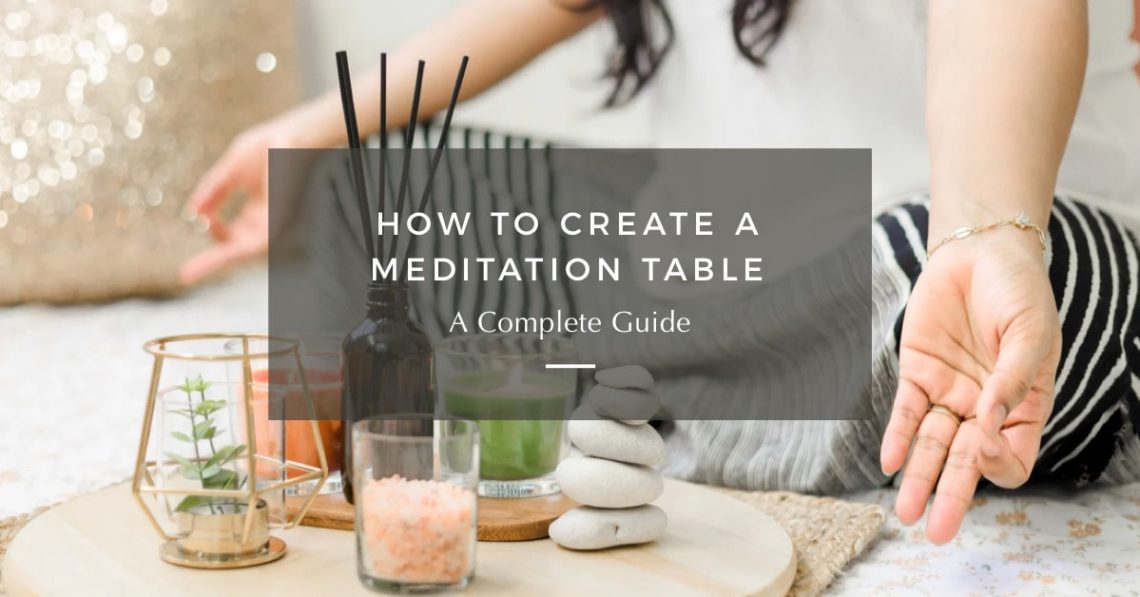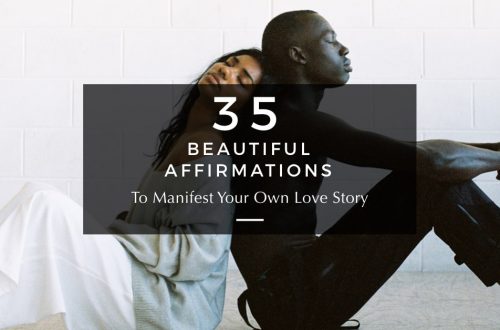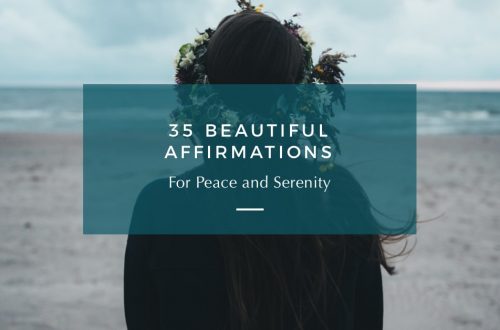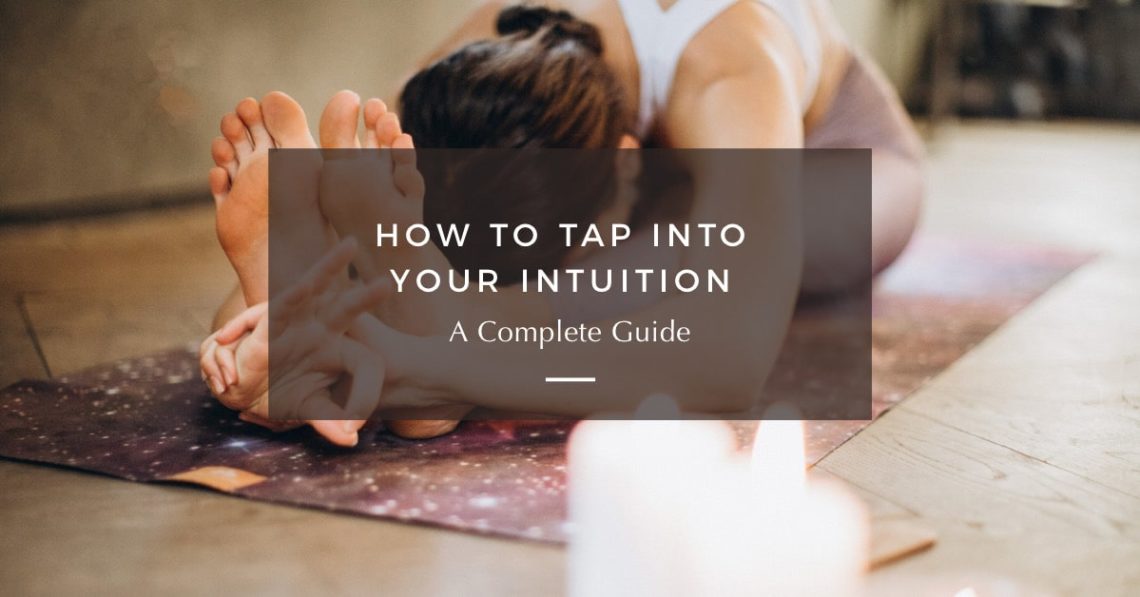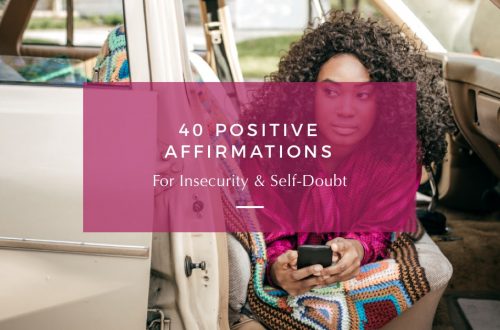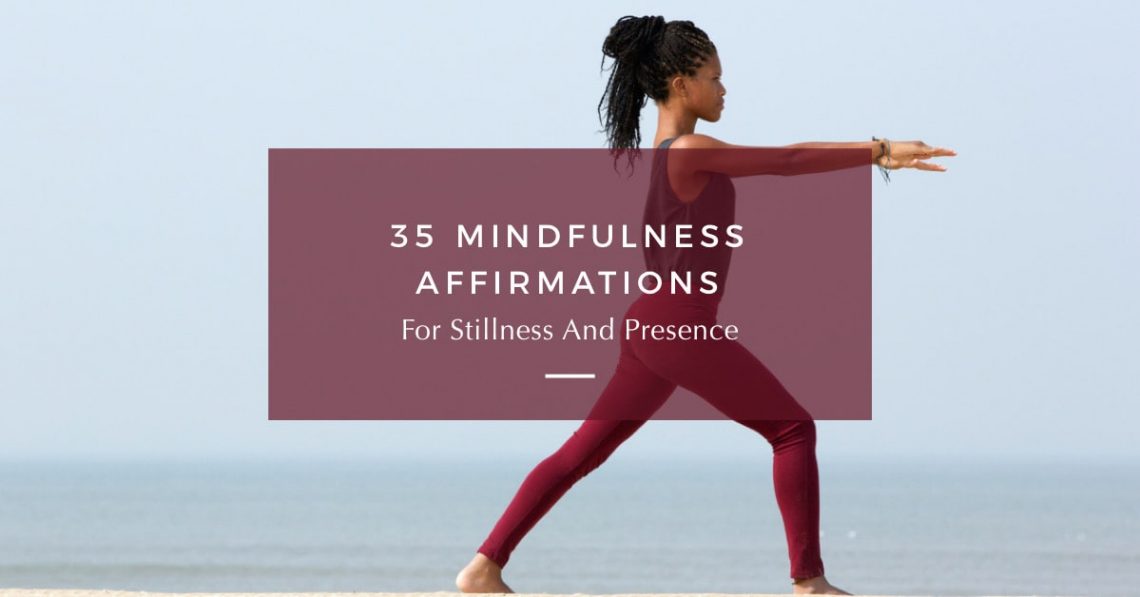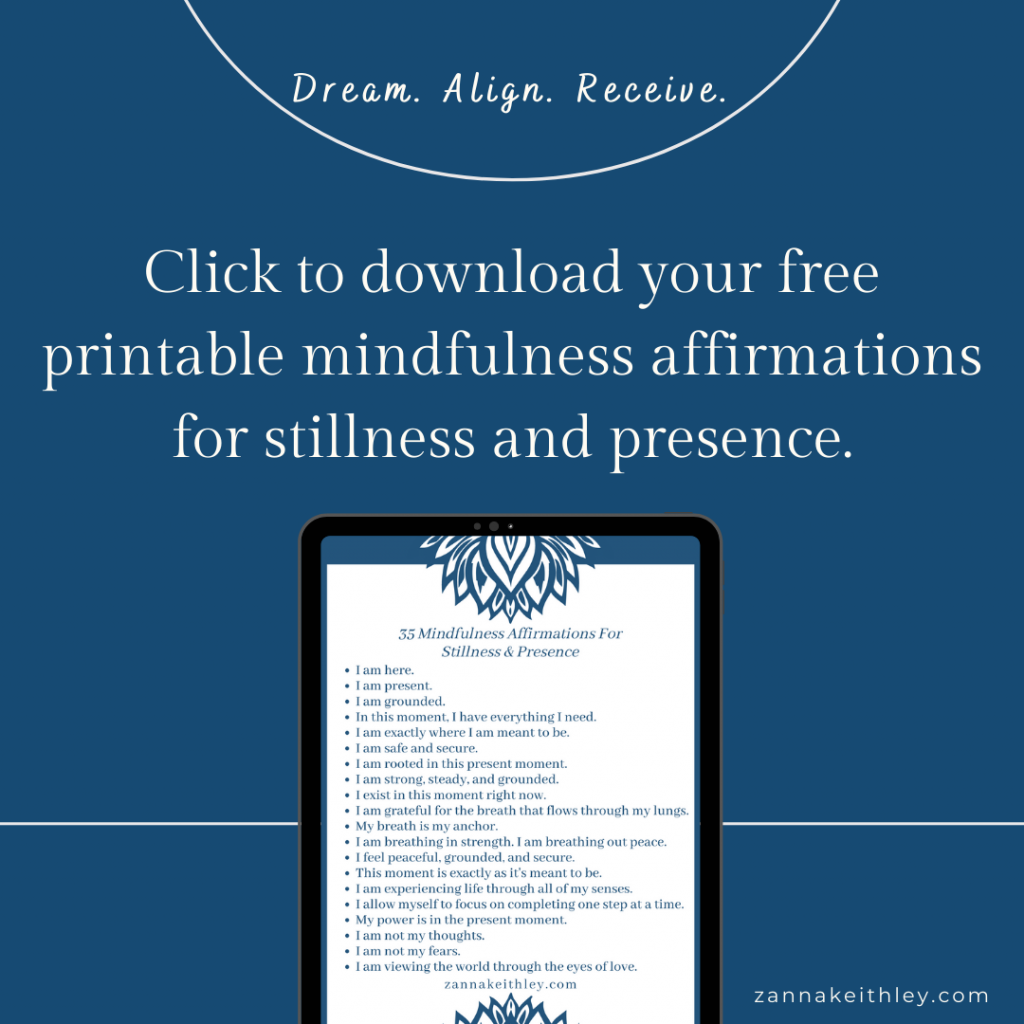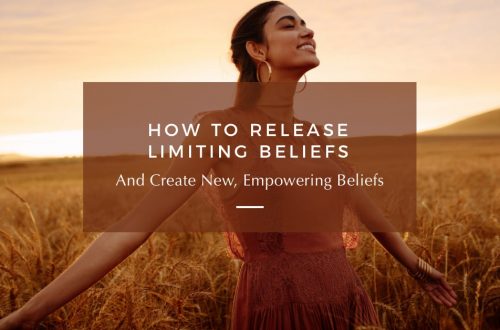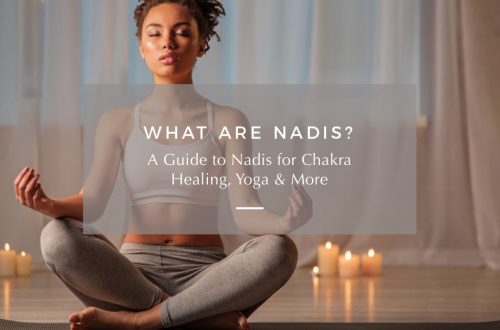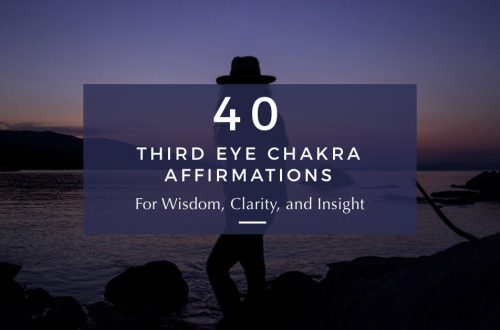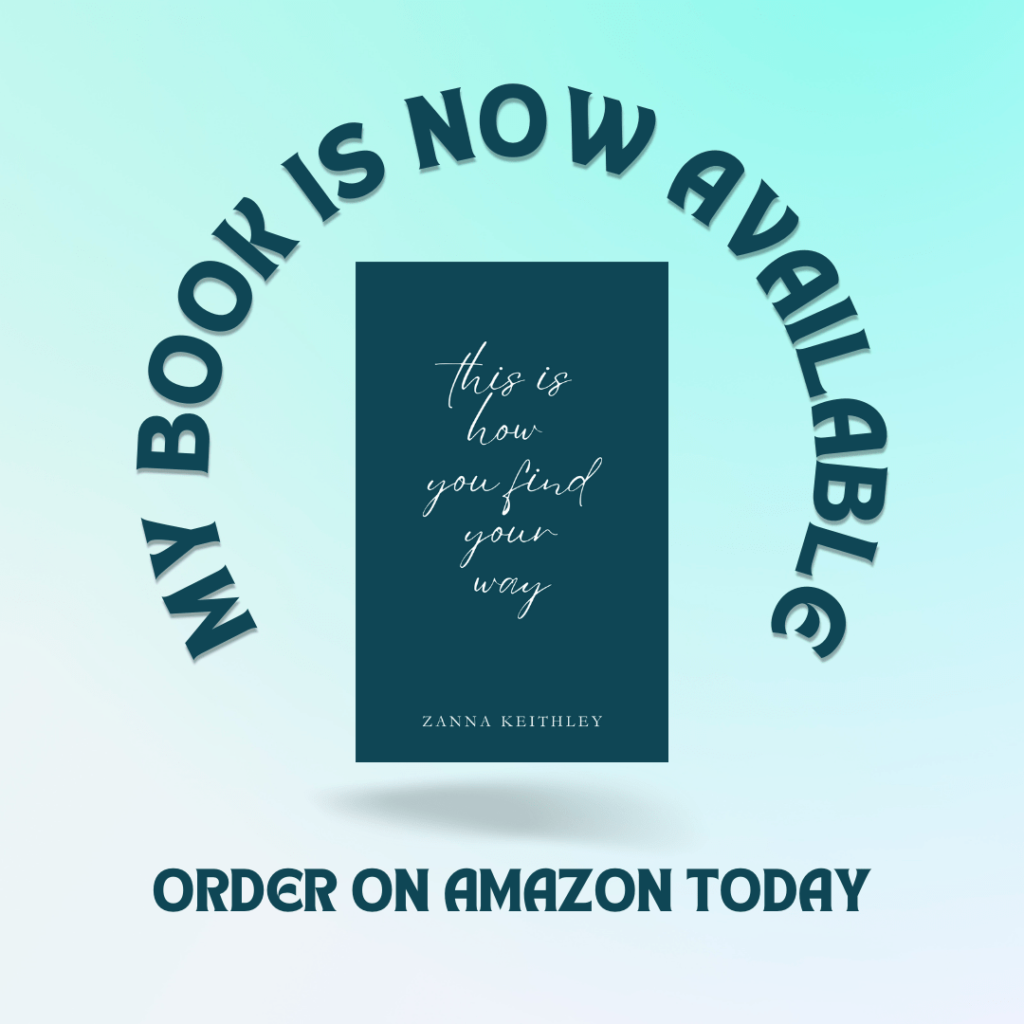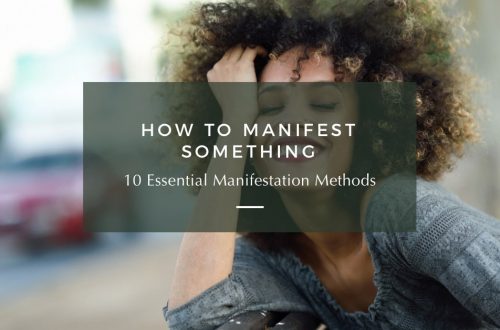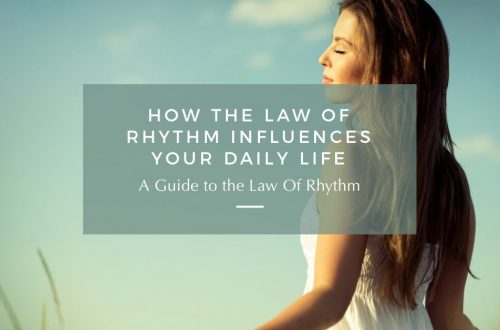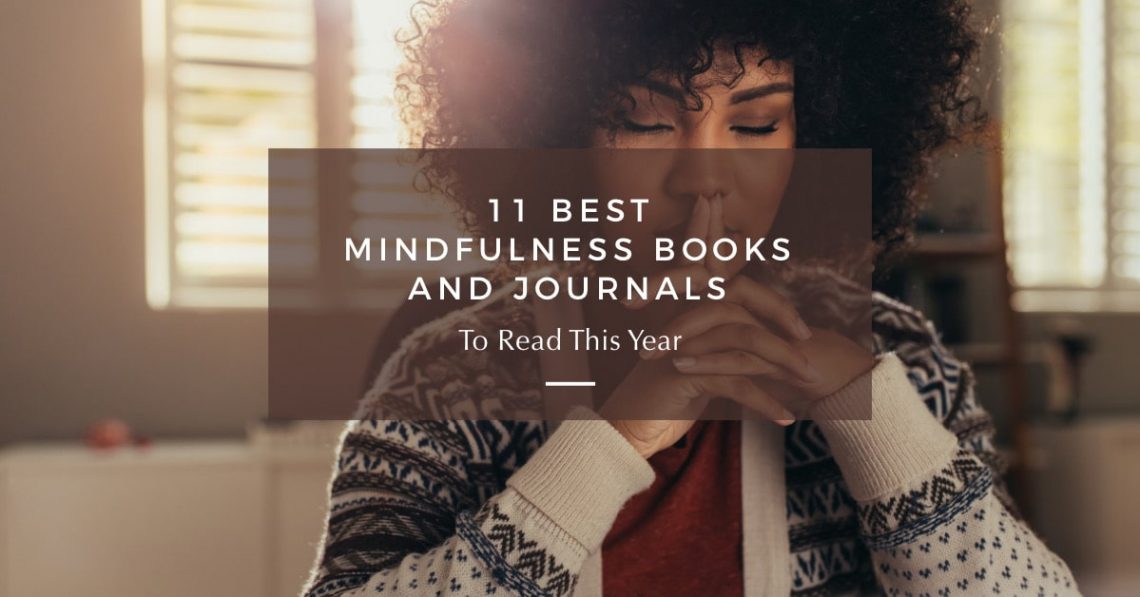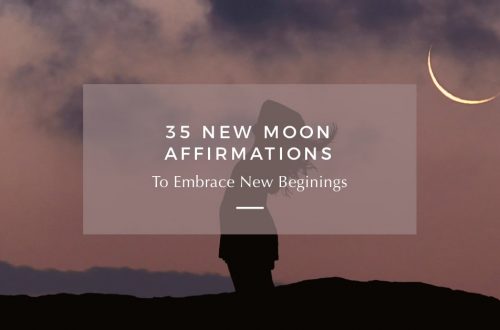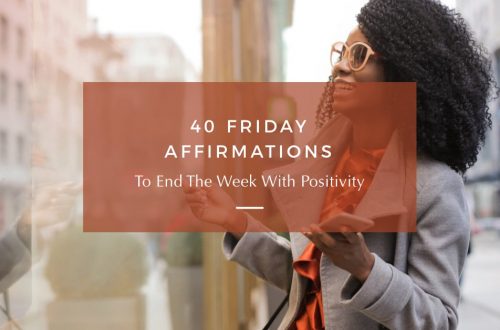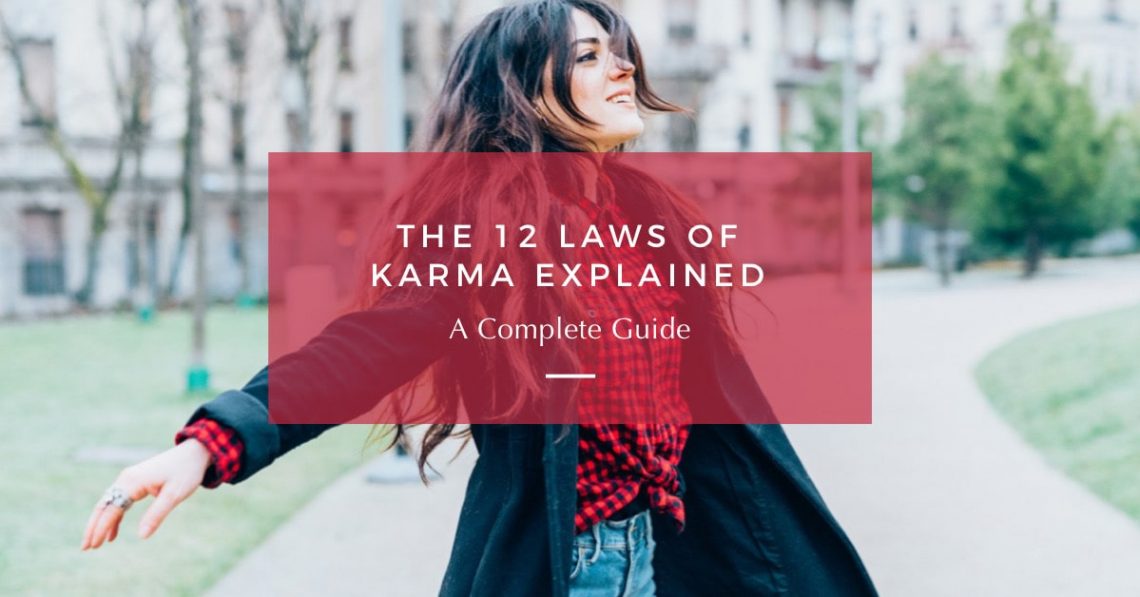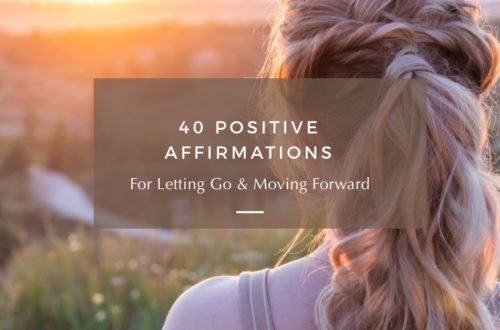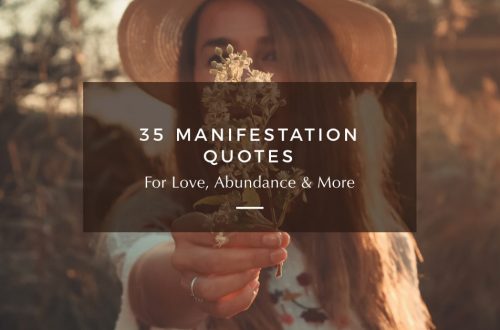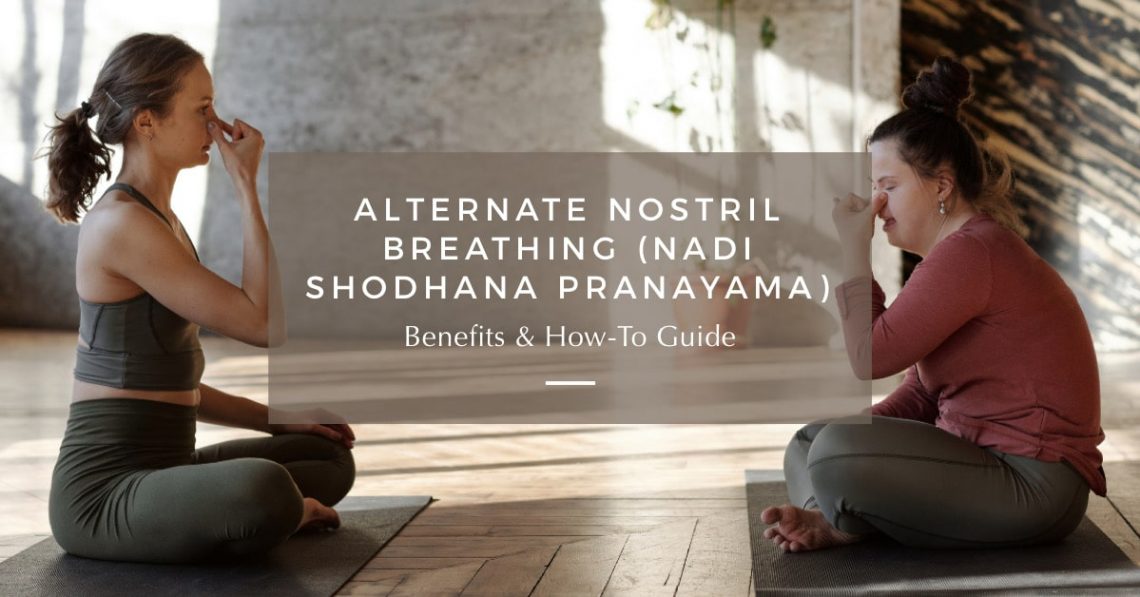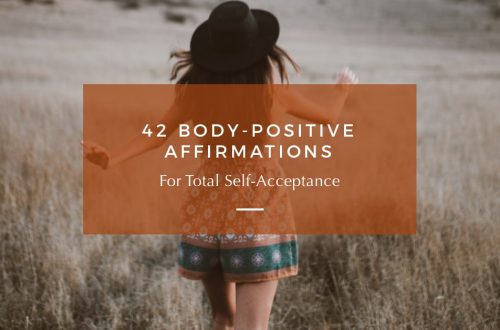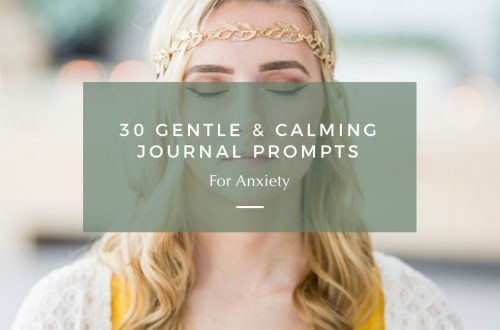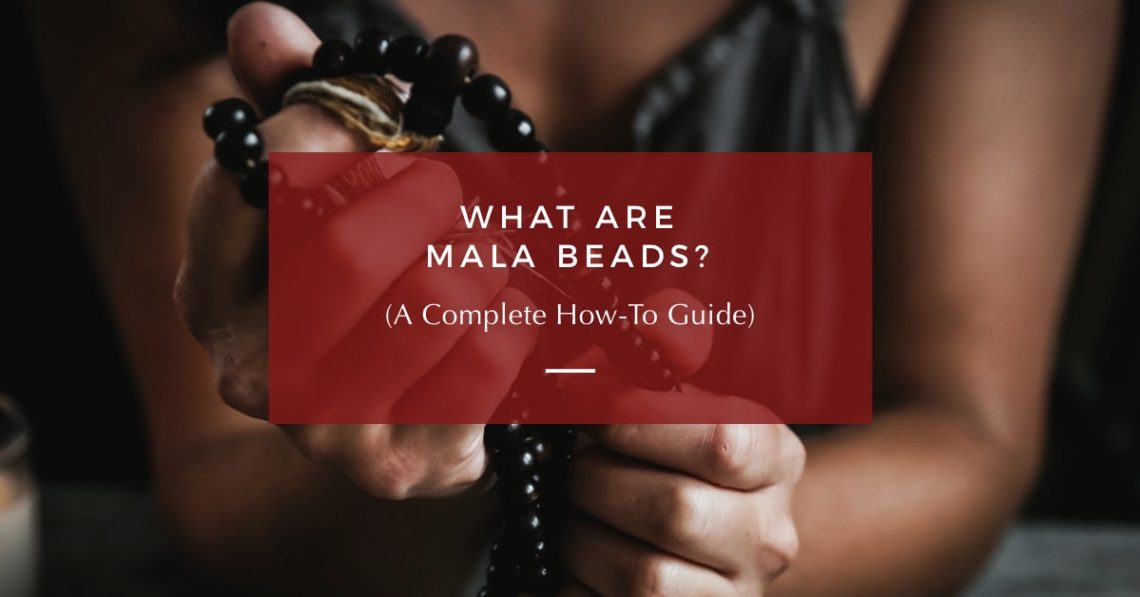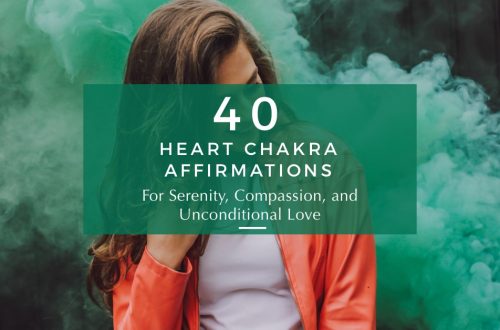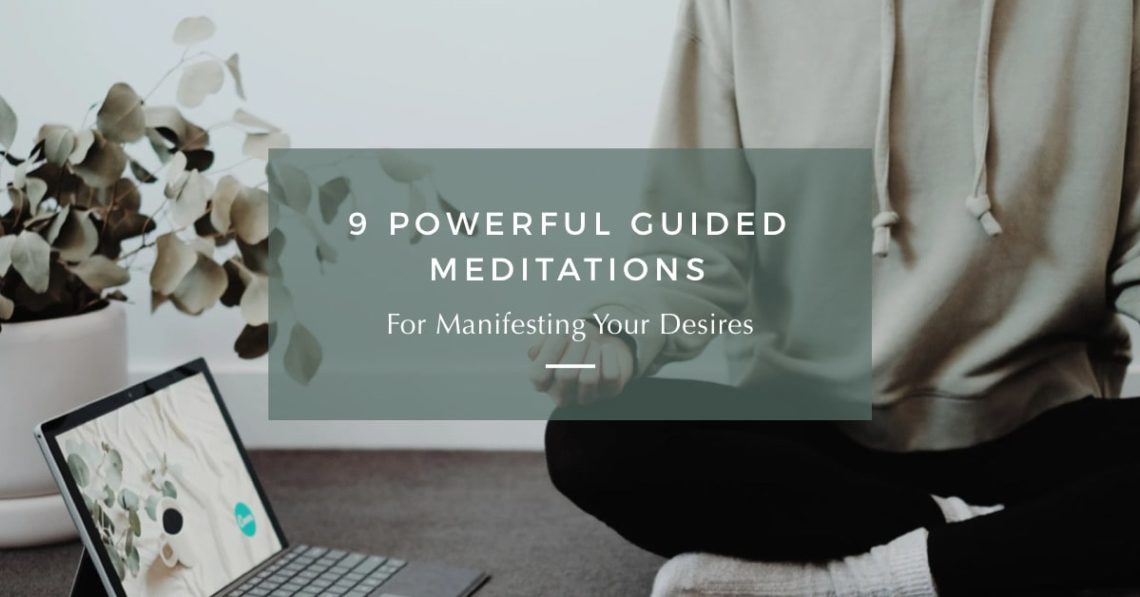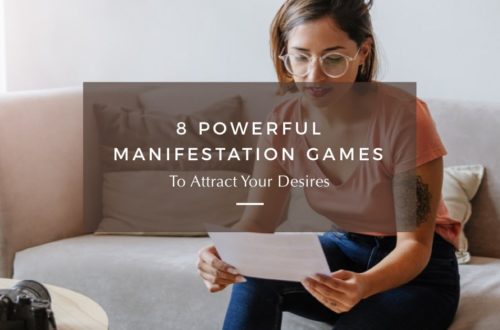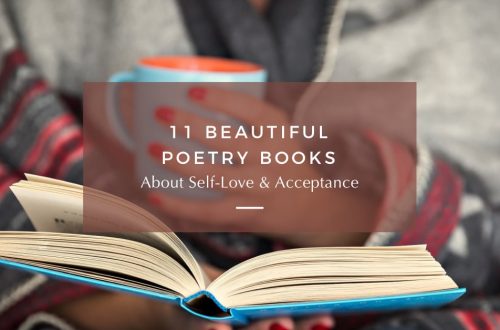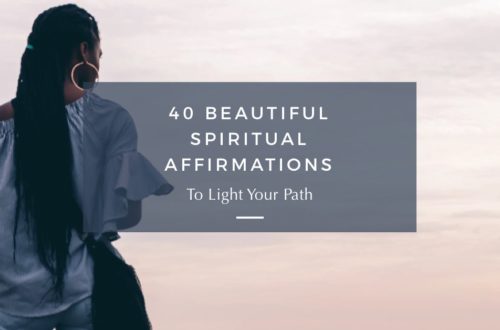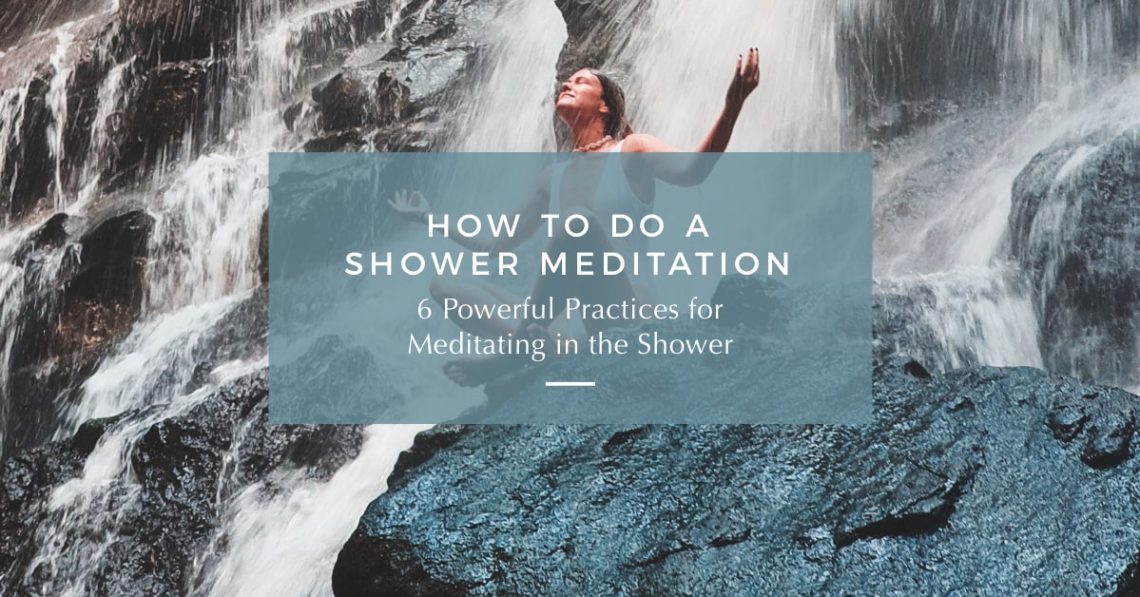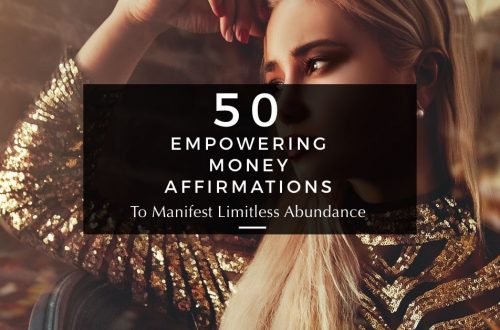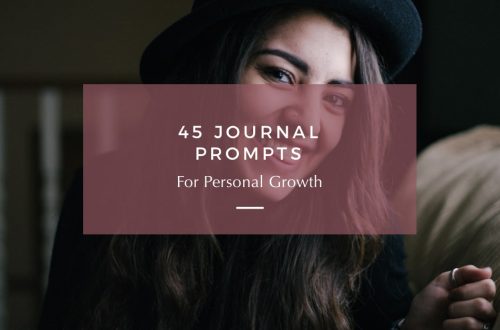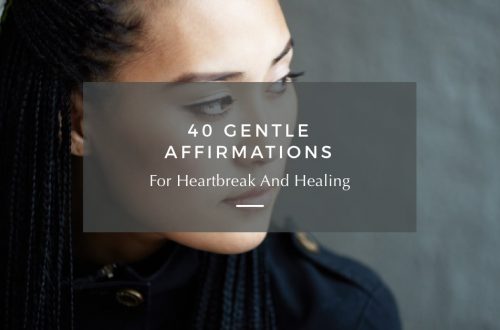-
How to Create a Meditation Table (A Complete Guide)
Are you looking to create a sacred space of your own that promotes feelings of tranquility and supports your total well-being? Discover everything you need to create your own meditation table, with over 50 links to tables and decor so you can start creating your perfect meditation table today.
Disclaimer: This post contains Amazon links. As an Amazon associate, I earn from qualifying purchases. If you purchase a product using my link, I may receive a small commission at no extra cost to you. You can read my full disclosure policy here.
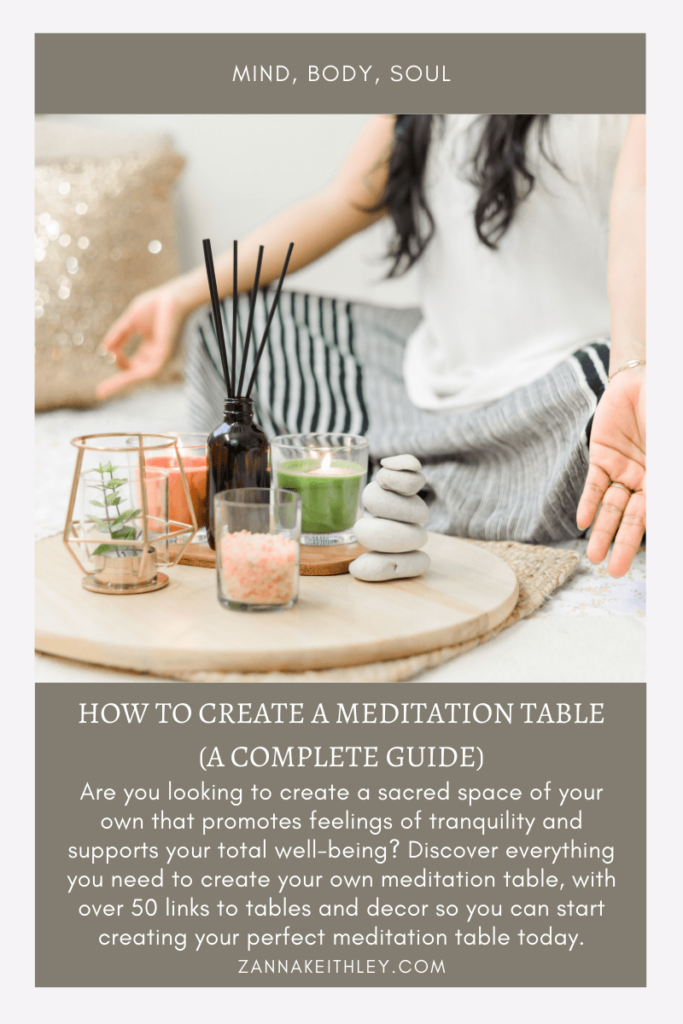
Pin this for later! How to Create a Meditation Table (A Complete Guide) How To Create A Meditation Table
A meditation table is a dedicated sacred space that promotes feelings of peace, calm, and tranquility within. The table itself is usually a small flat surface (i.e. a table, desk, or bench) with space around it for you to sit, meditate, and connect to your innermost self.
But the physical surface you choose is only half of what makes a meditation table such a profound tool for your spiritual growth.
Just as important are the objects you choose to set on and around the table.
I keep my meditation space pretty simple with just a meditation cushion to sit on and some of my favorite crystals and stones (Amethyst, Blue Lace Agate, Celestite, and Clear Quartz) on a small table nearby.
However, you can add as much or as little as you want here; crystals, candles, dried flowers, books, affirmation cards, and objects that hold significant personal meaning to you are just a start.
You can also add rugs, cushions, and other textiles to create the feeling of a complete, dedicated sacred space designed to serve and support your total well-being: mind, body, and soul.
So really, it doesn’t matter what you choose as long as it feels good to you.
What nourishes your soul? What feeds your spirit? What helps you connect with your truest, most authentic self?
Think about it this way:
You spend hours every day living externally–running errands and answering emails and completing to-do lists. Imagine that at the end of the day, you have a safe place where you can pause, breathe, and come home to yourself.
What does this look like?
Because that’s what this is really about. Yes, of course, this is a place to meditate. But it’s also so much more.
You can set your daily intentions here. You can pull affirmation cards. You can write in your gratitude journal.
Or you can just come here to take a deep breath and place your hand on your heart and breathe.
The important thing, really, is that it’s yours. Your space to feel safe. Your space to laugh or cry or whatever you need in the moment. Your space to continually come back to yourself, over and over again.
To help you get started, I’ve linked to items you can use to create your sacred space. I’ve also included answers to frequently asked questions regarding setting up and using meditation tables. You can use the links below to jump to the section you want to learn more about.
In This Article
Meditation Table FAQ
Does my meditation table have to be a certain size or shape?
Definitely not! Your meditation table can be as big or as small as you choose. Remember, bigger doesn’t always mean better. If you have only a small corner to dedicate to your sacred space, that’s more than enough. Choose a meditation table that fits your needs; dimensions and aesthetics are completely up to you.
What do I put on my meditation table?
Choose items that resonate with you. This meditation table belongs solely to you, and all that matters is the feeling the items bring when you look at and/or touch them.
You can put as much or as little on your table as you’d like; in fact, you don’t have to put anything on it at all if your soul desires a clean, empty space.
The most important thing is to choose items that help you to connect with your innermost self and that bring a sense of peace, calm, security, love, and connection with yourself and the world around you.
How do I set up my meditation table?
Set up your table in a way that feels calming to you. If you like everything neat and organized, then you might set it up so it looks balanced and orderly. If you think a little messiness is kind of beautiful, then you might let your inner creative take the reins and place items wherever your heart wants them to go. You might also test out a few different setups and pay attention to how each setup makes you feel.
Ultimately, do what makes you feel good. That’s it. Nothing else matters here.
How do I use my meditation table?
When you create your meditation table, take some time to set a purpose and intention for how you want to use this space. You can, of course, meditate in front of your table. You might also choose to come here in the morning to set intentions, recite affirmations, and express gratitude. When you’re seeking answers, this might be a place to look for them within. You might also like to sit at your meditation table after work to release the day and invite a sense of calm and peace into your evening.
Meditation Tables
To create your serene meditation table, you first want to start with the foundation on which you’ll be building upon: the table itself.
You may already have a piece of furniture in your home that would work perfectly for this function. If you’re a DIYer, this is a great opportunity to get creative as you check out local yard sales and thrift stores for the inspiring piece that speaks to you. Sand, stain, paint, or leave it perfectly imperfect: whatever feels right to you.
If you’re looking for something beautiful and new, the links below offer an array of styles to fit every price range. Just make sure to double check the dimensions to ensure the table fits your space!
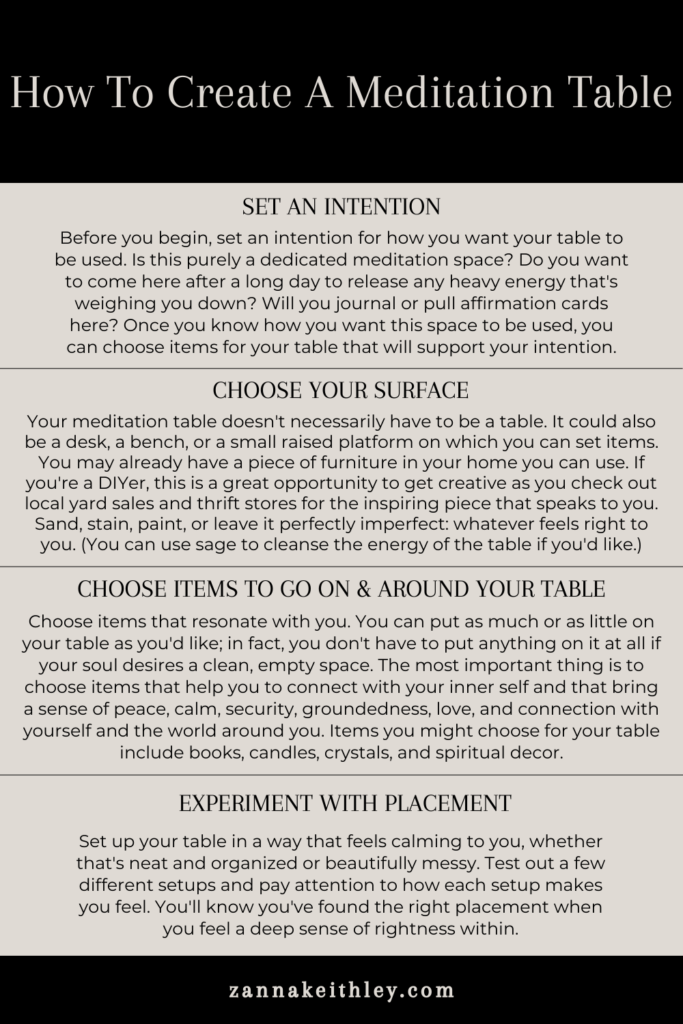
Items For Your Meditation Table
Books
There’s something special about being surrounded by books filled with beautiful words that soothe your spirit or delight your imagination. Even just setting a few books on your meditation table can fill you with serenity, inspiration, and creativity. Choose books that reach deep into your soul and speak to you. Below are a few options to get you started. For more inspiration, check out my article on the 11 best mindfulness books and journals to support your journey.
Signs: The Secret Language of the Universe by Laura Lynne Jackson
Inward by Yung Pueblo
The Four Agreements by Don Miguel Ruiz
Daily Rituals: Positive Affirmations to Attract Love, Happiness, and Peace by Phoebe Garnsworthy
Sacred Woman by Queen Afua
Dear Universe by Sarah Prout
Candles
If you’re a candle lover like me, then the concept of “too many candles” doesn’t exist. Candles bring a deep sense of calm, tranquility, and peace within. It’s also a powerful meditation practice to stare into the dancing flame of a candle and let it wash over your being.
Crystals and Stones
Another thing I’m pretty sure you can never have too many of? Beautiful crystals and healing stones. When choosing crystals and gemstones, you can either pick ones that have specific meanings, or you can simply choose ones that speak to you. If you see a crystal and feel pulled to it, trust your gut. To help you get started, check out these guides on crystals for new beginnings and crystals for manifestation.
Affirmation Cards
Affirmation cards are a truly powerful addition to your meditation table or sacred space. One profound practice is to sit at your table every morning, surrounded by quiet and stillness, and pick one card from your affirmation card deck. Read the affirmation, and feel the positive words in every cell of your body. You can also spend a few minutes reflecting on what the words mean to you. I love that this is a practice you can do in five minutes or less that will have a meaningful impact on your entire day.
Below are a few of my favorite affirmation card decks to help you get started. And for more ideas on what you can do with your deck, check out my guide on how to use affirmation cards.
Moon Decor
This is for anyone who feels a deep connection with the moon. If you’d like, you can print out or purchase a moon calendar for the year and incorporate rituals into your routine that correlate with the moon’s phases. (For instance, setting new intentions during the New Moon.) To help you get started, you can check out this moon phase calendar from moonconnection.com.
Meditation Materials & Decor
Everyone’s meditation and spirituality practice looks different, so there isn’t a one-size-fits-all product here that will suit everyone. Once again, choose what calls to you.
Spiritual Decor
Again, everyone’s spiritual practice looks different. So once again, choose items that feel right to you. Whether that’s a Buddha figurine or a Mother Gaia statue, or something else completely, open your heart to what resonates most to you.
Cushions, Rugs, and Textiles
Finally, this last category is all about what’s surrounding your meditation table: meditation cushions and benches, rugs, tapestries, canopies, and anything else you fill your space with. You can turn your meditation table into a loving sacred space where you nurture your mind, body, and spirit.
And for anyone who might be skeptical of meditation cushions: So. Was. I. And then I tried one, and within five seconds of sitting on it, I was a believer. (I own the exact Florensi meditation cushion I link to below and use it every single day.)
Have you created your own meditation table? What items do you like to place on and around it? Share your tips for how to use a meditation table to support your mind, body, and soul in the comment box below!
And for uplifting affirmations, chakra resources, meditation tools, self-love encouragement, and more, be sure to follow me on Pinterest and Instagram!
More Articles You May Like
- Sacred Self-Care For The 7 Chakras (A Complete Guide)
- Vision Board Ideas To Visualize Your Ideal Future (With Examples)
- 8 Powerful Guided Meditations For Manifesting Your Dreams
- 30 Journal Prompts For Self Growth (& Deeper Self-Love)
- 11 Beautiful Poetry Books About Self-Love & Acceptance
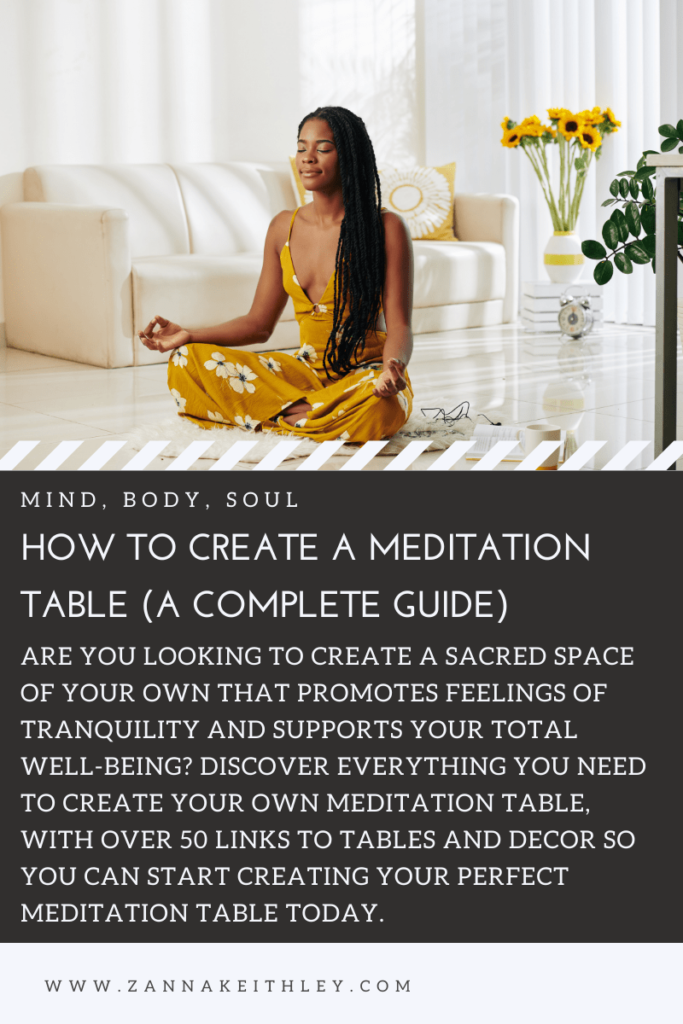
Pin this for later! How to Create a Meditation Table (A Complete Guide) 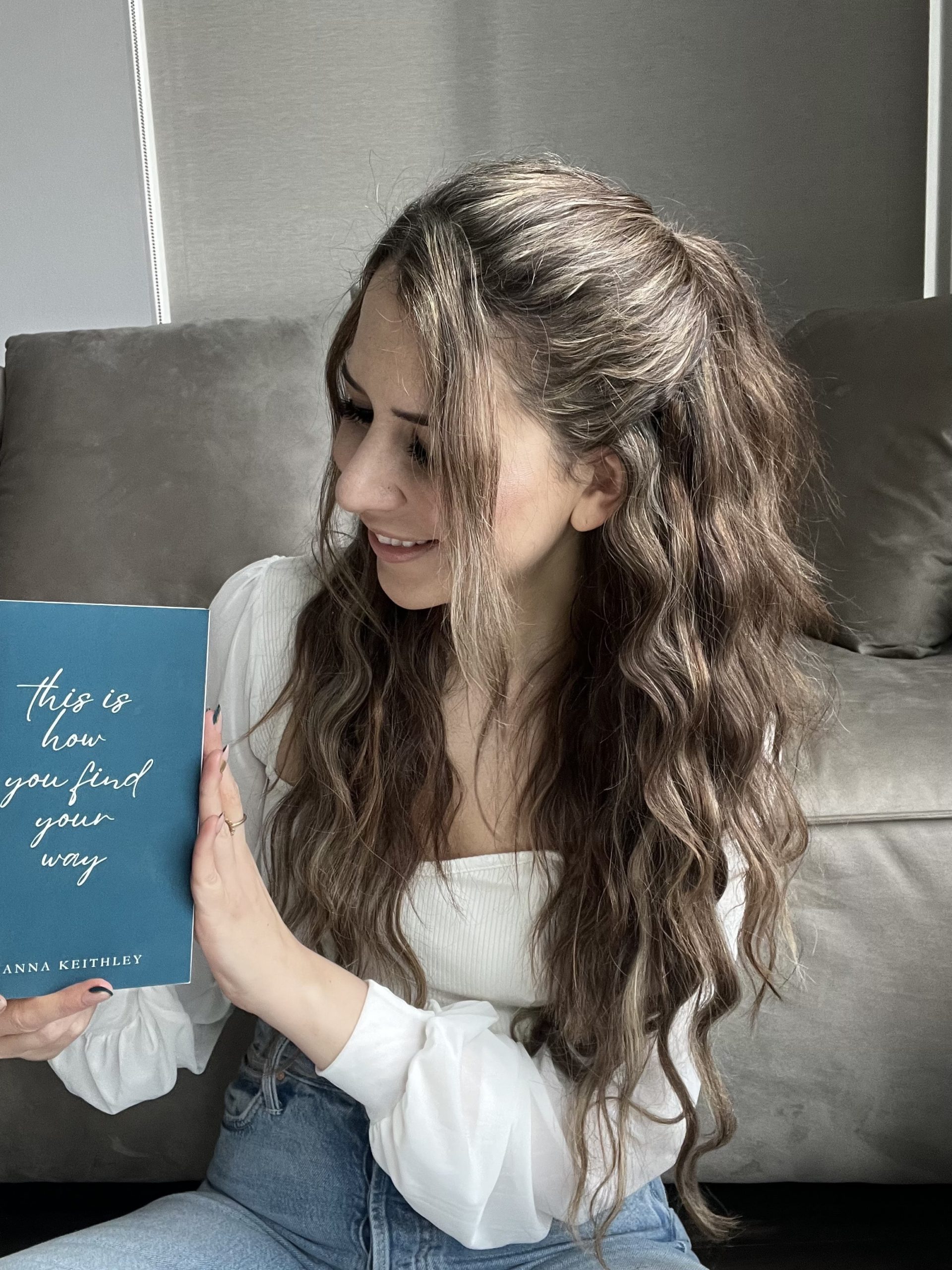
Zanna Keithley is an author, poet, and social media content creator who writes short prose dedicated to inspiring readers to follow their dreams, trust their intuition, and create beautiful and fulfilling lives. You can find her original writing on Instagram @zannakeithley.
-
How To Tap Into Your Intuition (The Ultimate Guide)
In this article, learn how to tap into your intuition, plus discover what your intuition should feel like, how your intuition relates to manifestation, and what to do if you don’t like what your intuition is telling you.
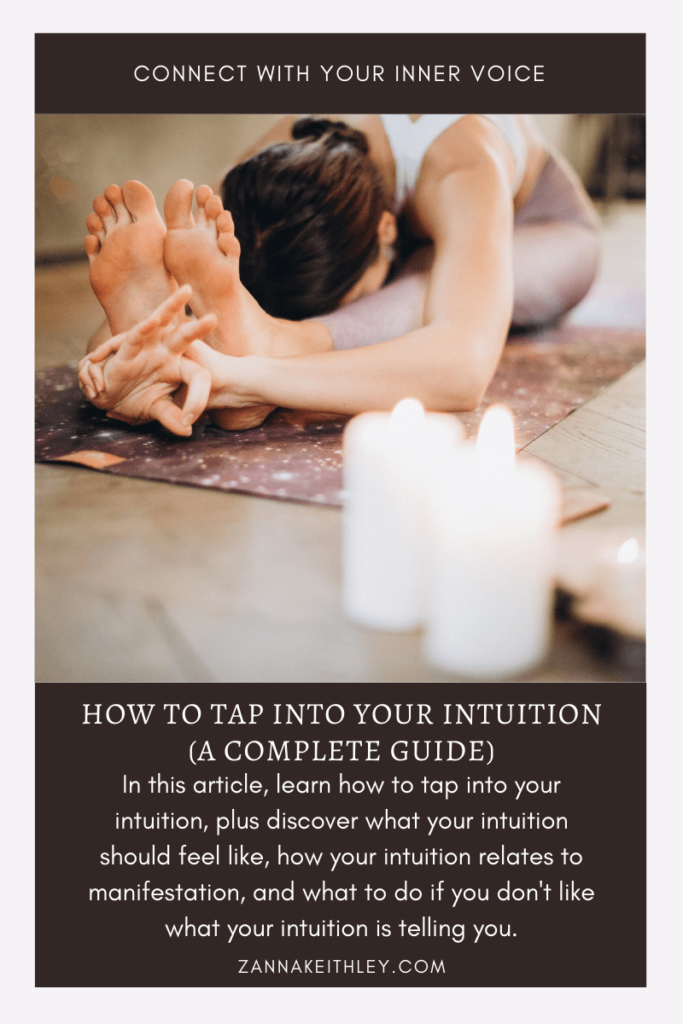
Pin this for later! How To Tap Into Your Intuition (A Complete Guide) What Is Your Intuition?
In many ways, your intuition is the least glamorous thing about you. It isn’t showy. It doesn’t like to be the center of attention. It’s so subtle, in fact, that many people question whether theirs works.
Right away, I’m here to tell you that you do have one, and it does work. You’ve probably even encountered it recently.
We all possess a deep inner knowing softly whispering inside of us—we just don’t always listen to it because our cognitive minds are so busy worrying, stressing, second-guessing, developing worst-case scenarios, and overthinking.
The second your intuition nudges you to do something out of the norm, your logical brain says, “Hold up, but what about all these 5,000 things that can go wrong?”
And sometimes, you actually hear your intuition loud and clear, but you don’t really want to listen to it.
- Your intuition may tell you it’s time to break up with your partner, but you’re terrified of change and don’t want to cause another person pain.
- Your intuition may tell you not to accept that seemingly perfect job with the great pay, but how could you turn down that money?
- Or your intuition may tell you that you need some more time to yourself before you dive into another relationship, but you really hate being alone.
If you want to strengthen your relationship with your intuition, there are some key practices you can start doing today.
In This Article
- How To Tap Into Your Intuition
- What Does Your Intuition Feel Like?
- Your Intuition & Manifestation
- What If You Don’t Like What Your Intuition Is Telling You?
How To Tap Into Your Intuition
Below, find six practices to help you tap into your intuition, plus a few additional exercises you can try. Consistently following these practices will strengthen your connection with your intuition and help you tap into this deep inner knowing with ease.
Quiet Your Mind
The first step to take to start connecting with your intuition? Listen.
You can’t hear what your inner voice is trying to tell you if you’re constantly immersed in noise.
The quickest and most profound way to start connecting with your intuition is to let silence be a normal part of your life.
If you have a daily meditation practice already, you may already be benefitting from these regular encounters with silence and stillness.
And if you don’t have a meditation practice, that’s okay. I know meditation may seem overwhelming at first. This is partially due to the myth that meditation requires you to have no thoughts. This is one of the biggest misconceptions about meditation and why many people believe meditation isn’t for them.
But if you listen to just about any meditation teacher, they’ll tell you the same thing: meditation is not about clearing your mind of thoughts. If it was, I’m not sure any of us, not even the most advanced meditators, would ever succeed. The last thing we want to do is suppress or evade our own thoughts.
At its heart, meditation (especially practices rooted in mindfulness) is about non-judgmental observation, conscious awareness, and gently rooting yourself in the present moment. It’s a chance to step away from the external noise and come home to yourself for a little while.
And this is where your intuition shines: in the quiet places where you can simply be.
The paradox of using meditation to connect with your intuition is that you’re not actively going to try to connect with your intuition during your meditation. If you sit in silence and try to force something to come forward, you’re likely going to put excess pressure on yourself; in turn, this often causes frustration and anxiety.
The key is patience. Sit in stillness for ten minutes today. Then, sit in stillness for ten minutes tomorrow. Day after day, keep sitting in stillness for ten minutes at a time. Don’t try to force anything. It will come on its own. All of the mental clutter will start to clear up, and your intuition will come forward.
- You May Also Like: Meditation Practices For Beginners
Practice Mindfulness
One of the biggest barriers to connecting with your intuition is being anywhere but where you are right now.
What do I mean by this?
As you go about your day, it’s easy to get lost in thoughts about the past or future. You might find yourself replaying yesterday’s events or worrying about the days ahead. When this happens, your mind becomes so busy with troublesome thoughts, you lose your connection with that quiet voice within.
Mindfulness is the key to returning to this moment right now and getting in touch with your inner knowing.
First, let’s take a step back and talk about mindfulness itself. What is it, and why is it so important?
Mindfulness is non-judgmental, conscious awareness in the present moment. This means being aware of what’s happening within and around you in this moment. How does your body feel? Where do your thoughts stray? Are you experiencing any anxiety or tension? What can you perceive with your five senses?
The key here is not to judge anything you notice. Don’t label any of it as right or wrong. Just notice.
So why is mindfulness important when it comes to connecting to your intuition?
Mindfulness allows you to become aware of what’s happening within and around you in this present moment.
Remember, your intuition isn’t flashy. Every once in a while, it might scream at you, like when it knows you might be walking into a dangerous situation. But for most of the daily stuff, it tends to remain soft and quiet, like a soft whisper deep inside you.
You can’t always expect it to speak up louder; instead, you must consciously step away from all the mental chatter so you can hear it.
Mindfulness quiets the noise of your worries, fears, judgments, and daily stresses so you can hear what’s really going on in the deepest parts within.
If mindfulness is new for you, you can check out some helpful mindfulness exercises you can try to start practicing mindfulness throughout your day.
Truly, I can’t emphasize enough how important mindfulness is in connecting to your intuition. It may feel like this is a slow process, but I promise, if you consistently practice mindfulness techniques for a month straight, you’ll begin noticing shifts within yourself.
This is the bridge to connecting to that quiet voice within: being consciously aware of what’s happening inside you in this present moment, without judging what’s going on. Simply listening. Breathing. Being.
Cultivate Calm
I’ll keep this one short: clarity comes with calm.
People don’t usually make good choices when they’re feeling stressed, worried, angry, or depressed.
Connecting with your intuition requires you to first do the two things I mentioned above: quiet your mind and practice mindfulness. Mindfulness will allow you to recognize that you’re feeling “low” or “off.” By recognizing your own low mental state, you can choose not to make any big decisions at that moment.
Conversely, it will help to bring clarity when you’re experiencing a more positive mental state. This is when the magic happens. When you’re experiencing a sense of calm and inner peace, that’s when you’re in greatest alignment with your inner knowing.
Start consciously working with your intuition during moments when you’re feeling really good. I started with walks around my neighborhood. During these walks, I always felt calm, grounded, and connected to my higher self. So I started asking my intuition to guide me when I should turn and where I should walk next.
Most of the time, nothing really happened. And that’s completely okay. Sometimes, when you work with your intuition, nothing will actually seem to happen around you. This is normal. Just because nothing happens around you doesn’t mean you’re doing anything wrong.
Keep practicing in these moments. This is preparing you to trust your intuition for those bigger moments when you do feel that soft nudge within.
Practice Picking Up Signals From People Around You
Think of the people you spend the most time with: family, friends, coworkers. How often have you taken one look at a person you’re close with and known that something was wrong?
What about those times when it’s less obvious? Someone may seem fine on the surface, but you can just tell that something’s off. They seem distant. Distracted. Heavy.
Start approaching your daily interactions with the intention to pick up on any underlying feelings that may be going on beneath the surface. When you begin your interaction, ask yourself, “What do I feel from this person right now?” See if you can name that underlying feeling.
As you continue to practice this, it will become easier to tap into that feeling within. In time, this will expand into other areas of your life. Not only will you be able to connect with your intuition when interacting with other people, but you’ll feel those subtle hunches when it comes to your own life path.
Take Days Off
This directly correlates with what we’ve discussed in some of the different points above: make space for stillness, step back from the noise, and give your soul a chance to take a deep sigh of relief.
If you’re currently immersed in a cycle of feeling stressed and busy all the time, you’re going to have a difficult time connecting with your inner knowing. See if you can plan days throughout your month where you don’t have anything on the to-do list. Do things that make you feel calm and at ease.
Again, you don’t have to actively try to make your intuition come forward. Let it come to you.
And to add to this, spending time in nature and taking social media breaks will also help you escape all the outer noise and connect to your inner self. You’ll often hear about these practices when it comes to self-care and taking care of your mental and emotional health, but they have the added benefit of also helping you develop and strengthen your intuition.
Connect With Your Body
You’ll experience your intuition in goosebumps, shivers, chest pressure, and inner aches. You’ll also experience it in more subtle feelings and hunches.
The better connected you are with your body, the more you’ll be able to pick up on subtle changes happening inside you.
Yoga and meditation are two practices you can use to connect with your body. You can also practice simply standing with your two feet on the ground, closing your eyes, and connecting with how you feel.
Connection also comes just by paying attention.
Take moments to pause throughout the day and ask, “How does my body feel right now?” Answer without judgment. The more you practice this, the easier it will become to pick up on any understated shifts that happen within.
A Few More Practices
In the long-term, mindfulness and meditation are the two practices that will have the most profound effect on how you connect with your intuition. However, if you want to start working with your intuition more closely right away, there are plenty of other meaningful practices you can try today. Here are a few examples:
- One of my favorite things to do is go into a store that has crystals and gemstones and let my intuition guide me to pick out a new gemstone for myself. (The small ones are often as inexpensive as $1, so this doesn’t have to cost a lot of money.) Once I pick out my stone, I’ll take it home and read about the spiritual meaning of that gemstone. Then, I’ll think about why my intuition may have led me to that stone. Is it because of the spiritual meaning, or does it simply have a feeling of positive energy? There’s no right or wrong answer here. It’s just a fun and easy practice for developing your intuition, plus you get a new crystal or gemstone from it. You also don’t exclusively have to do this practice with crystals. Pick something you like that makes you feel good, like flowers, books, jewelry, or candles.
- Working with oracle cards is also a great way to develop your intuition. Pick a card, and before you consult a guidebook, let your inner knowing interpret the meaning of the card.
- You might also start keeping a dream journal. Try to write what you remember about your dream shortly after you wake up. (The sooner, the better.) Consider if your intuition was trying to tell you something within your dream. You might also see if your intuition can help you uncover any deeper meanings or symbolism in the dream itself.
- A pendulum is another great tool for developing your intuition. It’s most often used to gain insight and clarity when there are areas of uncertainty in your life. Anytime you have a question and are looking for help or advice, you can use a pendulum to receive guidance from a higher power.
What Does Your Intuition Feel Like?
Your intuition can be so subtle, it’s often difficult to describe what it feels like.
For a situation in which you might be putting yourself in danger, the feeling will be louder and more obvious. Your heart will race, your palms will get sweaty, and that voice within will yell at you to turn around and find safety. Sometimes, your breath may quicken, and you’ll get shivers down your spine.
When you encounter these experiences, don’t question these feelings. And especially don’t question whether you’re overreacting. Err on the side of caution. Trust what you feel.
Most situations in life aren’t like this, though–especially when it comes to intuitive nudges you have about your own life path. Your intuition usually doesn’t speak in shouts but in whispers.
And often, it’s less of a feeling and more of a knowing. You’ll experience a sudden understanding: clarity that just comes to you, often unexpectedly. If something is off (maybe with a relationship or a business deal), there will be a part of you that just knows.
Your intuition comes from your heart’s consciousness, which isn’t always as easy to grasp as the logic and reason of your mind’s consciousness. Thus, you may try to talk your way out of whatever it is that you’re feeling. You may keep trying to reason with yourself and follow your logical mind.
And it’s okay; most of us have done this at some point in our lives. We’ve been taught to trust logic and reason over intuition and inner knowing. And that’s what can make following your intuition feel kind of scary—because it requires you to alter your mindset. It’s less about thinking your way forward and more about feeling your way forward.
Here are a few of the ways in which you might experience your intuition:
- An unexplainable “knowing”
- A feeling of “rightness”
- Clarity
- Ease
- Hunches
- A quiet voice within
- A recurring thought
- Goosebumps
- Shivers
- Racing heart
- An inner ache
- Pressure in your chest
- Physical discomfort
- Emotional discomfort
Your Intuition & Manifestation
So what role does your intuition play in manifestation?
First, let’s consider how manifestation works:
- You set an intention based on the authentic, deeply felt dreams that have been placed in your heart.
- You communicate this intention to the Universe. Your positive vibrations are one way of communicating this intention, as by vibrating at the frequency of your desires, you express that you’re ready to receive more of this good-feeling thing.
- The Universe works behind the scenes to set everything in motion. It communicates back to you in the form of messages, synchronicities, and most importantly, your own intuition. Being in the vibration of what you desire allows you to receive these signs and inner nudges with clarity. (In contrast, being in a state of stress, worry, and anger will cause you to miss these signs and feelings.)
- Then, you take inspired action based on the communication the Universe has given you. This leads you on your path forward.
The art of manifestation is the art of learning how to communicate with the Universe. You communicate every single day through your vibration. The Universe communicates back to you through your own intuition.
So if you’ve set an intention, that means signs, synchronicities, and inner nudges are going to come. Your job now is to listen and take inspired action. Once you do this, you’ll receive your next nudge forward. As you follow this path, you’ll be in divine flow with the Universe, and your manifestations will start to come alive.
I know this might sound like a long process, but I promise, it’s not. Depending on the specific dream, some things could come in months, weeks, days—even hours.
The key is not to worry about when it will come. Release the timeline and continue to focus on how you feel in the present moment. As you step forward on the path, the path will continue to reveal itself, one step at a time.
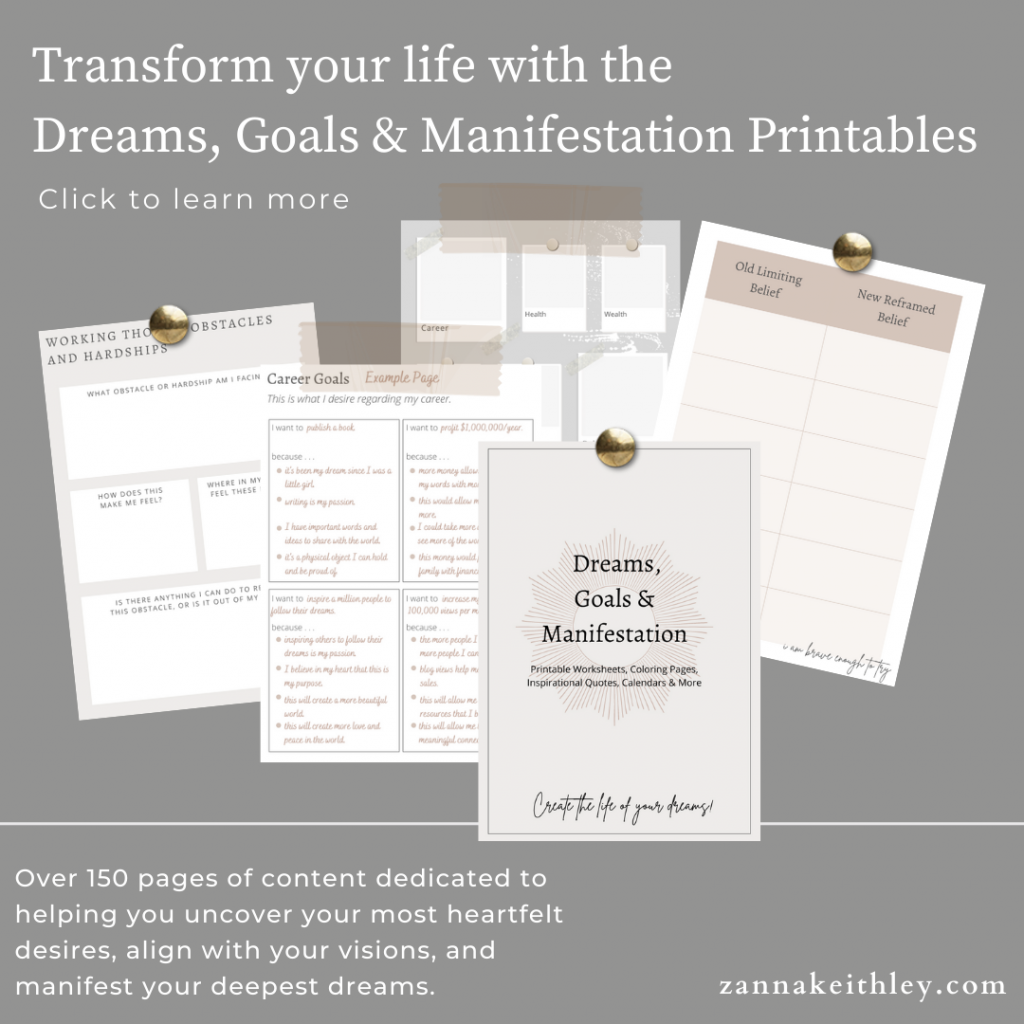
What If You Don’t Like What Your Intuition Is Telling You?
So let’s say you’re trying to manifest something, but your intuition is telling you to do the very opposite of what you think you should be doing. Often, when you want something, it’s because you imagine that outcome will make you feel a certain way.
- You may want to manifest a perfect partner, even though your intuition is telling you to take some time to be single, because you imagine the partner will make you feel loved.
- You dream of getting a prestigious position for a certain well-known company, even though your inner knowing says it’s not as perfect as it seems, because you imagine you’ll finally feel successful and worthy of your parents’ approval.
- Or you want to manifest money to live a more luxurious lifestyle, because you imagine this will make you feel like you’ve finally made it.
There’s nothing wrong with wanting these things for yourself. Nothing. It only becomes a potentially negative thing when it goes against your intuition.
This is when I urge you to step back and re-evaluate your overall goal. Take some time to pause. You can meditate, journal, or take a day off to spend time in nature. Set the intention to understand your desires and what you really want. Allow yourself to shift your vision.
Instead of going after that perfect partner, job, or lifestyle, set an intention to encompass the feelings of being loved, successful, worthy, beautiful, and empowered (or however you imagine this external thing will make you feel) right now in this present moment.
Focus on those feelings, and allow your intuition to guide you forward on your path. Trust that your inner knowing always has the right answers, and believe that the Universe will always take you where you want to go.
It may mean that your perfect partner isn’t supposed to come into your life right now, but you find that you feel so loved anyway, you’re okay waiting.
Even if what your intuition is telling you doesn’t make sense today, it will with time.
If you’re feeling lost, instead of searching for external answers to guide your path, sit in the quiet of your own mind for a little while.
You’ll often find you already have everything you need to take the next step forward.
For more resources on spirituality, meditation, manifestation, and all things self-love, be sure to connect with me on Instagram and Pinterest, where I’m posting positive affirmations and empowering messages daily.
You May Also Like:
- 30 Affirmations For Tapping Into Your Intuition
- What Are The 12 Laws Of The Universe? (A Complete Guide)
- 33 Profound Spiritual Healing Quotes To Guide Your Path
- 30 Journal Prompts For Self Growth (& Deeper Self-Love)
- What Is The Art Of Allowing? (A Complete Guide)
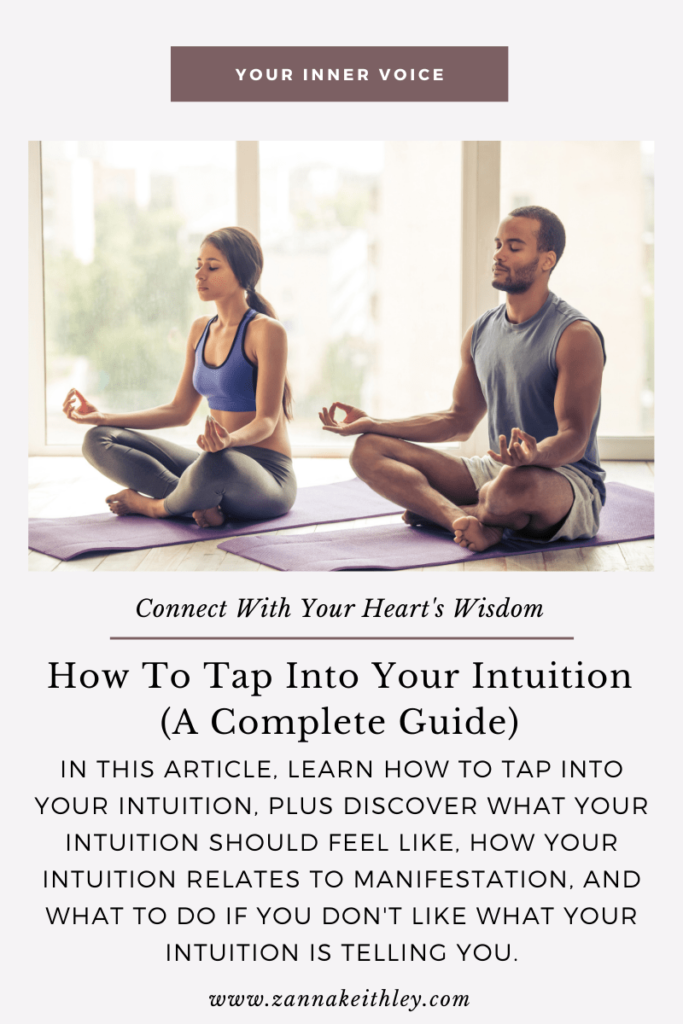
Pin this for later! How To Tap Into Your Intuition (A Complete Guide) 
Zanna Keithley is an author, poet, and social media content creator who writes short prose dedicated to inspiring readers to follow their dreams, trust their intuition, and create beautiful and fulfilling lives. You can find her original writing on Instagram @zannakeithley.
-
35 Mindfulness Affirmations For Stillness & Presence
Discover 35 mindfulness affirmations to help you remain grounded, centered, and rooted in the present moment, no matter what’s happening in your outer world. (And don’t forget to download your free printable affirmations below!)
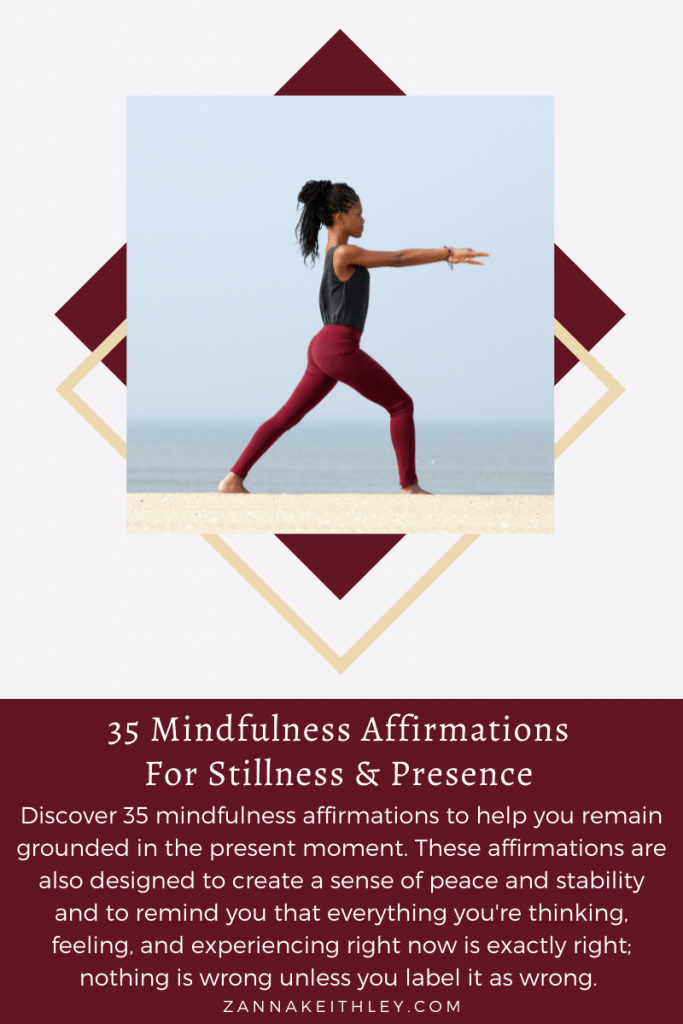
Pin this for later! 35 Mindfulness Affirmations For Stillness & Presence What Is Mindfulness?
The simplest definition for mindfulness is the art of noticing.
To live in a state of mindfulness means to be aware and present in this current moment, allowing you to notice what’s going on within and outside of you. And even more importantly, it’s rooted in non-judgment. That means that instead of forming opinions about what you see, you simply notice with objective, non-judgmental awareness.
To illustrate this, imagine you’re out on a nature walk. Remaining in the present moment, you notice the colors of the trees surrounding you. You notice the clouds hanging out in the sky above you. You notice the sounds the birds make and the coolness of the breeze against your skin.
You also notice how you’re feeling inside—maybe you feel peaceful and serene, or maybe you’re feeling a little stressed and off-center. You acknowledge how you’re feeling and keep walking, accepting these feelings as they are.
This seems simple enough, but consider how easy it is to get lost in your own thoughts: to replay events from the past or worry about the uncertain future. It could be very easy to get through the entire walk without even remembering what you saw, felt, or heard.
Mindfulness allows you to stay grounded in the present moment, but it’s also a little more; in addition to your conscious presence, it also allows you to refrain from criticism or judgment. Through mindfulness practices, you can notice things in your inner and outer worlds without labelling them as right or wrong.
For instance, if you noticed that you felt a little stressed and off-center on your walk, you wouldn’t label it as being “bad.” You would simply allow yourself to accept it, exactly as it is, without an urgent need to fix or change anything.
Mindfulness can be a profound practice for decreasing stress, improving your mood, increasing positive emotions, and improving your overall well-being. Meditation can help you cultivate more mindfulness in your daily life, but you don’t have to meditate to be mindful—mindfulness begins simply by paying attention to what’s happening inside and outside of you (again—without judgment).
Below, you’ll find 35 mindfulness affirmations to help you remain grounded in the present moment. These affirmations are designed to create a sense of peace and stability, reminding you that everything you’re thinking, feeling, and experiencing right now is exactly right; nothing is wrong unless you label it as wrong.
- You May Also Like: 11 Best Mindfulness Books & Journals To Read This Year
Mindfulness Affirmations
- I am here.
- I am present.
- I am grounded.
- In this moment, I have everything I need.
- I am exactly where I am meant to be.
- I am safe and secure.
- I am rooted in this present moment.
- I am strong, steady, and grounded.
- I exist in this moment right now.
- I am grateful for the breath that flows through my lungs.
- My breath is my anchor.
- I am breathing in strength. I am breathing out peace.
- I feel peaceful, grounded, and secure.
- This moment is exactly as it’s meant to be.
- I am experiencing life through all of my senses.
- I allow myself to focus on completing one step at a time.
- My power is in the present moment.
- I am not my thoughts.
- I am not my fears.
- I am viewing the world through the eyes of love.
- All is well in this moment.
- My heart is grateful, and my mind is at peace.
- I will not worry about things I cannot control.
- I focus on what I can control and let go of what I cannot.
- I have the power to overcome my doubts, worries, and fears.
- I allow myself to take things one moment at a time.
- I am grounded, centered, and stable.
- I know deep inner peace.
- This day is a gift, and I accept it with my full presence and undivided attention.
- I release worst case scenario thinking and choose to focus on this present moment.
- When I’m feeling overwhelmed, I allow myself to step back and breathe.
- I notice my thoughts and feelings without judgment or criticism.
- Everything I feel in this moment is exactly right.
- I take care of the future by taking care of the present moment.
- I release my worries and allow myself to find peace in life’s quiet moments.

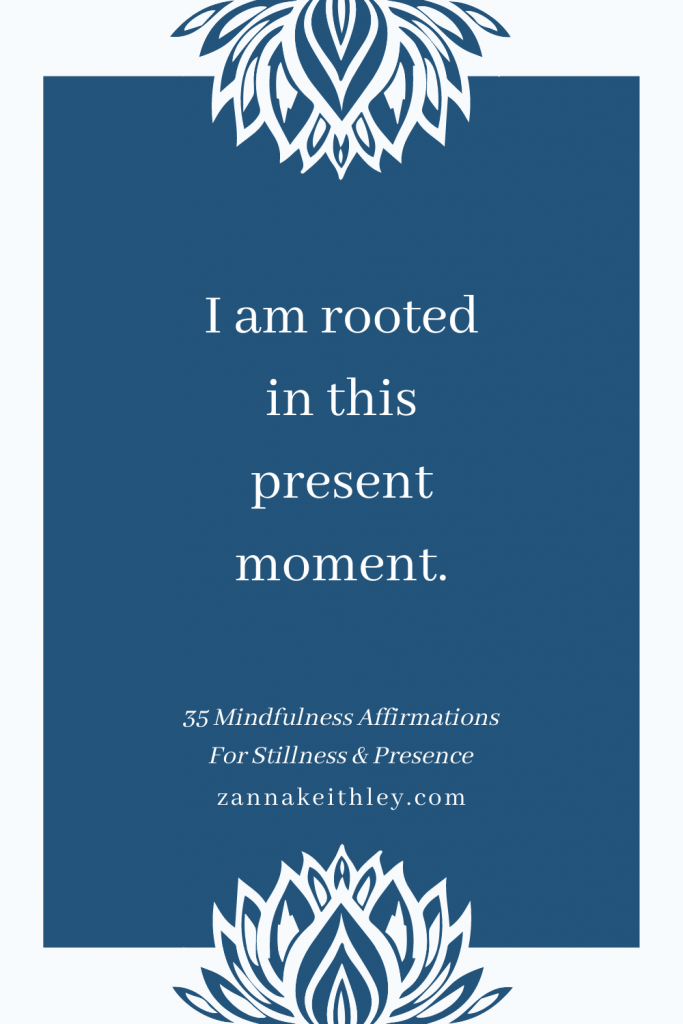
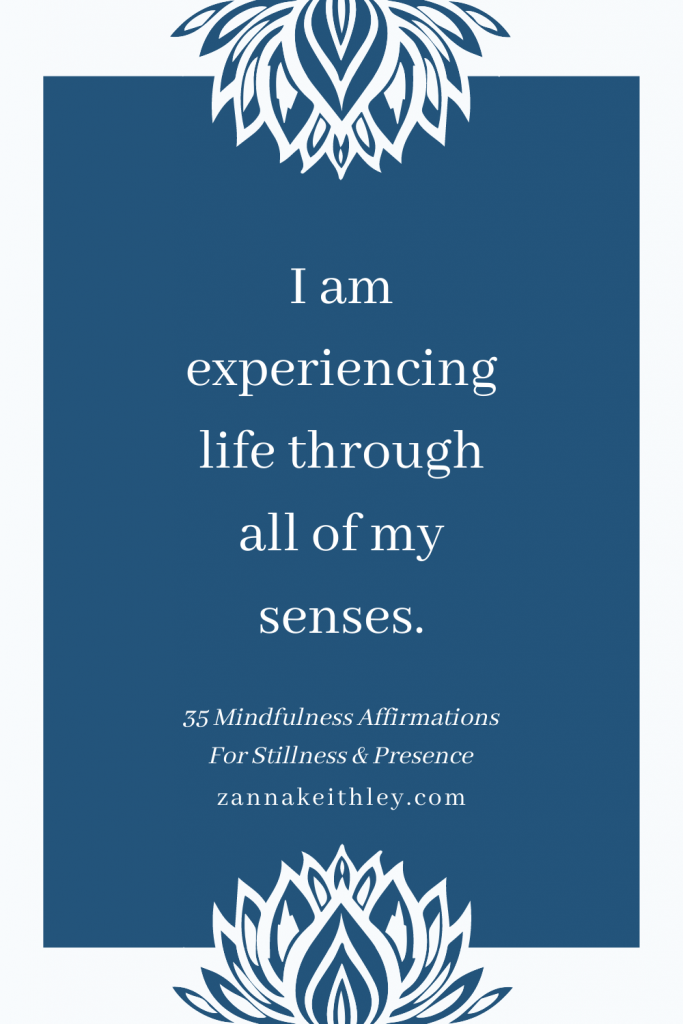
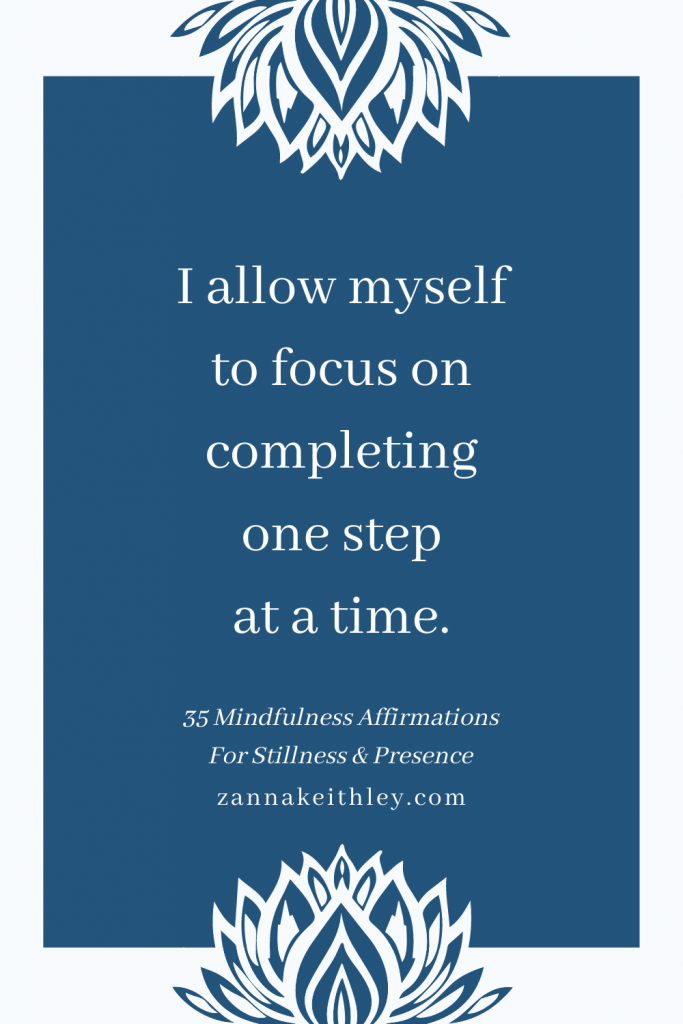
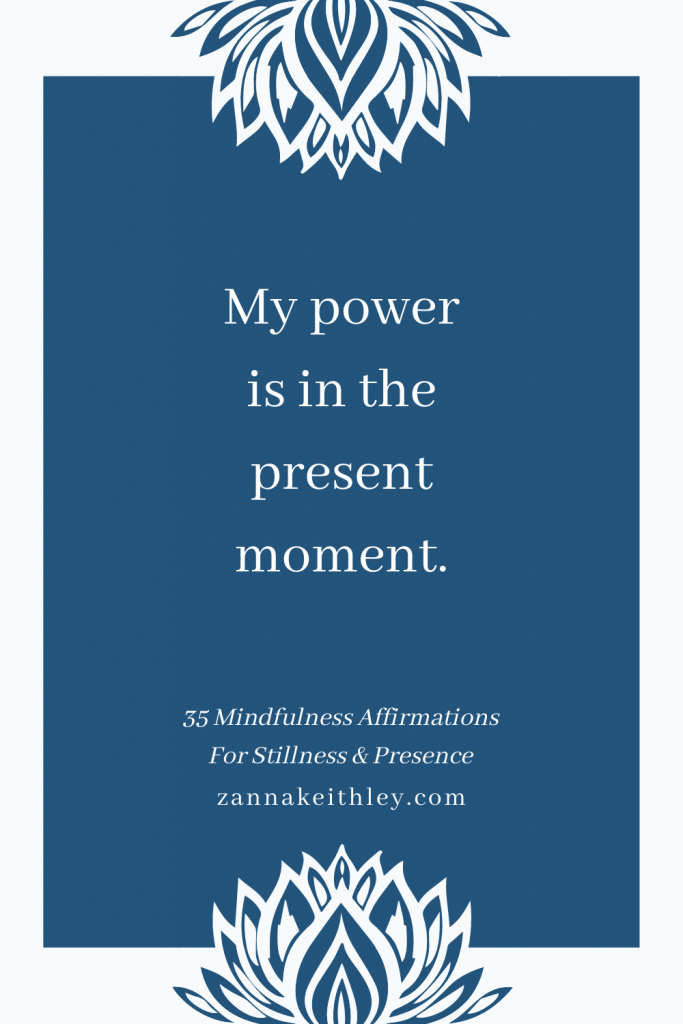
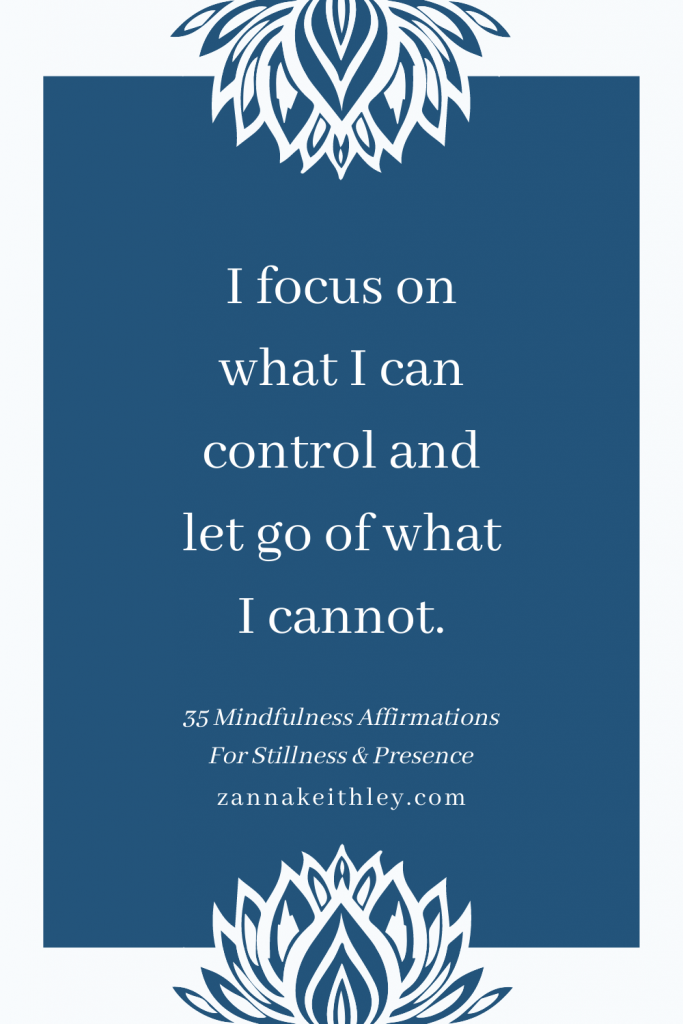
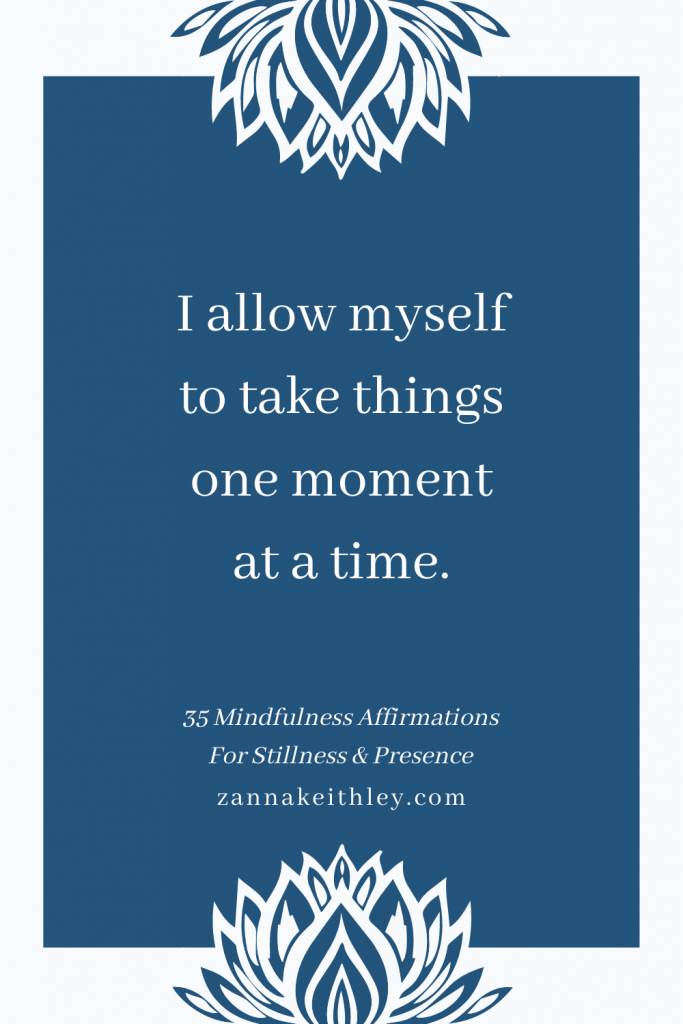
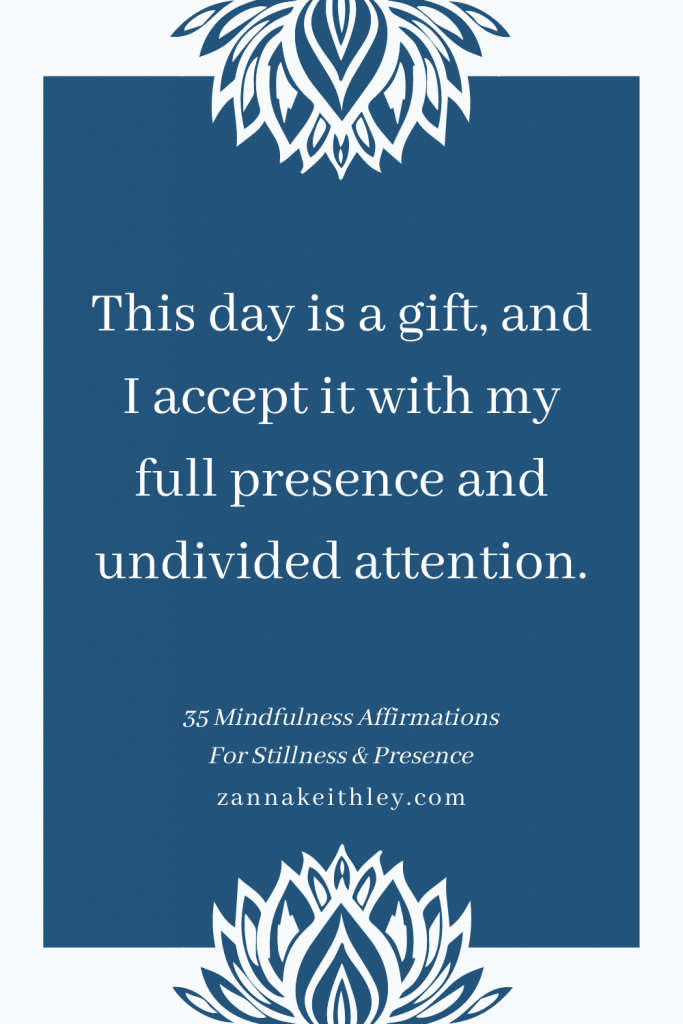
For positive affirmations, self-love tools, manifestation inspiration, and spiritual resources, be sure to follow me on Pinterest and Instagram.
Looking for more? Here are a few more posts you might like:
- How to Start a Meditation Journal (With Links)
- Alternate Nostril Breathing: Benefits & How-To Guide
- Shower Meditation: 6 Ways to Meditate in the Shower
- 50 Meditation Affirmations to Feel Grounded, Peaceful, and Secure
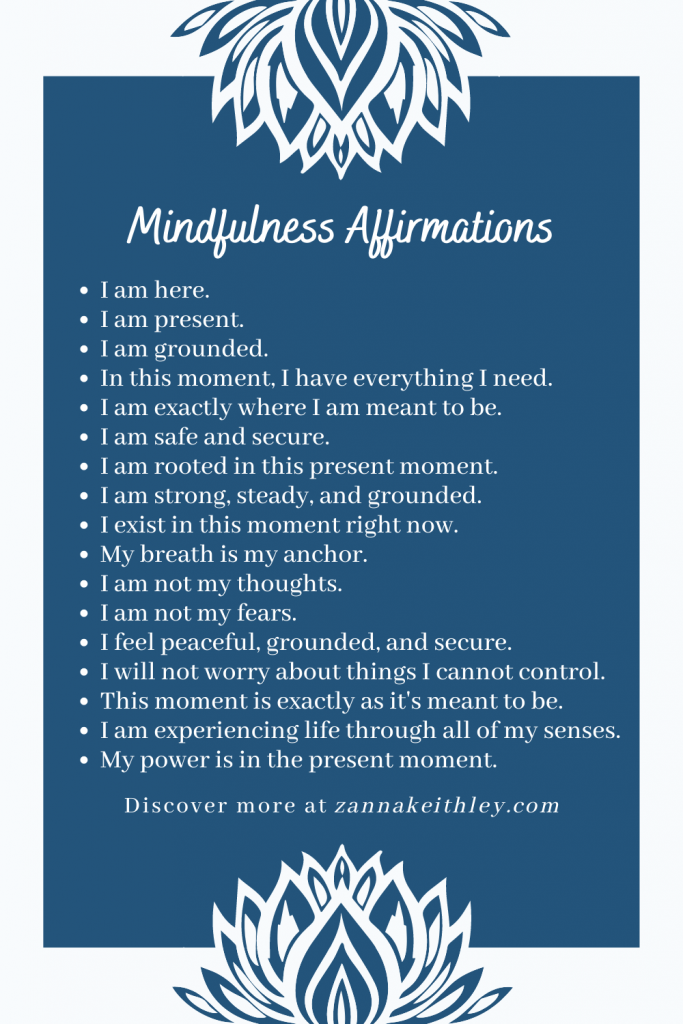
Pin this for later! 35 Mindfulness Affirmations For Stillness & Presence 
Zanna Keithley is an author, poet, and social media content creator who writes short prose dedicated to inspiring readers to follow their dreams, trust their intuition, and create beautiful and fulfilling lives. You can find her original writing on Instagram @zannakeithley.
-
500 Things To Be Grateful For Today
In this article, discover 500 things to be grateful for today. For easy reading, these 500 list items have been divided into 15 categories. Use this list to help you develop your own gratitude practice and remind you that while life may not be perfect, there’s still a lot of really wonderful things in this world to feel grateful for.
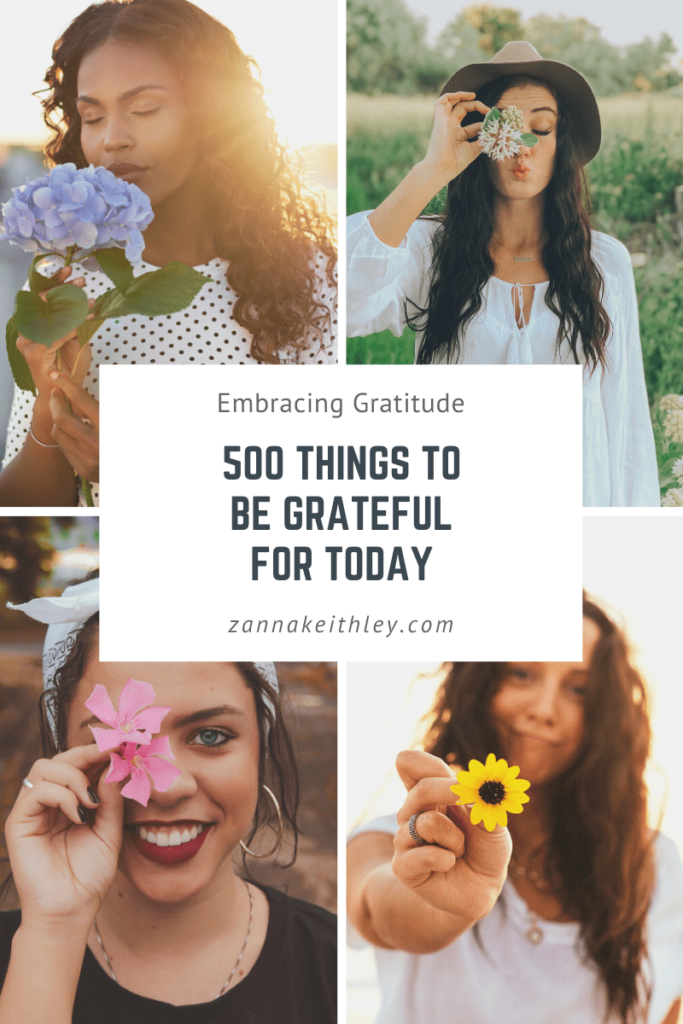
Pin this for later! 500 Things To Be Grateful For Today Finding Gratitude
Embracing gratitude is the practice of expressing sincere appreciation for your daily miracles. But these daily miracles aren’t necessarily “really big” things. Often, it’s the normal, everyday experiences of our lives that provide us with the biggest reasons to express our gratitude:
Having a safe, warm home to live in. Being loved and appreciated by family and friends. Possessing a strong heart and healthy lungs. Your first sip of coffee in the morning. The ability to open your eyes and greet a brand new day.
Every morning, I write down at least three things I’m grateful for that day. However, in this practice, I find myself often writing down the same things week after week. And while there’s nothing wrong with this, I wanted to see if I could come up with a longer list of people, places, things, and experiences to feel truly grateful for in my life.
Below, you’ll find 500 things to be grateful for today. I’ve separated these list items into subtopics such as Body, People & Relationships, Past Experiences, and Nature. However, you’ll find that many of these list items can fit under multiple categories.
Whether you have an ongoing gratitude practice or are starting a new one, I hope that this list of 500 things to be grateful for today helps you to view your life from a perspective of true abundance: seeing it for all that you have rather than all that you lack.
Not all list items will apply to you, and that’s okay. They may still help you to spur new thoughts and ideas about things you feel grateful for in your life. Because while 500 things to be grateful for may seem like a lot, it’s actually just barely skimming the surface of all there is in this world to appreciate. (For instance, after I finished the list, I realized I didn’t include very much about your job and career!)
And finally, no matter what’s going on in your life, I hope you remember that expressing gratitude doesn’t mean you have to ignore the your heavy emotions or suppress any frustration you may feel in this moment.
Rather, it’s an opportunity to take a deep breath and acknowledge that even when life isn’t perfect, there’s still a lot of really beautiful things in this world to feel grateful for.
500 Things To Be Grateful For Today
Body
- Healthy lungs for breathing
- A strong heart
- Eyes that give you vision to see the world
- Ears to hear music and laughter
- A nose to smell flowers and freshly baked cookies
- A tongue (and taste buds!) to taste your favorite foods
- Lips to kiss your partner, your children, or your pets
- A functioning brain for thinking, problem-solving, and all-around living
- Healthy legs for walking, running, and dancing
- Arms for hugging the people you love
- Hands and fingers that allow you write, draw, and hold a hot mug of something warm and tasty
- An immune system that keeps you healthy
- A liver that removes harmful toxins
- Muscles that help you to move, lift, speak, and enjoy life to the fullest
- Strong bones to help you stand, move, and experience the world
- Resilient, self-repairing skin that shields and protects you
- Those scars you have that are proof of a life fully lived
Yourself
- Your skills and talents
- Your kindness
- Your compassion
- Your strength
- Your courage
- Your resilience
- The challenges you’ve faced with your own courage and strength
- Your ability to see the world through the eyes of love and appreciation
- How far you’ve come
- Your endless capacity to love
- Your ability to persevere, even when life feels hard
- Your generous heart
- Your integrity
- Your intelligence
- Your creativity
- Your problem-solving skills
- Your deepest, most heartfelt dreams
- Your passions
- Your humor
- Your unending hope
Nature
- Sunsets and sunrises
- Dreamy blue skies
- Fluffy white clouds
- The breeze against your skin on a warm day
- The endless beauty of the ocean
- That glorious mountain in the distance (or the one you’ve climbed)
- The trees that stay rooted to the ground, no matter how hard the wind blows
- The changing of the leaves from lovely green to spectacular reds, oranges, and yellows
- A peaceful lake, river, or creek
- The warm sand beneath your bare feet
- The brightness of the full moon
- A sky full of stars on a clear night
- Beautiful, majestic wild animals
- The soft whisper of the snow as it blankets the earth
- That one place you can always find peace, no matter how heavy life feels
- Birds chirping outside your window
- The smell of freshly cut grass
- Wildflowers
- Lavender fields
People & Relationships
- Your mother
- Your father
- Your siblings
- Your children
- Your partner
- Your grandparents
- Your stepmother
- Your stepfather
- An adult who helped raise you
- Your aunts and uncles
- Your cousins
- Your nieces and nephews
- Your in-laws
- Your first best friend
- Your high school best friends
- Your college best friends
- Your current best friends
- Your boss
- Your coworkers
- Your neighbors
- Your community
- Your first love
- Your past and present mentors
- Your coaches
- Your mentors
- Your classmates
- Your religious leaders
- Kind strangers
- A teacher who made a difference
- The cashier who knows you by name
- Your mail deliverer
- Your doctor and nurses
- Your work best friend
- Your roommates
- Your hairdresser
- Your therapist
- Someone you barely knew who said something that sticks with you to this day
- Someone who makes you feel safe
- Someone who always makes you laugh
- Someone you can be your true self with
- Someone who has seen you through your highs and lows and still loves you, no matter what
- Someone who makes you believe in the goodness of people
Entertainment
- That song that always makes you want to dance
- That song that touches your heart every single time you hear it
- That song that reminds you of a special memory
- Your favorite band
- Your favorite singer
- Music, in general (and its healing power)
- Your favorite movie
- A movie scene that always makes you laugh
- A movie quote you love
- The best acting you’ve ever watched
- That TV show you can rewatch 100 times without ever getting tired of it
- A nostalgic video game
- Your favorite podcast
- Your favorite content creator
- Your favorite writer
- Your favorite book series
- Lord of the Rings Marathons
- Harry Potter Marathons
- Watching Home Alone every December
- Anything with Keanu Reeves
- Going to a concert
- Going to a show
- Going to a sports game
- Watching the Super Bowl for the game
- Watching the Super Bowl for the commercials
- Watching the Super Bowl for the snacks
- Watching the Super Bowl for the people you get to spend time with
Past Experiences
- Past experiences you’re really proud of
- Past experiences that made you stronger
- Past experiences that helped you to grow
- Past experiences that brought you joy
- Past experiences that made you laugh so hard you cried
- Past experiences that showed you the beauty of being alive
- Past experiences that led you to where you are today
- Past experiences that you wouldn’t take back, even if they didn’t lead where you wanted them to
- Past experiences that showed you that you’re so much braver and stronger than you realized
- The smallest moments that made the biggest difference in your life
- Past experiences that brought you peace
- Past experiences that showed you the power of forgiveness
- Past experiences that surprised you in the best way
- Past experiences that helped you to learn from your mistakes
- Past experiences that helped you to break out of a rut
- Past experiences that made you shake and tremble with nerves – but you got through them
- Past experiences that allowed you to feel truly alive
- Past experiences that showed you the meaning of true love
- Past experiences that helped you to connect to yourself
- Past experiences that helped you to connect to others
- Past experiences that helped you to connect to the universe as a whole
Possessions
- Your home
- Your car
- Your phone
- Your laptop
- Your tablet
- Your video game consoles
- Your television
- Your bed
- Your blankets
- Your pillows
- Your toothbrush
- Your toothpaste
- Your body-cleansing products
- Your lotion and moisturizer
- Your hairbrush
- Your makeup
- Your kitchen table
- Your coffee maker
- Your favorite coffee mug
- Your plates and bowls
- Your eating utensils
- Your kitchen sink
- The food in your pantry
- Your microwave
- Your stove
- Your refrigerator
- Your toaster
- Your air fryer
- Your Instant Pot
- Your pots and pans
- Your baking sheets
- Your oven mitts
- Your dishwasher
- Your garbage cans
- Your couch
- Your desk
- Your clothes
- Your washer and dryer
- Your security system
- The locks on your doors
- Your Smart Home devices
- The roof on your house
- Your furnace
- Your wall decorations
- Your fitness tracker
- Your headphones or AirPods
- Your shoe collection
- Your hair dryer
- Your hair straightener
- Your curling irons
- Your vacuum
- Your windows
- Your curtains
- Your blinds
- Your light fixtures
- Your gardening equipment
- Your lawn tools
- Your toys and games
Food & Drink
- Water
- Coffee
- Tea
- Smoothies
- Chocolate
- Spicy snacks
- Pancakes & waffles
- Pumpkin pie
- Pizza
- Tacos
- Pasta
- Seafood
- Sushi
- Fresh vegetables
- Tropical fruit
- Organic foods
- Gluten-free foods
- Sour candy
- Hard candies
- Gummy bears
- The combination of peanut butter and chocolate
- Mint chocolate chip ice cream
- Cookie dough
- Lemon-flavored sweets
- Chocolate-covered strawberries
- Burgers (Vegetarian ones, too!)
- Crispy fries
- Your favorite meal
- Your favorite treat
- Comfort food on heavy days
- Warm soup when it’s cold outside
- Soft, warm, freshly baked bread
- That one meal from your favorite restaurant
- Home-cooked meals
- Home-baked desserts
- Sparkling water
- Sparkling cider
- Your favorite soda
- Orange juice
- Freshly squeezed lemonade
Animals & Insects
- Cats and kittens
- Dogs and puppies
- Horses
- Rabbits
- Squirrels
- Deer
- Cattle
- Pigs
- Chickens
- Hummingbirds
- Ladybugs
- Butterflies
- Eagles
- Giraffes
- Zebras
- All. The. Animals. (I could make a list of just 500 animals, so I’m going to stop myself here!)
The Little Things
- Seasonal candles
- Fuzzy socks
- Stretchy leggings
- Slippers
- Crystals & gemstones
- Essential oils
- Affirmation cards
- Motivational quotes
- Souvenirs from past vacations
- Old journals and diaries
- Polaroid cameras
- Plants
- Freshly cut flowers
- Succulents
- Mala beads
- Old pictures
- Bookshelves filled with classic literature
- A meaningful piece of jewelry
- The soft glow of a Himalayan salt lamp
- The scent of your favorite body wash
- Bubble bath
- Throw pillows
- Coffee dates with your best friend
- A kind smile from a stranger
- Board game nights with friends and family
- The feel of freshly washed sheets against your bare legs
- A rainy day spent inside snuggled on the couch
- Deep conversations with people you connect with on a soul level
- Wearing a new outfit that makes you feel really good
- Getting a meme or gif that makes you laugh
- Crying it all out
- Finding money you didn’t know you had
- The scent of chocolate chip cookies baking in the oven
- Ridiculous dancing with friends
- The moment your favorite song starts playing on the radio
- Your favorite family traditions
- Buying from a small, family-run business
- Winning something unexpectedly
- Running into someone you love while you’re out in public
- Comfy pajamas
- Girls’ nights
- Guys’ nights
- A feel-good book
- Sleepovers with your best friends
- Three-day weekends
- Creating a playlist of your favorite songs
- The first sip of coffee in the morning
- A warm shower
- Outdoor lunch breaks on a perfect-temperature day
- A peaceful moment to yourself before the day starts
- Rewatching your favorite holiday movie for the 500th time
- Beach days
- Lake days
- Cabin days
- Snow days
- Summer nights with friends
- The fresh scent of the post-rain air in the spring
- The touch of the sun’s rays against your skin in the summer
- The autumn colors and crisp coolness of the air
- Snowy winters spent indoors next to the fireplace
- Getting dressed up for no reason at all
- Giggling with your best friend over inside jokes
- Taking a vacation day to stay in and do nothing
- Taking a nap in the middle of the day
- Dinner parties with friends
- Having breakfast for dinner
- Having cold pizza for breakfast
- A goodnight kiss
- A kiss on the forehead
- Your favorite childhood toy
- A beautiful ending
- A new beginning
- Moving into a new home
- Doing a cartwheel
- Talking to your mom on the phone
- Cuddling with the person you love most in this world
- Receiving an unexpected gift
- Giving a gift to someone when they don’t expect it
Firsts
- The first time you saw the ocean
- The first time you travelled by plane
- The first time you touched snow
- The first time you held your crush’s hand
- Your first kiss
- The first time you drove a car
- The first car you owned
- The first time you ran 5K
- The first time you ran 10K
- The first time you achieved something you never thought you would
- The first time you meditated, even though you were quite certain you were doing it wrong
- Your first job
- Your first paycheck
- Your first promotion
- The first time you fell in love
- The first house you bought
Modern Conveniences
- Food delivery services
- Grocery delivery services
- Curbside pickup
- Wireless internet
- GPS
- Fast food
- Drive-thrus
- Online shopping
- Zoom
- Spotify
- Meditation apps
- Google Calendar
- Netflix
- Hulu
- Amazon Prime
- HBO Max
- Cell phone cameras
- UPS
- Fed-Ex
- Same Day Delivery
- Two-Day Shipping
- Overnight Shipping
- Indoor plumbing
- Electricity
- Water heaters
- Curbside garbage service
Activities & Experiences
- Meditating
- Practicing yoga
- Camping
- Hiking
- Jogging
- Biking
- Reading
- Writing
- Painting
- Drawing
- Crafting
- Cooking
- Dancing
- Singing
- Baking
- Gardening
- Exercising
- Roller blading
- Ice skating
- Skateboarding
- Skiing
- Sledding
- Snowboarding
- Snowball fights
- Building a snowman
- Going on a picnic
- Art in the park
- Roasting marshmallows over a campfire
- Running through the sprinklers on a warm day
- Swimming in the ocean
- Swimming in the lake
- Swimming in a pool
- Paddleboarding
- Spending a day at the theme park
- Riding a roller coaster
- Road trips
- Stargazing
- Daydreaming
- Journaling
- Traveling somewhere new for the first time
- Working in a job you love
- Going to a museum
- Golfing
- Mini-golfing
- Working from home
- Re-reading your favorite book
- Watching the city lights from a viewpoint high above it all
- Celebrating a birthday
- Dressing up for Halloween
- Staying up until midnight on New Year’s Eve
- Sharing a New Year’s kiss with someone you love
- Going to a high school reunion
- Watching a waterfall
- Traveling the world
- Walking on the beach
- Falling in love
- Learning how to love yourself
- Speaking your truth, even when your voice shakes
- Standing up for yourself
- Standing up for someone else
Places In Your Community
- The gym
- The grocery store
- Restaurants
- Clothing stores
- Schools
- The building you work in
- Hospitals
- Urgent care clinics
- Fire stations
- Recycling centers
- Hair salons
- Spas
- Parks
- Nail salons
- The yoga studio
- The art studio
- The art museum
- Your local bookstore
- Your local game store
- The family-owned corner store that’s been there forever
- Coffee shops
- Bakeries
- Bagel shops
- Your favorite pizza place
- Home decor stores
- Locally-owned businesses
- Shoe stores
- Candy stores
- Donut shops
- Ice cream shops
- The Farmer’s Market
- Plant and garden centers
- Hardware stores
- The bike park
- The skateboard park
- The airport
- Gas stations
- Hotels
- Waterparks
- Toy stores
- Libraries
- Office supply stores
- Vet clinics
- Daycare facilities
- Sporting goods stores
Growing Up
- Your education
- Having your own bedroom (or sharing a room with your close-knit sibling)
- Eating home-cooked meals
- Wearing new clothes to school
- Wearing brand new shoes on the first day of school
- Having coats and warm clothing that fit you
- Having parents who worked to keep you warm, fed, and safe
- Having parents who made you feel unconditionally loved
- Getting what you asked for on your birthday & holiday lists
- Going on vacations with your family
- Having adults in your life who cared about your well-being
- Being in an environment in which your imagination was encouraged
- Being told you can do and be anything you want
- Never having to guess where your next meal will come from
- Being allowed to just be a kid
What things are you most grateful for in your life? Share some of the items on your personal gratitude list below!
And for more resources on spirituality, meditation, manifestation, and all things self-love, be sure to connect with me on Instagram and Pinterest, where I’m posting positive affirmations and empowering messages daily.
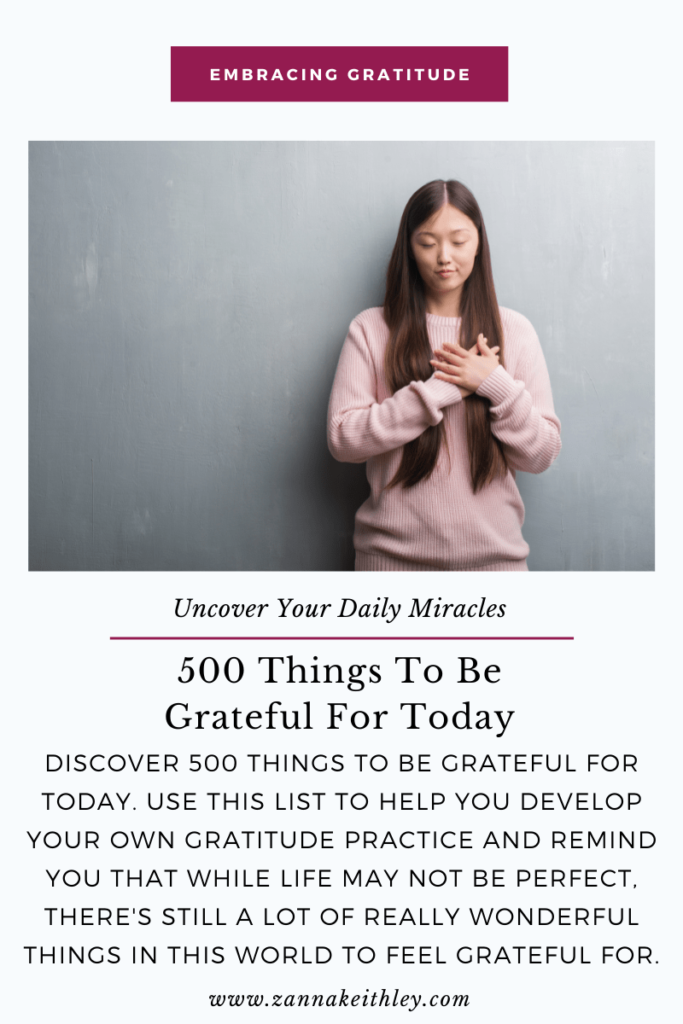
Pin this for later! 500 Things To Be Grateful For Today 
Zanna Keithley is an author, poet, and social media content creator who writes short prose dedicated to inspiring readers to follow their dreams, trust their intuition, and create beautiful and fulfilling lives. You can find her original writing on Instagram @zannakeithley.
-
11 Best Mindfulness Books & Journals (for 2024)
In this post, discover 11 of the best mindfulness books and journals to read this year. For beginners and experienced mindfulness practitioners alike, these resources will take you on a profound journey to cultivating mindfulness and inner peace.
Disclaimer: This post contains Amazon links. As an Amazon associate, I earn from qualifying purchases. If you purchase a product using my link, I may receive a small commission at no extra cost to you. You can read my full disclosure policy here.
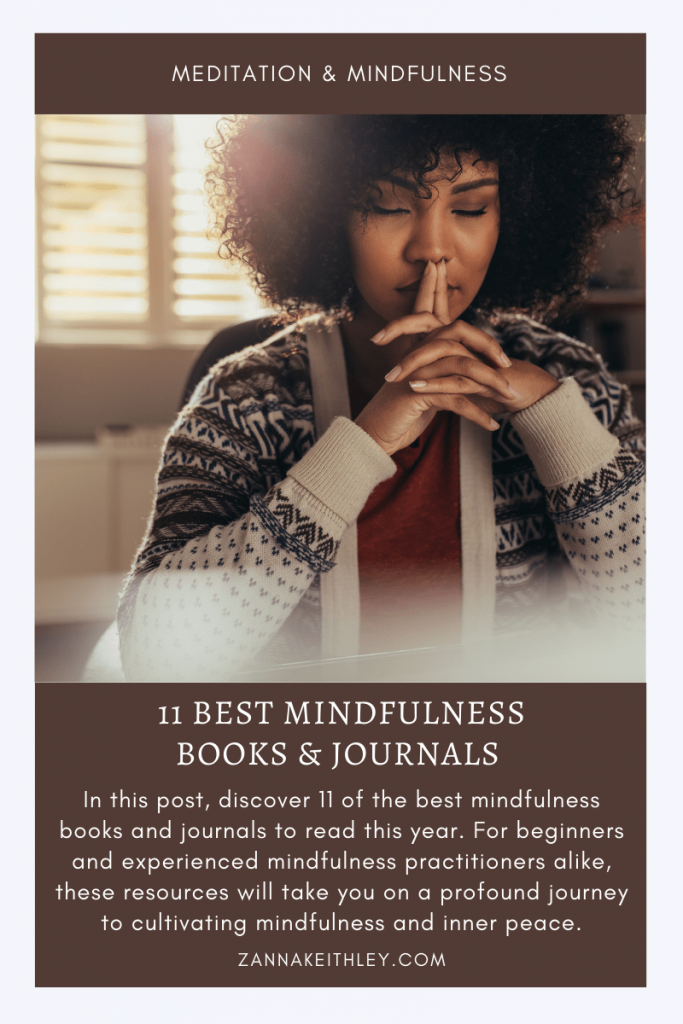
Pin this for later! 11 Best Mindfulness Books & Journals (for 2023) What Is Mindfulness?
Mindfulness is non-judgmental, conscious awareness in the present moment. This means being aware of your own thoughts, feelings, and surroundings in the present moment without putting labels on any of it as right or wrong. Mindfulness is sometimes referred to as the art of noticing, as it doesn’t require anything from you except to simply notice.
Now, if this is still kind of unclear, that’s okay. Let’s break it down a little further.
- Lack of Judgment: As humans, we experience a range of thoughts and emotions throughout our lives. Sometimes, we experience this spectrum in a single day. Anger, fear, sadness, pain, anxiety, and stress are emotions we often call negative. Likewise, we may have thoughts that we deem to be wrong or bad. The key to mindfulness is to not judge ourselves for our thoughts and emotions. Simply observe. If you notice that a thought you’re having doesn’t align with what feels good and true to you, you can take this moment to realign with your truth.
- Conscious Awareness: This means that you recognize your thoughts, words, and actions as you’re thinking, speaking, and acting. This is the opposite of the “autopilot” mode we all fall into once in a while. Conscious awareness is taking a step back, recognizing the autopilot mode, and choosing how to think and feel in this moment. (Again, when you catch yourself in autopilot mode, don’t judge yourself. It’s perfectly normal.)
- Returning to the Present Moment: I think about the past a lot. I also think about the future a lot. And that’s okay. I can also recognize that the only real thing in the world is this moment right now. You can think about the past and future, but don’t live there. Live in this moment. That’s what mindfulness does for us; it allows us to honor and recognize the beauty, value, and importance of this moment right now.
Mindfulness is knowing that nothing about this moment is wrong. Nothing is a mistake. It is exactly as it is. And if you don’t like how you’re feeling or what you’re experiencing in this moment, notice and see if you can realign with something that feels better. But don’t judge yourself for being human.
If you’d like to learn more about what mindfulness is and explore profound mindfulness quotes from top scholars and thinkers, you can learn more about mindfulness here. And in this post, I offer 10 practices to help you cultivate mindfulness today.
Below, you’ll find 11 of the best mindfulness books and journals for beginners and experienced mindfulness practitioners alike. All of the books and journals below will take you on a gentle, profound journey that leads you to the greatest destination of all: back to yourself.
- You May Also Like: 10 Best Manifestation Books to Read This Year
Mindfulness Books & Journals
Practicing Mindfulness: 75 Essential Meditations
If you’re looking to begin your own mindfulness practice, Matthew Sockolov’s Practicing Mindfulness: 75 Essential Meditations will take you on a truly profound and meaningful journey through mindfulness using meditation. Here, you’ll find 75 unique exercises. The early ones can be done in just 5 minutes a day, and as you progress in your journey, so will the meditations. This is a great guide for both beginners and experienced practitioners alike.
Think Like A Monk
Jay Shetty’s Think Like A Monk is an inspiring guide to overcoming your own negative thoughts, accessing your inner peace, and clearing any roadblocks that may be stopping you from tapping into your own power and potential. Shetty takes often complex and abstract ideas and transforms them into accessible exercises and advice that you can use in your own life to reduce stress and increase mindfulness.
Mindfulness: An Eight-Week Plan
Mindfulness: An Eight-Week Plan for Finding Peace in a Frantic World by Mark Williams and Danny Penman provides you with simple yet powerful practices for cultivating mindfulness in your daily life. It promotes true joy and inner peace and helps you to break the cycle of daily stress, anxiety, and exhaustion.
Wherever You Go, There You Are
When you start researching mindfulness, Jon Kabat-Zinn is likely one of the first names that will come up. (And likely, his name will keep appearing over and over again). This book is absolutely a must-have for those new to meditation and mindfulness as well as seasoned practitioners. Wherever You Go, There You Are takes you on a profound journey back home to yourself. It teaches you how to cultivate mindfulness your own way in a gentle yet powerful manner.
Mindfulness For Beginners
And because there can never be too much Jon Kabat-Zinn on a mindfulness list, his book Mindfulness for Beginners: Reclaiming the Present Moment and Your Life is a truly wonderful resource for anyone just starting their mindfulness journey. This book guides you back to yourself and helps you to embody the real and true you. This book is an invitation to transform the way you think, feel, work, and play in a loving, wholehearted manner.
A Year Of Zen
Bonnie Myotai Treace’s A Year of Zen is a 52-week guided journal filled will thought-provoking journal prompts and ample space to explore and reflect upon your own experiences and inner world. (And its simple illustrations are elegant and serene.)
Mindfulness For Beginners In 10 Minutes A Day
Lara Hocheiser’s Mindfulness for Beginners in 10 Minutes a Day is another great resource for those just beginning their mindfulness journey. Hocheiser provides the readers with an explanation of what mindfulness is in an easy-to-grasp way and offers simple yet profound exercises for practicing mindfulness every morning, day, and night.
The Miracle Of Mindfulness
Thich Nhat Hanh is another prominent figure in the meditation and mindfulness space. His book, The Miracle of Mindfulness, is a beautiful and gentle introduction to mindfulness, offering exercises and anecdotes that remind you that each moment holds its own gifts and opportunities for peace.
The Mindfulness Journal
Worthy Stokes’ The Mindfulness Journal: Creative Prompts to Relax, Release, and Explore the Wisdom of You is a wonderful discovery filled with gifts on every page. In addition to prompts, it offers exercises that allow you to explore mindfulness through connecting with your inner artist. This is a beautiful journal that also makes a great gift for friends and loved ones.
Star Wars: The Jedi Mind
Star Wars: The Jedi Mind: Secrets from the Force for Balance and Peace by author Amy Ratcliffe and illustrator Christina Chung pairs lessons from Star Wars with mindfulness lessons relevant to our own galaxy in the 21st century. This is a perfect gift to yourself or the Star Wars fan in your life, offering accessible lessons focused on peace, serenity, and balance.
A Year Of Mindfulness
Jennifer Raye’s A Year of Mindfulness is a 52-week mindfulness journal that includes weekly themes and daily writing prompts that allow you to cultivate mindfulness each day of the year. The simple, easy-to-follow exercises in this journal are designed to help you live in the moment and notice the world around you (and within).
Do you have any favorite mindfulness books or journals? Share your favorites in the comment box below! And for positive affirmations, self-love tools, manifestation inspiration, and spiritual resources, be sure to follow me on Pinterest and Instagram.
Looking for more? Here are a few more posts you might like:
- How To Tap Into Your Intuition (A Complete Guide)
- 500 Things To Be Grateful For Today
- Alternate Nostril Breathing: Benefits & How-To Guide
- 33 Profound Spiritual Healing Quotes To Guide Your Path
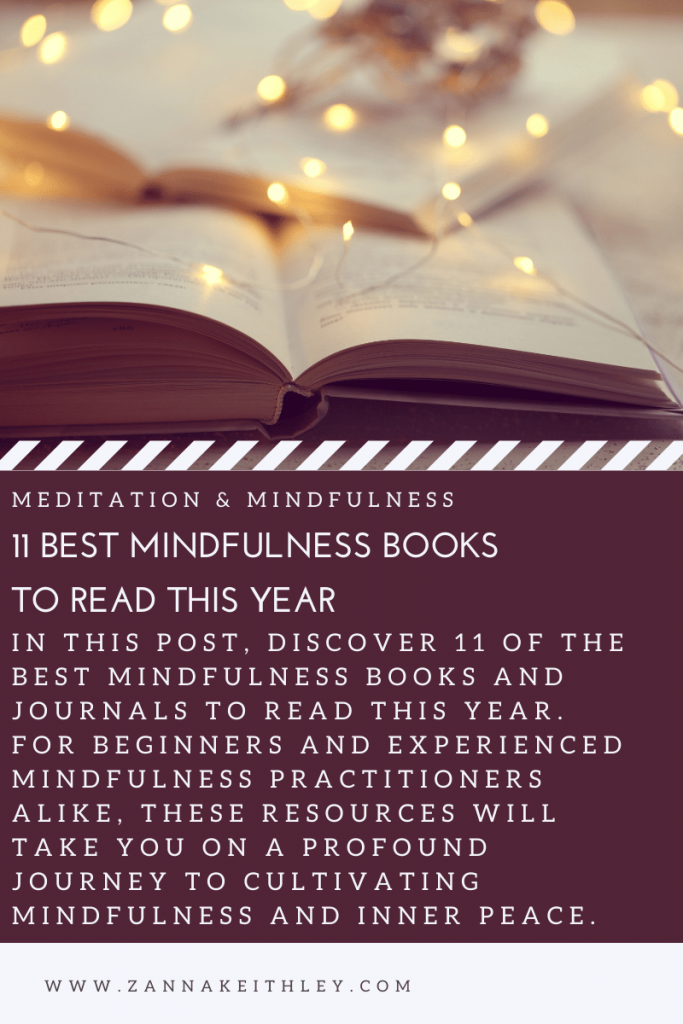
Pin this for later! 11 Best Mindfulness Books & Journals (for 2023) 
Zanna Keithley is an author, poet, and social media content creator who writes short prose dedicated to inspiring readers to follow their dreams, trust their intuition, and create beautiful and fulfilling lives. You can find her original writing on Instagram @zannakeithley.
-
The 12 Laws Of Karma Explained (A Complete Guide)
In this article, discover the true meaning of karma, plus learn what the 12 Laws of Karma are and how you can use them to create a life of genuine joy, purpose, passion, and fulfillment.
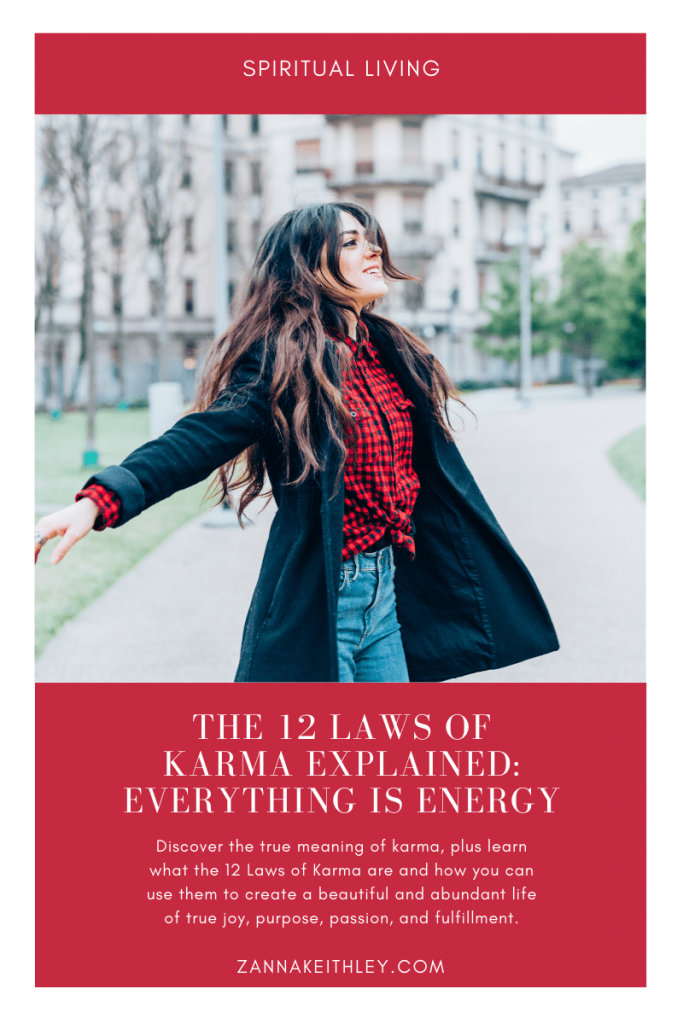
Pin this for later! The 12 Laws of Karma Explained (A Complete Guide) What Is Karma?
What do you think of when you heard the word karma?
For many of us, our first thought is the saying, “What goes around comes around.”
Often, this is said with a negative connotation. When you see or hear about somebody who lies, steals, or treats another with unkindness, you may say, “Karma will come back around and catch up with them.”
While this is one aspect of karma–and the central idea in the First Law of Karma (The Great Law)–there’s actually a lot more to the concept of karma than most of us realize.
In Sanskrit, the word karma means “action.”
When I have a good thought or do a good deed, this goodness has positive effects and ultimately comes back to me. When I have a bad thought or do something that I know is harmful, the negative effects will ultimately come back to me as well.
Good actions beget more goodness; bad actions beget more badness.
But it’s not just about good and bad.
Rather, the important thing is realizing that every action has meaning; everything you do and say contributes to the overall whole.
And most of the time, what we consider to be “good” or “bad” is subjective depending on our perspective and life experience. This is especially important to remember when it comes to events happening in your own life.
When you believe something bad is happening to you, it may be time to take a step back and evaluate your life with gentle and non-judgmental awareness.
What lessons might the universe be trying to teach you? Are you blaming others for what happens in your life, or are you able to take personal responsibility? Could there be any goodness to what you perceive as bad?
Rather than saying, “This bad thing is always happening to me,” you have the opportunity to turn it around and ask, “What can I learn from this experience?”
- You Might Also Like: What Are the 12 Laws of the Universe? (A Complete Guide)
How To Use The 12 Laws Of Karma
You get to decide your personal relationship with these laws and how you’ll use them to guide your own life path.
But I do want to offer this advice:
Don’t view these laws as rules that are meant to tie you down or fit you into a box.
The word “law” may have a negative connotation for some, as you may view it as an unbending rule that prevents you from experiencing true freedom.
But the opposite is true here.
The 12 Laws of Karma are not meant to limit or constrict you; through their very nature, they’re meant to lead you to a life of joy, freedom, passion, purpose, and love.
These laws are designed to show you the road map to a beautiful and fulfilling life. They help you to live in the present moment and find joy in this moment right now, no matter what your external world may look like.
And they show you the way to creating meaningful change and living the life you’ve always desired: the beautiful and abundant life of your dreams.
So as you read through the 12 Laws of Karma, allow yourself to gently explore them with an open heart, receiving them as a loving gift from the universe. These laws are not meant to hinder you but rather to show you the path to true freedom and to a life filled with love, fulfillment, and abundance.
The 12 Laws Of Karma
The Great Law
The Great Law, also known as The Law of Cause and Effect, fits what most of us traditionally think of when we hear the word karma. Anyone familiar with manifestation and the Law of Attraction will also be familiar with the concepts presented in this law.
The foundation of the Great Law is the idea that whatever we put out into the world is what we get back. While you may think of this in terms of actions (i.e. if you see someone drop their wallet and pick it up to give back to them, this kindness will come back to you), it’s also important to view it in terms of energy.
The energy you put out into the world is what comes back to you, whether you’re conscious of it or not.
Say you wake up every morning feeling frustrated and annoyed that you have to go to work again today. The shower water is never hot enough, the other cars on your commute are always driving too slow, and everyone else seems to be getting raises and promotions but not you.
You have a scarcity mindset; no matter how much you have, it’s never enough. Because of this, you emit negative energy into the universe. And even though you don’t want to receive more negativity, that’s what you keep getting: more scarcity, more lack, more lukewarm showers and slow commutes.
But what if you changed your perspective? What if you stepped into the shower feeling grateful for the running water that keeps you clean? What if you focus on the fact that you have reliable transportation to get you to work? What if every time one of your coworkers got a raise or promotion, you cheered them on?
Things change once you start viewing your world from the perspective of gratitude and appreciation; you emit positivity into the world, and thus, you receive more positive energy in return.
Do you want abundance in your life? Become the embodiment of abundance. Do you want love? Start with showing yourself unconditional love, then share that love with the world around you. If you want something, become the embodiment of that thing, then watch as more of it flows into your life in beautiful and miraculous ways.
- You Might Also Like: How To Practice Gratitude (For Law Of Attraction)
The Law of Creation
The first law flows effortlessly into this second law, and it’s likely you’ll quickly see how all of these laws are intertwined.
The Law of Creation states that you must take action to create the life you desire. You are a powerful creator, and you have the power to co-create your life along with the universe. But too often, we sit back, hoping things will work out but not actively doing anything about it. You must become an active participant in your story.
This doesn’t mean trying to control outcomes, forcing things to happen, or stubbornly staying on a path that doesn’t truly feel right for you.
Rather, it goes back to the idea of putting out the energy you want to receive. And it also means taking inspired action when your intuition leads you in a certain direction.
If you want to create abundance, first become abundance. Then, when you feel that nudge to take action, do so in a state of effortless flow. This is what co-creating is: setting an intention, telling the universe what you want, become the embodiment of what you want, and trusting the universe to lead you where you’re meant to go.
The Law of Humility
Are you able to accept responsibility for your past and current reality? For instance, let’s go back to the “hate your job” scenario. Let’s say that you’re in a position you don’t enjoy, and you haven’t received the promotion or raise you think you deserve. You enter the office with a bad attitude and leave with an even worse one.
Do you blame your boss or your coworkers for your unhappiness?
Is there someone else a few cubicles away who seems to be getting all of the rewards you want, and you blame his or her success for your failure?
The Law of Humility is all about accepting that you have created your current reality through actions, choices, and the energy you’ve emitted. It’s about not blaming others for everything that’s seemingly going wrong in your life but taking responsibility for your current place in life.
In order to change something, you must first accept it. So in order to change the circumstances of the job you don’t like, you must accept the role you’ve played in creating your current experience; through acceptance, you remove your blinders, embrace the truth, and are able to see what must change in order to create a life that you love.
The Law of Growth
Do you consider yourself a fixer? Do you good-intentionally try to change the people in your life in order to help them? When things are going badly, do you first try to change your external world (places, people, things) before looking internally?
The Law of Growth says that there is only one thing you truly have control over: yourself. If you want to make a positive mark on the world, don’t start with what you can do externally; start with what you can do internally. To change the world, start with changing yourself.
This doesn’t mean you have to become a different person. In fact, the opposite is true. The hardest part of growth often comes from removing everything that prevents you from connecting with the truest, most authentic you.
This also means that you may have to accept that you can’t change everything or everyone, even if you believe it would be in their highest good. Trust that if you focus on your own growth and your own path, you’ll illuminate the way for others. But it has to be their choice.
The Law of Responsibility
The Law of Responsibility links closely to the Law of Humility (and, in fact, all the laws I’ve discussed above).
Can you take responsibility for your current life circumstances, good and bad?
The Law of Responsibility states that rather than looking for external reasons and excuses for why something might be wrong in your life, you must look internally. Because it doesn’t start out there; it starts in here. In me. In you. In all of us.
It’s important to truly evaluate your life from a place of non-judgmental, conscious awareness. What’s going right? What’s going wrong?
Instead of looking outward for reasons why something might be going right or wrong, look inward. Know that this isn’t about judging or criticizing yourself. (In fact, I encourage you not to judge, berate, or criticize yourself.) It’s about taking responsibility for the choices you make, whether that be an action you’ve chosen to take or an energy you’ve chosen to emit.
The Law of Connection
The Law of Connection states that everything in the universe, and everything in your life, is connected: your past, present, and future.
No action or decision is insignificant because every action effects who you become. Your actions yesterday affect the person you are today, and your actions today affect the person you are tomorrow.
When I think of the Law of Connection, I like to think of the affirmation, “Every small step I take makes a big difference.”
I can use this website itself as an example. There are a lot of daily actions I take to maintain this website. There are also certain things I had to do only once or twice, like installing a certain plugin or uploading a picture for my author bio. I write and edit multiple blog posts a week and create dozens of Pinterest pins for my blog posts. I’ve changed the overall layout of the site several times, which is a task that can take a lot of time depending on the extent of my changes.
So is writing a blog post more important than installing a plugin? Is changing the layout more important than uploading an author bio picture?
According to the Law of Connection, no. Each step leads to the next step, and no step is more important than the other because they’re all connected. This is true for everything in our lives.
And this is true in terms of yourself, as well. You may think of some of your past days as being more important and consequential than others, but every single day you’ve experienced has created the person you are today. Everything is connected. Everything is important. Your past, present, and future are all intertwined and deeply connected to one another.
The Law of Focus
The Law of Focus states that you should focus on one thing at a time, and if your focus is on spiritual values, you will not have space in your life to focus on lesser feelings such as greed, jealousy, and anger.
What are spiritual values? They’re feelings and beliefs stemmed in love, peace, compassion, trust, and kindness: positive thoughts and emotions that welcome more of these positive feelings into your world. Ultimately, you decide your highest spiritual values and what feels true and right for you.
When you focus on feelings that allow you to be spiritually aligned, you have no room in your mind or heart for negative energy that doesn’t serve your mind, body, or spirit.
The Law of Giving & Hospitality
What do you believe in? What do you want most for the world? Do you have a vision of a world that is filled with peace and love? Do you believe in selfless kindness and generosity? Do you believe in connection over division and compassion over judgment?
This law is essentially the practice what you preach law. The Law of Giving & Hospitality calls on you to demonstrate what you believe in and become the embodiment of your genuine desires for this world.
If you envision a world filled with peace and love, give peace and love to yourself and others.
If you believe in selfless kindness and generosity, be selflessly kind and generous to all.
If you want to see a world connected in compassion and love, give this love and compassion and become connected to all.
Let your actions reflect your deepest and truest beliefs. If you want to see change in the world, become the change by giving what you seek.
The Law of Here and Now
The only thing that truly exists is this moment right now. The past is gone, and the future is not here. True inner peace comes from embracing the present moment.
The Law of Here and Now states that true peace of mind comes from living in the present moment, and you cannot embrace the present moment if you’re always looking back into the past or ahead into the future. Reliving the past prevents you from engaging with your life just as it is right now. And when you’re constantly focusing on the old, you’re unable to create the new.
When you find yourself replaying events of the past or worrying about the future, gently bring yourself back to the present moment. Use all of your senses to discover the world that exists right now. You might have a grounding mantra that helps, such as, “In this moment, I have everything I need.”
The Law of Change
Have you ever heard the phrase, “History repeats itself”? That concept is at the core of the Law of Change, which states that history will continue to repeat itself until you’ve learned the lessons you’re meant to learn and have taken actionable steps to change the pattern.
You might see this play out in all different parts of your life: relationships, career, and your own personal relationship with yourself. If you’re continually seeing the same cycles repeat themselves in your life, it’s worth stepping back and asking—what is the universe trying to teach me? Are there attachments, connections, beliefs, or old stories I’m not letting go of? Is there an intuitive knowing deep inside me that I keep ignoring?
Change can be scary sometimes, but when you embrace change and start on a new path, you open yourself to experiencing genuine joy, fulfillment, and growth.
The Law of Patience and Reward
The Law of Patience and Reward is rooted in the belief that consistency, patience, and continuing to show up day after day, even when you don’t see the rewards today, will bring true joy, peace, and fulfillment.
I think of this as the law of no overnight successes.
To help myself in moments when I begin to feel impatient, I think back to my marathon training program. When I signed up for my first marathon, I knew I wouldn’t be able to suddenly run 26.2 miles overnight. So I created a training program in which I ran 4 days a week with 3 rest days.
Each week, over the course of 14 weeks, I slightly increased my long runs and overall mileage by a mile or two. On the day of the marathon, I trusted that my consistency, effort, and patience in the process would pay off. And you know what? It did. Four hours and thirty-two minutes later, I crossed the finish line, my first full marathon complete.
Now, this can be a little different from other scenarios that require consistency and patience. While I had an exact date to work toward for my marathon, you might be working on a goal in which you have no idea when you’ll see the rewards of your effort. And that’s okay. Just know that showing up for yourself day after day and being consistent in your efforts is always worth it.
Meanwhile, don’t wait for all of your dreams to manifest in your reality before you allow yourself to experience true joy. Feel joyful now knowing that you are on the path, aligned with your purpose and passion, and exactly where you’re meant to be in this moment.
The Law of Significance and Inspiration
You matter. Your voice matters. Your presence matters. You were born with specific goals and talents that only you possess. Only you have lived your unique experiences. And that dream that’s in your heart? It’s there for a reason.
The Law of Significance and Inspiration states that every single one of us contributes to the greater whole. We all play a part in contributing to the highest good of the world.
And what you’re doing? It matters. When you put your heart into something and contribute your gifts and talents with wholehearted love, you are creating a ripple effect that you probably can’t even see.
You’re lifting up others and inspiring others to follow their hearts, too.
And the more positive energy and loving intentions you put into your contribution, the more you’re not only contributing to the highest good for all, but to yourself as well. You will get back all of this positive energy in ways you can’t even imagine.
So know that everything you do matters. Your purpose and your gift matter.
You matter. More than you know.
What’s your relationship with the 12 Laws of Karma? Do any of these laws feel especially meaningful to your life experiences? I’d love to hear about your experiences in the comment box below.
And for more resources on spirituality, meditation, manifestation, and all things self-love, be sure to connect with me on Instagram and Pinterest, where I’m posting positive affirmations and empowering messages daily.
You May Also Like:
- 33 Profound Spiritual Healing Quotes To Guide Your Path
- 30 Journal Prompts For Self Growth (& Deeper Self-Love)
- Vision Board Ideas To Visualize Your Ideal Future (With Examples)
- 9 Powerful Guided Meditations For Manifesting Your Dreams
- How To Protect Your Energy (7 Essential Practices)
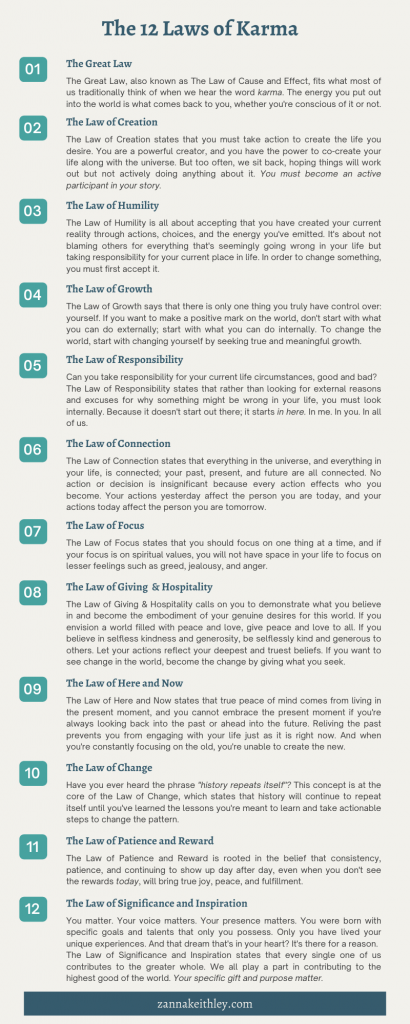
Pin this for later! The 12 Laws of Karma Explained (A Complete Guide) 
Zanna Keithley is an author, poet, and social media content creator who writes short prose dedicated to inspiring readers to follow their dreams, trust their intuition, and create beautiful and fulfilling lives. You can find her original writing on Instagram @zannakeithley.
-
Alternate Nostril Breathing Benefits & How-To Guide
In this article, discover the health benefits of alternate nostril breathing, a breath control practice in which you alternate inhaling and exhaling out of each nostril. You’ll also learn about the spiritual benefits of this practice and get a step-by-step guide on how to start today.
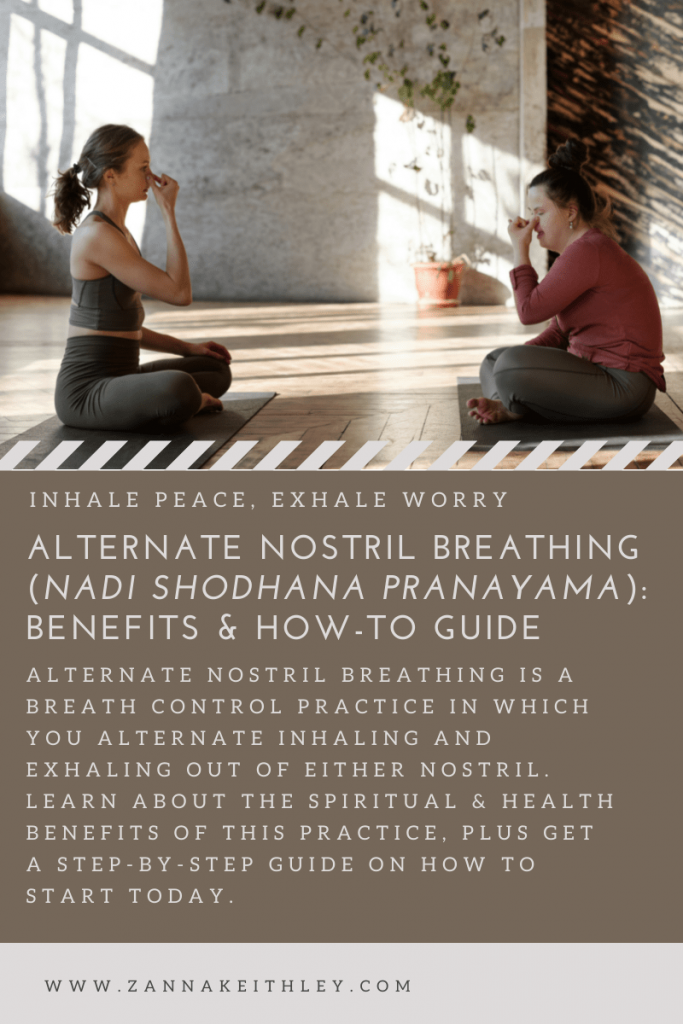
Pin this for later! Alternate Nostril Breathing (Nadi Shodhana Pranayama): Benefits & How-To Guide What is Alternate Nostril Breathing?
Alternate nostril breathing, also known as Nadi Shodhana or Nadi Shodhana Pranayama (translated to “subtle energy clearing breathing technique”), is a breath control practice commonly used in meditation and yoga. It’s often used as a way to clear blocked energy within your body as well as to cultivate a sense of calm and stillness within.
The practice of alternate nostril breathing is exactly as it sounds; it’s a breathing technique in which you alternate breathing in and out of each of your nostrils by closing off one of your nostrils with your fingers.
A typical practice might look something like this: close your right nostril and inhale through your left nostril. At the top of your inhale, switch and close your left nostril, exhaling out of your right nostril. Inhale through your right nostril, then close it and exhale out of your left nostril. Inhale through your left nostril, then close it and exhale out of your right nostril. Continue this pattern for the remainder of your practice.
Below, I’ll discuss this practice in greater detail. First, though, let’s look at the health benefits of alternate nostril breathing as well as the spiritual benefits of utilizing this powerful practice.
Health Benefits
So why practice alternate nostril breathing? Personally, I practice it as a way to calm my mind and ground myself to the present moment. When I sit down to meditate, I find it helpful to take a minute or two to practice alternate nostril breathing before I begin. This helps me to release distractions, clear my mind, and get centered as I start my meditation.
I also use alternate nostril breathing as a way to clear any blockages in my body’s energy channels, which I’ll discuss in more detail in the Spiritual Benefits section below.
Here are some of the commonly cited health benefits of alternate nostril breathing:
- Calms the mind
- Reduces anxiety
- Reduces stress
- Relaxes the body
- Improves cardiovascular function
- Improves lung function
- Promotes overall well-being
While the positive benefits of alternate nostril breathing have been promoted by yogis and meditation practitioners for years, there’s now some scientific evidence to back up these claims.
In this 2013 study, researchers found that those who practiced alternate nostril breathing showed a reduction in perceived stress levels and well as lower heart rates, respiratory rates, and blood pressure.
And in this 2017 study, researchers found that the practice of alternate nostril breathing (as well as other yogic breathing techniques) had a positive effect on respiratory endurance and the lung functions of competitive swimmers.
This 2018 review also shows how various yogic breathing techniques, including alternate nostril breathing, can be beneficial to one’s overall health and well-being.
If you have any questions about whether alternate nostril breathing could be helpful for you, please talk to your healthcare practitioner.
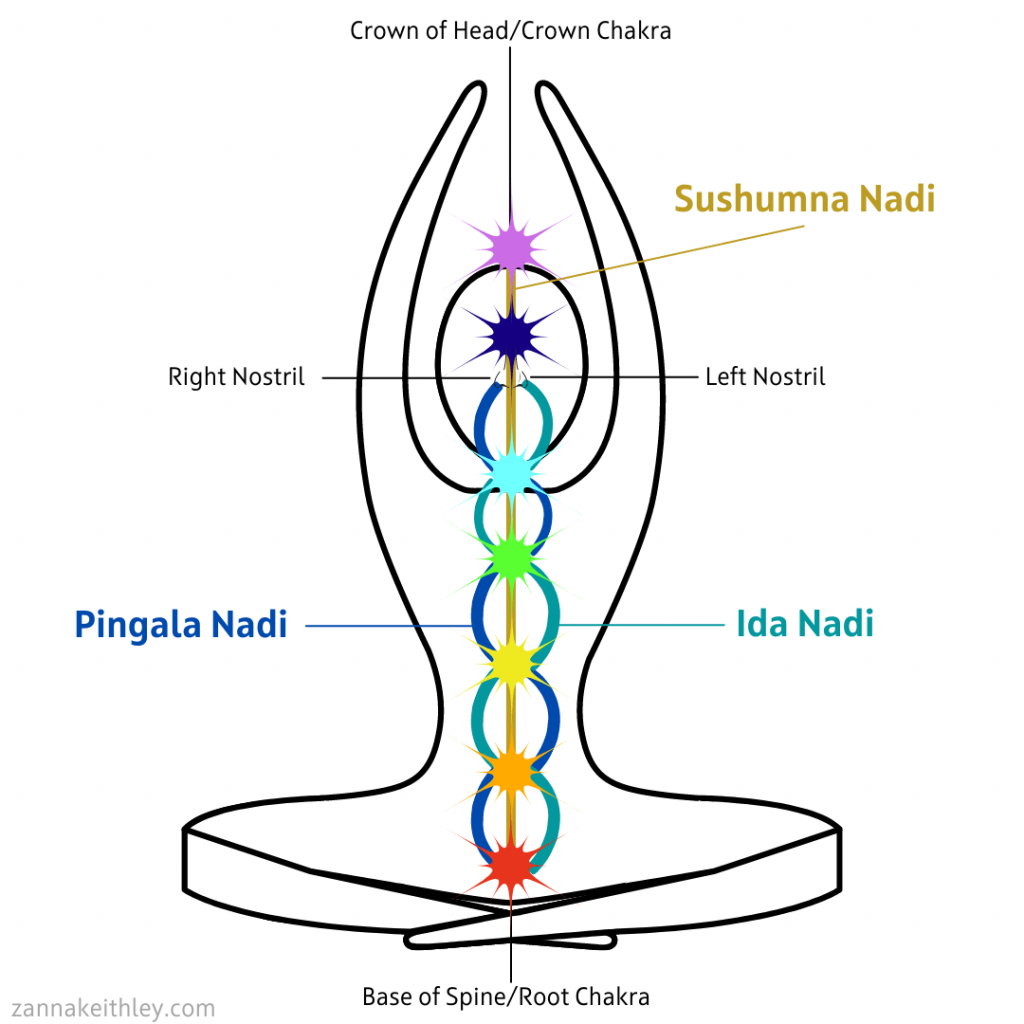
Spiritual Benefits
The spiritual benefits of alternate nostril-breathing can be linked to your chakra system, and more specifically, your nadis.
What are nadis? Nadis are the energy channels through which your life force flows; the word nadi is a Sanskrit word meaning “tube”, “channel”, or “flow.”
Many estimate that you have between 21,000 to 72,000 nadis in your body, though some believe there could be hundreds of thousands or even millions of nadis within each of us. Two of the most important nadis that you should know about are your Ida Nadi and your Pingala Nadi.
Your Ida Nadi is associated with your feminine energy and starts at the base of your spine (at your root chakra). It then runs through your core to your left nostril. It’s associated with right-brain dominance and what you might describe as your softer, darker energy.
Your Pingala Nadi is associated your masculine energy. It starts at the base of your spine (also at your root chakra) and runs through your core to your right nostril. (The Ida Nadi and the Pingala Nadi flow upwards criss-crossing each other at your chakra points.) It’s associated with left-brain dominance and what you might describe as stronger, lighter energy.
When your nadis become blocked, you may experience energy imbalances that can have negative effects on your physical, mental, emotional, and spiritual self. One way to clear energy imbalances is through alternate nostril breathing.
As you can see from the image above, your Ida Nadi runs through to your left nostril, and your Pingala Nadi runs through your right nostril. Alternate nostril breathing is a direct connection to these energy channels.
To know if either of these nadis might be blocked, you can do a quick test now. Gently press any of the fingers on your right hand against the right side of your nose, closing the right nostril. Place the fingers of your left hand below your left nostril. Exhale through your nose, noticing whether you can feel the warm air of your exhale against your left fingers. Then try this with your right nostril.
If you feel little or no air out of your left nostril, your Ida Nadi may be experiencing blockages. This represents your feminine energy, which is tied to surrendering, allowing, and just being.
If you feel little or no air out of your right nostril, your Pingala Nadi may be experiencing blockages. This represents your masculine energy, which is tied to hustling, achieving, and doing.
Neither side is more or less important than the other; when you find a balance between the two, you’re able to live your truest, most authentic life.
If you’re experiencing blockages to either of these energy channels, alternate nostril breathing can be a powerful tool to help clear these blockages.
However, I definitely encourage you not to stop there. It’s important to listen to your inner rhythm. For instance, if you’ve been in hustle mode for too long, your inner being may tell you it’s time to step back for a while and allow yourself to just be.
- You May Also Like: How To Create A Meditation Table (A Complete Guide)
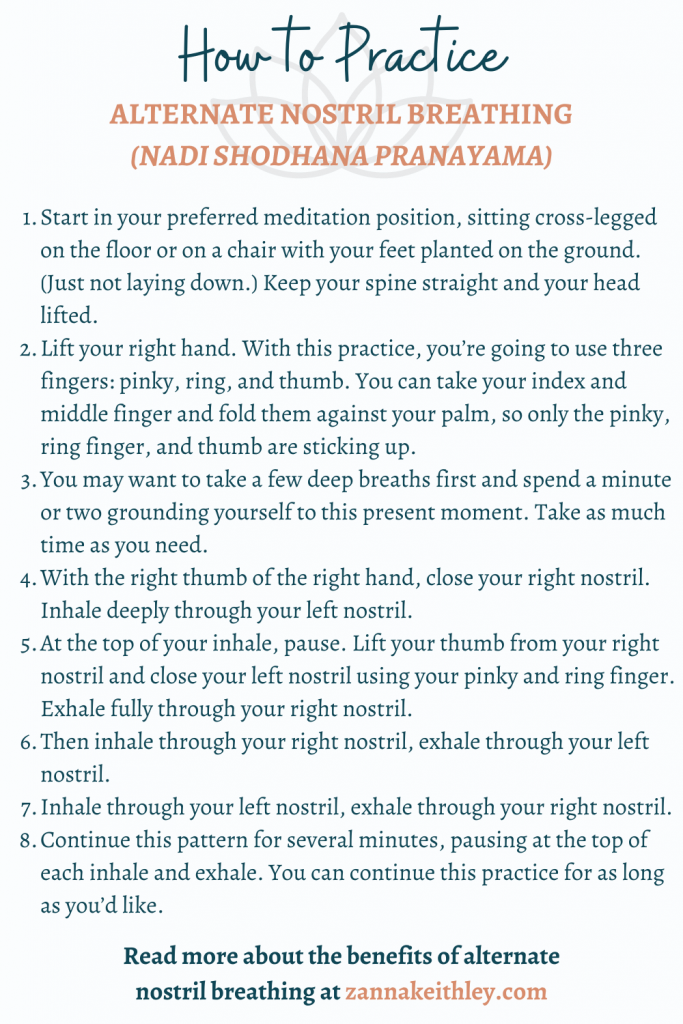
Pin this for later! How to Practice Alternate Nostril Breathing
So are you ready to try alternate nostril breathing? Below, you’ll find step-by-step instructions to begin this powerful practice.
Please note that while my instructions have you starting out in a certain position, you don’t necessarily have to be in a meditation position to do this throughout the day. For instance, if you’re at work and want to practice alternate nostril breathing at your desk, that’s totally fine!
- You can start in your preferred meditation position, sitting cross-legged on the floor or on a chair with your feet planted on the ground. (Just not laying down.) Keep your spine straight and your head lifted.
- Lift your right hand. With this practice, you’re going to use three fingers: pinky, ring, and thumb. You can take your index and middle finger and fold them against your palm, so only the pinky, ring finger, and thumb are sticking up.
- You may want to take a few deep breaths first and spend a minute or two grounding yourself to this present moment. Take as much time as you need.
- With the right thumb of the right hand, close your right nostril. Inhale deeply through your left nostril.
- At the top of your inhale, pause. Lift your thumb from your right nostril and close your left nostril using your pinky and ring finger. Exhale fully through your right nostril.
- Then inhale through your right nostril, exhale through your left nostril.
- Inhale through your left nostril, exhale through your right nostril.
- Continue this pattern for several minutes, pausing at the top of each inhale and exhale. You can continue this practice for as long as you’d like.
As you continue to practice, try to follow your breath all the way from the base of your spine to your nostrils. Both your Ida Nadi and Pingala Nadi begin at the base of your spine and go through your left and right nostrils, respectively. Following the breath from the base of your spine through your nostrils allows you to connect with these energy channels, helping you to clear any blockages in either or both nadis.
Have you tried alternate nostril breathing? What benefits have you found through using breath control practices? Leave your comments and questions in the comment box below!
And for uplifting affirmations, chakra resources, meditation tools, self-love encouragement, and more, be sure to follow me on Pinterest and Instagram!
More Articles You May Like
- How to Protect Your Energy (7 Essential Practices)
- Sacred Self-Care For The 7 Chakras (A Complete Guide)
- Vision Board Ideas To Visualize Your Ideal Future (With Examples)
- 8 Powerful Guided Meditations For Manifesting Your Dreams
- 30 Journal Prompts For Self Growth (& Deeper Self-Love)
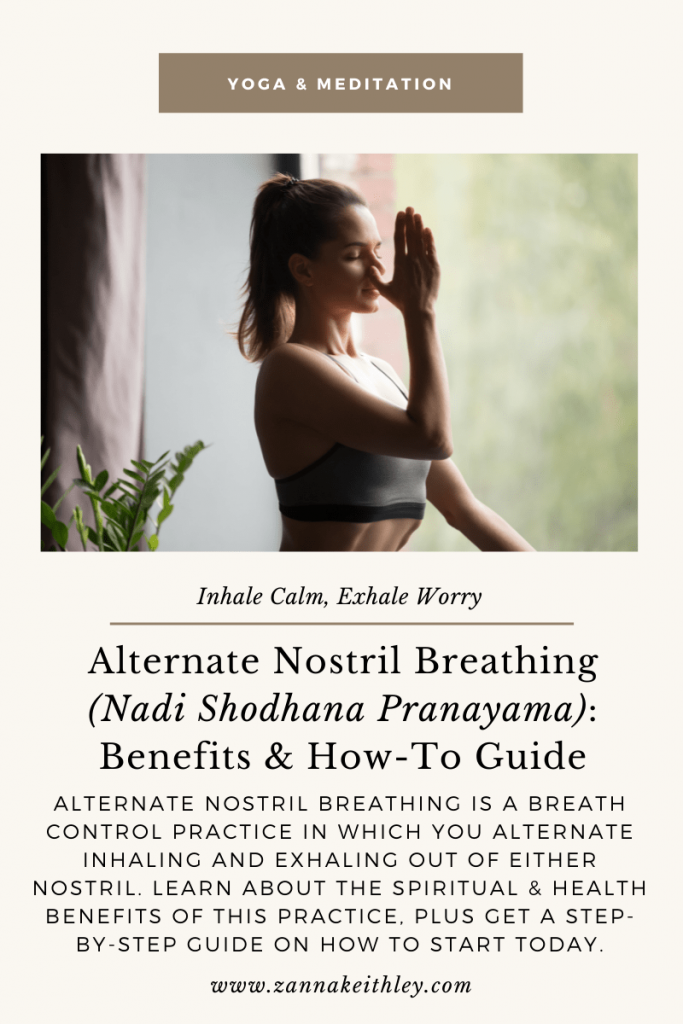
Pin this for later! Alternate Nostril Breathing (Nadi Shodhana Pranayama): Benefits & How-To Guide 
Zanna Keithley is an author, poet, and social media content creator who writes short prose dedicated to inspiring readers to follow their dreams, trust their intuition, and create beautiful and fulfilling lives. You can find her original writing on Instagram @zannakeithley.
-
What Are Mala Beads? (A How-To Guide)
What are mala beads and how are they used? In this article, you’ll get the complete guide to using mala beads in meditation, manifestation, gratitude practices, and more. Plus get my recommendations for beautiful mala beads you can purchase today.
Disclaimer: This post contains affiliate links. If you purchase a product using my link, I may receive a small commission at no extra cost to you. As an Amazon associate, I earn from qualifying purchases. You can read my full disclosure policy here.
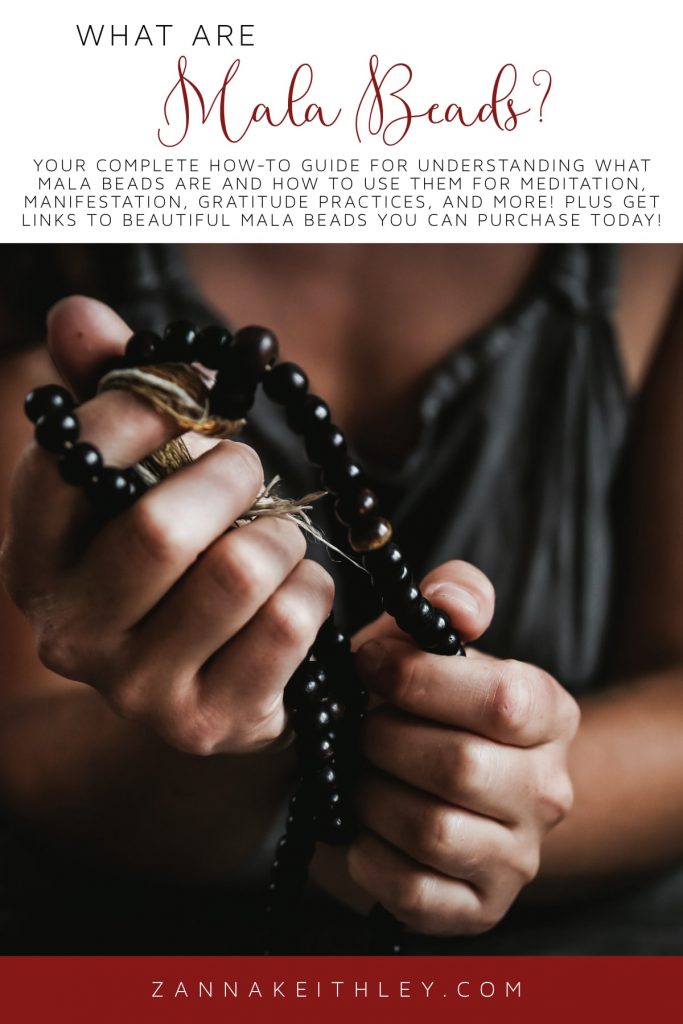
Pin this for later! What Are Mala Beads? A Complete How-To Guide What Are Mala Beads?
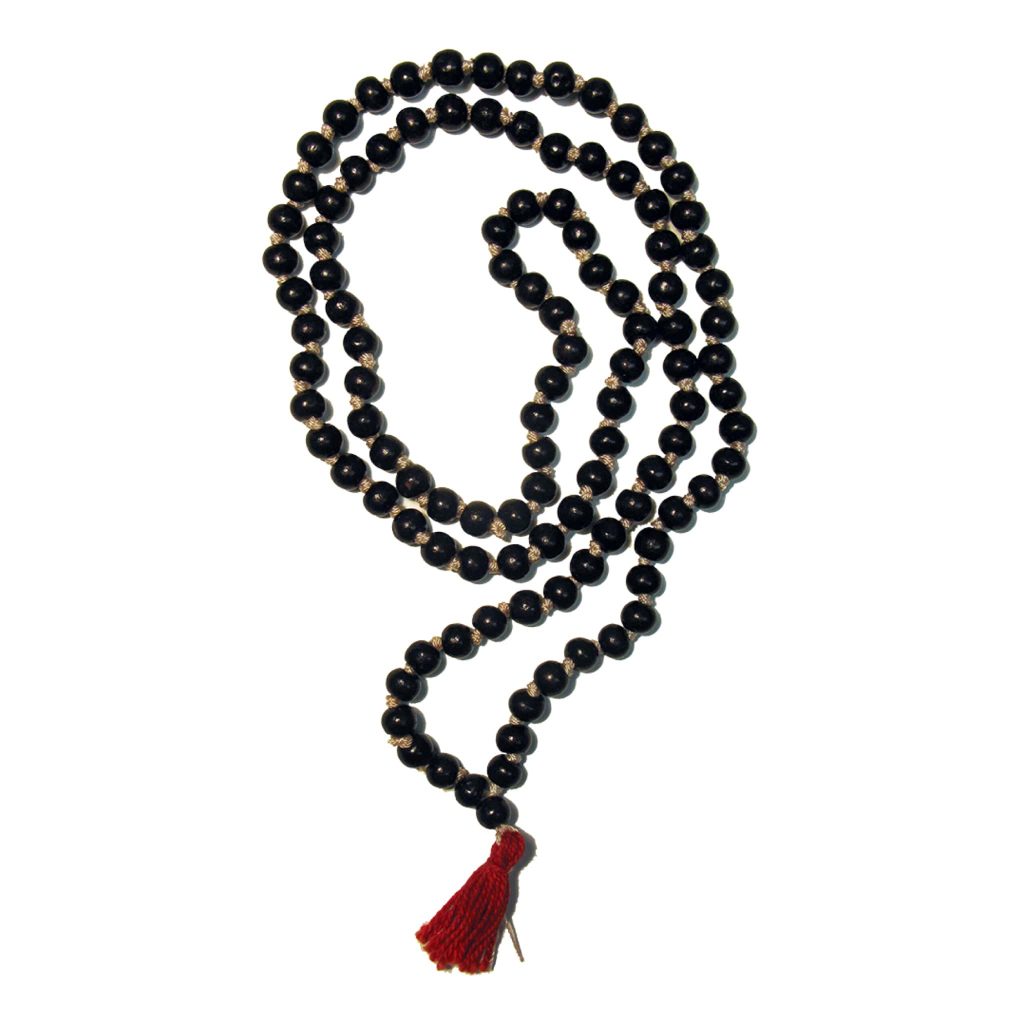
For centuries, many different religions have been using prayer beads as part of their spiritual practice. My grandpa was Catholic, and growing up, I remember seeing him pray with his rosary set between his fingers at least once a day. At his funeral, there were multiple stories told of my Grandpa Moose and his rosary, and there was also a service in which loved ones honored his memory by reciting the Holy Rosary as they held rosary beads.
Mala beads have been used as part of a spiritual practice for over 3,000 years, most prominently associated with Hinduism and Buddhism. However, they have gained widespread acceptance among people of various spiritual backgrounds, and in many cultures, they’re used as part of a non-religious affiliated meditation practice.
So what exactly are mala beads?
Mala beads are a string of beads used as a meditation and mindfulness aid. Typically, they have 108 beads, and while each necklace or bracelet is unique, they generally all have the same standard components, such as the Guru Bead, the Tassel, Marker Beads, and Spacer Beads. We’ll define the function of these different components below.
The most common use of mala beads is to recite a mantra during meditation. They’re also often used as a mindful breathing tool, and you can even use them as part of your manifestation practice. Many people who have a difficult time sitting still during meditation find that incorporating mala beads into their practice helps them to relax and cultivate a greater sense of mindfulness as they meditate.
Below, you’ll learn about the various components of mala beads, how to use them, and how to choose the best mala beads for you.
In This Article
- Common Components Of Mala Beads
- How To Choose Mala Beads
- Benefits Of Using Mala Beads
- How To Use Mala Beads
- Mala Beads To Purchase
Common Components Of Mala Beads
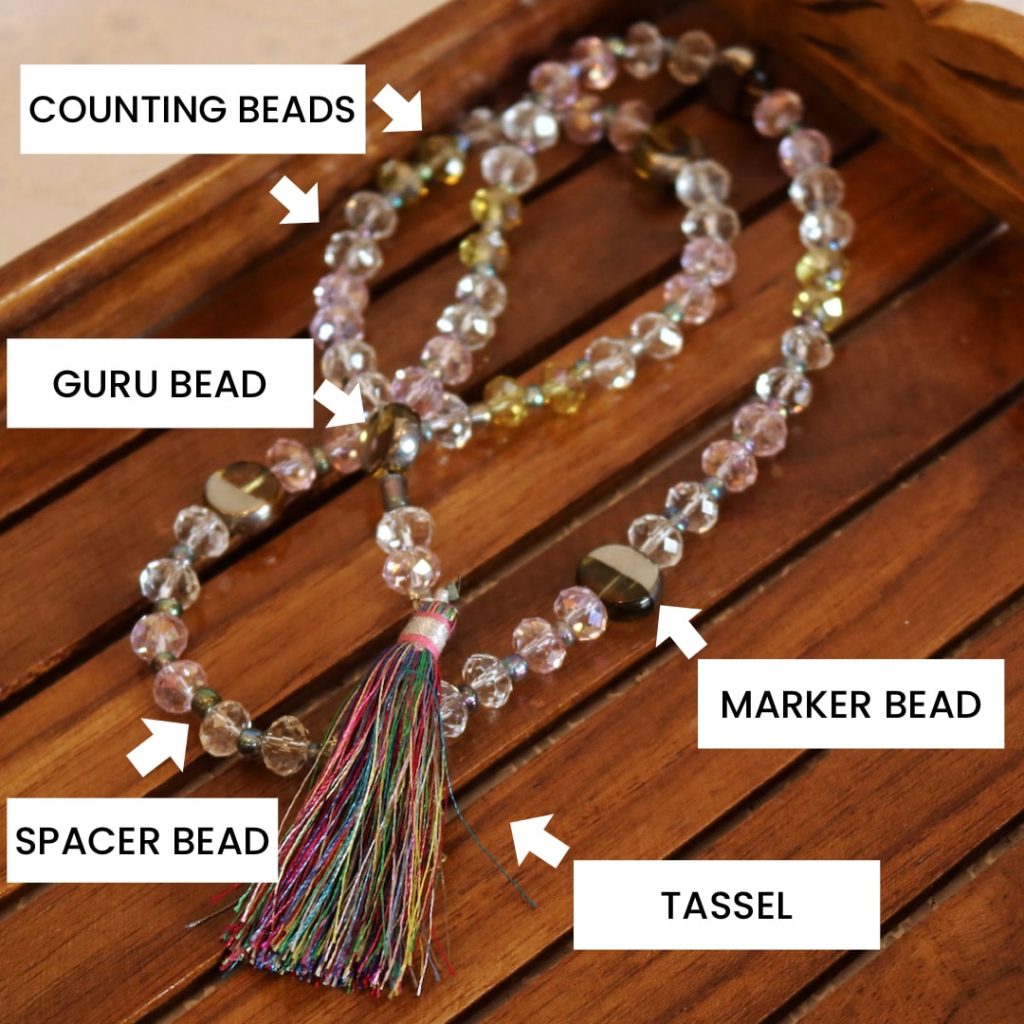
As mentioned above, the common components you’ll see in a mala bead necklace are the following:
- 108 Counting Beads
- Guru Bead
- Marker Beads
- Spacer or Decorative Beads
- Knots
- Charm
- Tassel
Here’s the function of each of these components:
108 Counting Beads
Each mala necklace typically has 108 identical counting or primary beads, though some have less, which is okay. In meditation, it’s typical to hold the mala beads with one hand, draped across your fingers, and touch each counting bead with the thumb and middle finger one at a time, working your way through the entire necklace. You’ll complete one full inhale and exhale with each bead before moving to the next. (More on this practice in the How-To section below.)
Guru Bead
The Guru Bead is your starting point. It is typically bigger and has a distinct look from the other beads on the mala necklace or bracelet, though sometimes it’ll be the same type of bead as the marker beads. You’ll usually find this bead attached to the tassel.
Marker Beads
You’ll typically find four marker beads on a mala necklace, spaced at every 27th bead. These marker beads are usually slightly bigger than the counting beads and often a different color. The marker beads are a way to help you come back to your meditation if your mind has strayed. When you come across a marker bead, it reminds you to return to the present moment. In essence, this is a beautiful mindfulness tool. (Note that not all malas have marker beads.)
Spacer/Decorative Beads
The spacer beads are typically smaller (and often flatter) beads placed between larger beads. Depending on the unique necklace, you may see these in different sections, such as between the Guru bead and counting beads or before and after every marker bead. Note that not all mala necklaces have spacer beads. You do not count the spacer beads during your meditation.
Knots
In a typical mala necklace, you’ll find a small knot between each bead. The knot ensures that if the string breaks, the beads will not be lost. This makes your mala stronger, and the knots can also help with the movement of the mala during your meditation.
Charm
Your mala may or may not have a charm on the end, often in place of the tassel. The charm is typically ornamental, though you may choose one that has special meaning to you, such as a lotus flower or chakra symbol.
Tassel
While the tassel may seem at first appearance to be decorative, it’s actually steeped in deep spiritual symbolism. The strings of the mala loop through all of the beads, coming together through the Guru bead and finishing in the tassel. Some view this coming together of the strings to be symbolic of oneness, both with the Universe and each other. It can also be viewed as one’s desire to reach enlightenment. While I didn’t list it here, you can also view the string or thread that the beads are threaded on to be an important component of the mala, as it’s the link that brings everything together.
Want to create your own mala beads? Check out Alice Peck’s Mindful Beads: 20 Inspiring Ideas for Stringing and Personalizing Your Own Mala Prayer Beads, Plus Their Meanings. This book includes the stories and meanings behind 20 types of beads, plus how to instill your own beads with significance, protection, and promise as you string them.
How To Choose Mala Beads
There isn’t a science to choosing your mala, which is a good thing if you’re like me and tend to follow your intuition when making decisions.
Choosing the right mala beads for you is truly an intuitive practice. As you start searching for the right one for you, you’ll find mala bead necklaces that come in all different colors and often are made of different materials. Some of these materials might include gemstones, pearls, wood, and lotus seeds.
This is one of the most important questions to ask yourself as you’re searching for mala beads:
“Do I find it beautiful?”
It truly is that simple. Find the one that speaks to you. If you’re browsing through mala beads and one nudges your heart, it’s very likely you’ve found the perfect mala necklace for you.
I know from personal experience, however, that it’s easy to get stuck in your own head when making these types of decisions. I have a history of over-analyzing my shopping choices, from what yearly planner I should purchase to what pint of ice cream I want to buy (and promptly consume). I love to follow my heart, but sometimes my heart wants mint chocolate chip and cookies n’ cream.
If you’re having trouble choosing, I find it helpful to step back and ask myself, “What are my intentions?” Do I want to use these mala beads to help me cultivate spirituality? Do I want to feel a connection with a higher power? Do I want to improve my meditations? Is this a way for me to feel more calm and relaxation?
Once you’ve established your intentions, you may have a clearer picture of which mala beads you want to purchase.
Finally, if you’re in a physical store, it’s always helpful to pick up the mala beads and get a feel for them within your fingers. Since you’re going to be holding these beads for an extended amount of time, you want to make sure you choose ones that feel good to you.
- You Might Also Like: How to Create a Meditation Table (A Complete How-To Guide)
Benefits of Using Mala Beads
So why use mala beads? We’ve touched upon this a little bit above, but let’s dive into all the reasons mala beads can be beneficial to you:
- Promotes Mindfulness: As you take conscious inhales and exhales with each bead before moving onto the next, you’re more likely to remain in the present moment throughout your meditation. And if your thoughts do drift, you’ll eventually reach one of the marker beads, which will gently bring you back to the here and now.
- Can Improve Your Meditation: This is especially true if you have a hard time sitting still for extended amounts of time. If you find yourself wanting to move around and fidget while meditating, mala beads are the perfect tool for you to incorporate into your practice. It’s, in a sense, mindful fidgeting. (Kind of?)
- Helps Improve Your Breathwork: I tend to be pretty good at consciously paying attention to my inhales and exhales while meditating . . . at least during the first few minutes. I’ve found that mala beads empower me to be more conscious of my breathing throughout my meditation. And to circle back to the two bulletpoints above, this helps to promote mindfulness and improves my meditation.
- Connection With a Higher Power: The mala is more than just its individual components; it’s an entire unit brought together by the thread that links together the counting beads with the marker beads with the Guru bead with the tassel. This unity represents our own unity: unity with our higher selves, unity with each other, and unity with a higher power.
How To Use Mala Beads
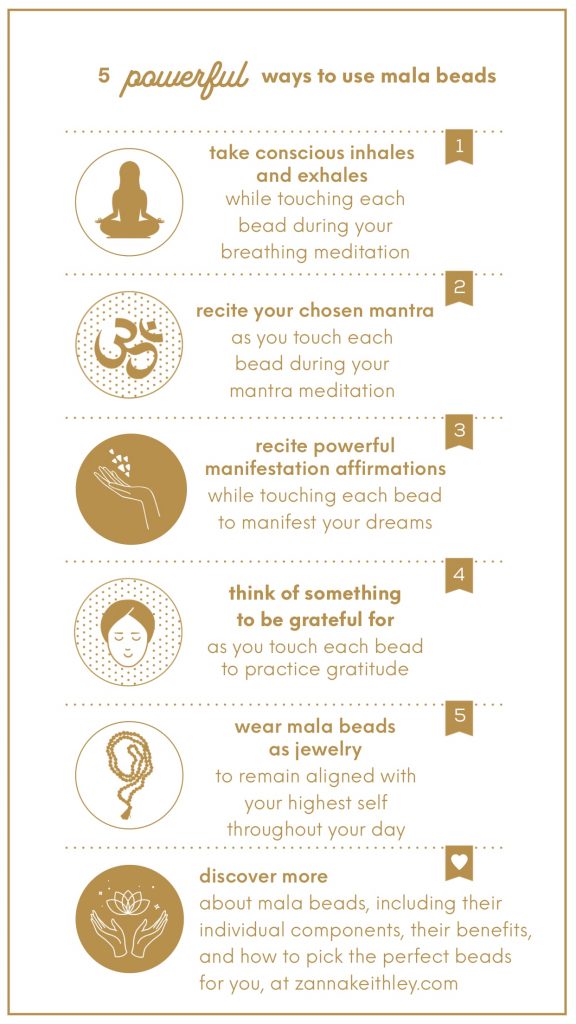
Meditation
While using mala beads in meditation may seem overwhelming at first, it’s actually an extremely simple and effective way to meditate that requires little to no technical ability.
Before using mala beads in meditation, I want you to give yourself permission to be imperfect, especially as you’re first learning. It’s okay if you don’t follow all of the steps perfectly when you’re just starting. The most important thing is intention. If your heart is in the right place, and your intentions are positive, this is far more important than perfection.
Furthermore, you can use your imperfections as a way to practice mindfulness, non-judgmental awareness, and compassion. Were you holding your mala beads with the incorrect fingers? Was your mind so distracted, you missed the marker beads? Notice, accept, and keep going.
Here’s your step-by-step directions for how to use mala beads in meditation. I’ll discuss some alternative uses below.
Breathing Meditation
- Find a quiet spot where you won’t be disturbed. If you already have an ongoing meditation practice, you may already have a time and space that works for you. If you use the full 108 beads, this practice typically takes 30 minutes. If you decide not to use the full 108 beads, that’s okay. You can choose to stop at one of the marker beads instead.
- Drape your mala beads over your non-dominant hand. Make sure you feel comfortable and that the beads will be easy to move. With your thumb and middle finger of your dominant hand, gently touch the Guru bead. You typically do not use the index finger in this practice, as the index finger is connected to the Ego.
- Touch the first counting bead, and take one full inhale and exhale. Then, move to the second bead. Continue this process, inhaling and exhaling once per bead. You’ll stop when you make your way around back to the Guru bead.
- As mentioned above, you can choose to shorten your meditation by stopping at one of the marker beads. Alternatively, if you wish to extend your meditation, you can turn the mala around and start again. Note that it’s common practice not to jump over the Guru bead. So if you’re extending your meditation, rather than jumping over it to start back at the first counting bead, you’d turn the mala around and go in reverse.
Mantra Meditation
I was first introduced to using mala beads in meditation through the practice of mantra meditations. A mantra meditation is one in which you repeat a specific mantra throughout the meditation (traditionally, 108 times). This form of meditation is also known as japa meditation.
Your chosen mantra should be something that resonates with you. It can be a sacred word, affirmation, divine name, or simply a word such as love or peace.
Here are a few examples of possible mantras you could use:
- Aum or Om (This has many rich and deep meanings. It is known as the word of God, the sacred sound of the Universe, and the union of the mind, body, and spirit.)
- Om Shanti Om (Universal Peace)
- Om Shanti Shanti Shanti (Peace of Mind, Body, and Speech)
- Love
- Peace
- I am love.
- I am peace.
- I am worthy.
- I am enough.
- Love guides me.
To perform a mantra meditation using mala beads, you’ll essentially take the same steps you do with the breathing meditation. However, in place of the conscious inhales and exhales, you’ll repeat your chosen mantra as you touch each bead. You can repeat your mantra either internally, at a whisper under your breath, or out loud. Do what makes you feel most comfortable.
Finally, here’s great 5-minute tutorial on how to hold and use your mala beads.
Alternative Uses
While meditation is the most common way to use mala beads, it’s not the only way. Here are a few other practices for using mala beads:
- Wear Your Beads: Wearing your mala beads is more than just a fashion statement; it’s a profound practice to connect you to your highest self and cultivate mindfulness in your life. When you wear your beads, you can set the intention to remember the same peace and serenity you feel when you’re meditating. The most common ways to wear your beads are as a necklace or wrapped around your wrist as a bracelet.
- Manifestation: The most powerful way to use mala beads for manifestation is to recite affirmations for manifestation as you touch each bead. To do this, you’d follow the same steps I wrote above for the breathing meditation, but in place of the conscious inhales and exhales, you’d recite a positive affirmation. As you do this, consciously make sure to feel the positive energy of the affirmation flowing through you. It’s up to you whether you’d like to recite different affirmations or repeat the same affirmations throughout. For some ideas of affirmations to use, here are some Law of Attraction affirmations and manifestation affirmations to get you started.
- Gratitude Practice: This has become one of my personal favorite ways to use mala beads. Again, you’ll follow the same instructions as above for the breathing meditation, but here, you’ll think of one thing you’re grateful for as you touch each bead. I know it may seem like 108 things is a lot, but it actually becomes pretty easy once you get going. For instance, you can think about each individual part of your body, from your eyes to your lips to your lungs, arms, stomach, legs, and feet (and everything in-between). You can also think about individual people, memories, and luxuries we often take for granted, like air conditioning and running water.
- You May Also Like: 9 Guided Meditations For Manifesting Your Desires
Mala Beads to Purchase
If you’re looking for beautiful mala beads to incorporate into your meditation practice, check out the links below! Note that most of the selections below have more color and stone options when you click on the link.
And that’s it! Have you ever used mala beads in your meditation practice? Or do you have questions about how they’re used? Share your tips and questions in the comment box below.
And for more resources on spirituality, meditation, manifestation, and all things self-love, be sure to connect with me on Instagram and Pinterest, where I’m posting positive affirmations and empowering messages daily.
More Articles You May Like
- How To Use Affirmation Cards (A Complete Guide)
- 500 Beautiful Things To Be Grateful For Today
- Vision Board Ideas To Visualize Your Ideal Future (With Examples)
- 9 Powerful Guided Meditations For Manifesting Your Dreams
- 11 Beautiful Poetry Books About Self-Love & Acceptance
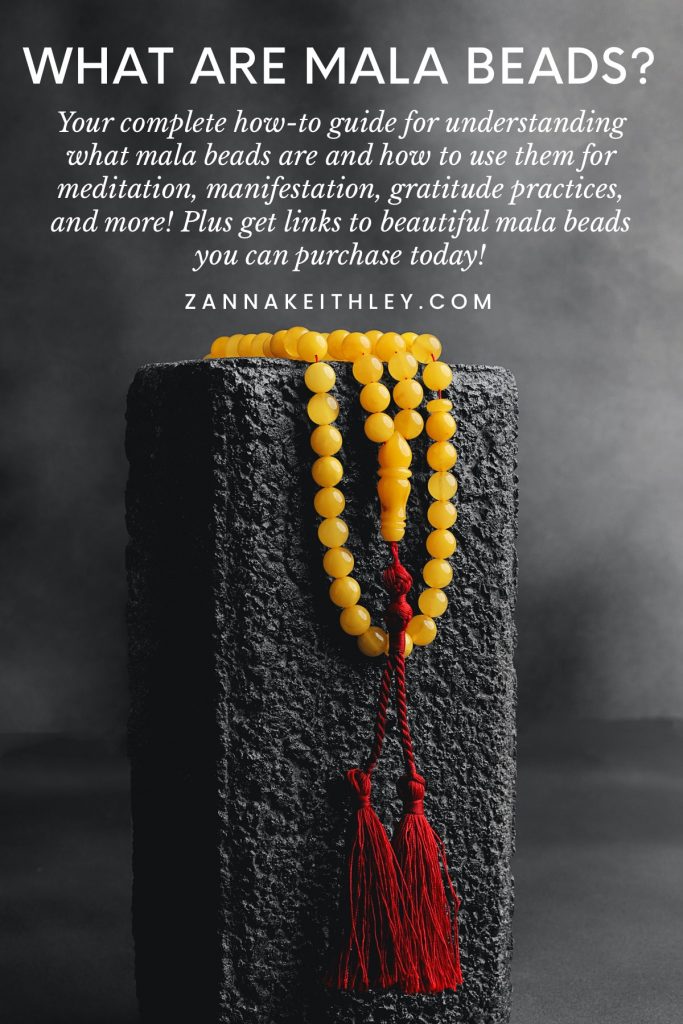
Pin this for later! What Are Mala Beads? A Complete How-To Guide 
Zanna Keithley is an author, poet, and social media content creator who writes short prose dedicated to inspiring readers to follow their dreams, trust their intuition, and create beautiful and fulfilling lives. You can find her original writing on Instagram @zannakeithley.
-
9 Guided Meditations For Manifesting Your Desires
In this article, discover nine powerful guided meditations for manifesting love, abundance, success, and so much more. (With links to each meditation so you can begin your manifesting journey today.)

Pin this for later! 9 Guided Meditations For Manifesting Your Desires Getting Started: Guided Meditations For Manifesting
Meditation is a profound way to connect to your heart’s deepest dreams and desires. Not only can meditation help you to cultivate inner peace, tap into your intuition, and lean a little deeper into gratitude, but it can also be a powerful way to visualize and align with the thoughts, feelings, and images of having your desires in this present moment.
And guided manifestation meditations are a powerful place to start.
First, what exactly is a manifestation meditation?
A manifestation meditation is a meditation specifically designed to help you align with the positive thoughts and emotions of your dreams and desires, lifting your vibrations so that you become a magnet for all of your deepest dreams.
Guided meditations for manifesting can be an easy yet profound way to help you set intentions, cultivate gratitude, lift your vibration, and visualize the truest, most beautiful life you can imagine for yourself.
And the best part? They don’t actually have to take very much time.
As you’ll see, most of the guided meditations below are only about ten minutes long, yet they’re filled with tools to help you embody the vibration of already having your dreams and desires in this present moment.
While you can do these meditations any time of the day, I especially love to listen to them in the morning shortly after I wake up. I’ve found that by starting my day with a meditation, I set a positive foundation for the day ahead.
And when you specifically listen to a guided meditation for manifesting your desires in the morning, you can carry that positive energy from the meditation with you throughout the day.
Below, I’ve linked to nine of my favorite guided manifestations for manifesting love, abundance, and more. You’ll notice that all of these meditations are available for free through Insight Timer. I have no affiliations with Insight Timer and don’t receive anything for these links. I’ve been using Insight Timer for years, and it’s by far my favorite app on my phone. I’m including it here because I wholeheartedly recommend it.
If you want to download the app, you should be able to find it on your device’s app store. You can also check out their website to learn more about what they offer.
I sincerely hope these guided meditations for manifesting your dreams can serve and support you on your path as you move forward in creating a life that feels good and true to you.
And know that it doesn’t matter if you’re new to meditation or an experienced meditator; these meditations will serve you throughout your entire journey. (I’ve been meditating for years, and I still come back to many of these same meditations repeatedly.)
Guided Meditations For Manifesting
Manifesting A Positive Day
Liza Colpa’s entire catalog of guided meditations is a treasure chest filled with beautiful and profound tracks dedicated to helping you set intentions, cultivate gratitude, and release what no longer serves you to make space for more love, peace, and abundance to come into your life. Her voice is effortless and soothing, and I find myself coming back to her meditations multiple times a week. With over 425k plays, her 10-minute Manifesting A Positive Day is her most popular track – for good reason. In this track, Liza gently guides you through a series of affirmations as well as a visualization practice designed to help you envision your best possible day. When you’re finished with this track, you’ll be ready to step forward feeling a sense of confidence, contentment, trust, and groundedness that will remain with you throughout your day.
Attracting All That You Desire
Carrie Suwal is another Insight Timer teacher who has an effortlessly gentle and soothing voice that will help you to feel relaxed and at peace as you follow her soft yet powerful guidance. Her Attracting All That You Desire meditation uses practices rooted in visualization, gratitude, affirmations, and positive vibrations to help you connect to your goals and dreams. This is a beautiful meditation for beginners and experienced meditators alike. If you’re like me, you’ll want to bookmark it and repeat it over and over again.
Being In The Energy of Millions, Billions, Trillions
If you’re looking to manifest financial wealth and prosperity, Hayley Carr’s Being In The Energy Of Millions, Billions, Trillions is the perfect guided meditation to help you vibrate at the frequency of unlimited abundance. In this powerful meditation, Hayley guides you to visualize receiving your desired amount of money (no amount is too big) as you feel all the wonderful feelings of having that amount of money right now. Hayley’s voice and words are pure magic. This is another one you’ll want to save and play on repeat.
Achieve Your Greatest Desires
Vanessa Michele’s Achieve Your Greatest Desires is another powerful manifestation meditation that takes you on a journey of envisioning your ideal life. Before diving into the visualization, Vanessa does a wonderful job of helping you to relax, soften your muscles, and breathe intentionally and effortlessly. She then helps you to notice your current vibration and gently guides you to raise your vibration through visualizing your deepest dreams and desires surrounding you right now. Vanessa’s calm guidance will leave you feeling grounded, centered, and ready to create the beautiful, abundant life of your dreams.
Believe
If you’re feeling uncertain about your ability to manifest the life you want, Annemaree Rowley’s Believe is the perfect meditation to help you realign with your true power. As she states, positive thoughts will bear positive fruit, and negative thoughts will bear negative fruit. But there’s no fake positivity here. Through her calm yet strong guidance, Annemaree gently guides you to a place of deep trust, knowing, and belief in your power and your path.
Manifest An Abundant Life
Amanda Sellers’ Manifest An Abundant Life is another profound guided meditation that uses the power of visualization to help you vibrate at the frequency of having your desires right now. What I love about this meditation is that Amanda begins by guiding you to harness the power of your breath to ground you in this moment. She then reminds you that the first step in manifesting is being grateful for all that you already have. Through gratitude, visualization, and positive vibrations, this guided meditation for manifesting an abundant life will help you walk into your day feeling inspired and empowered.
Live Your Desire Now
Lucy Love’s Live Your Desire Now is all about knowing what you want and focusing your energy on the presence of it as if it’s already yours – the perfect recipe for manifestation. Lucy gently guides you from living externally to living internally, focusing on your own inner world. In a calm and relaxed space, you’re called to think about something specific that you authentically desire and begin imagining what it would look and feel like to have your desire today. This short and sweet track is the perfect meditation for living your desired manifestation today.
New Moon Meditation
This one’s a little different, as it is specifically created for manifesting with the energy of the New Moon. In her New Moon Meditation, Camilla Sacre-Dallerup guides you through the process of setting intentions that align with what you truly want in life. I especially love the calming visualization experience she takes you on, as you connect with the energy of the New Moon and the new beginnings it represents. This is a quiet, soft, gentle guided meditation that helps you to focus on what truly matters in life – what you want to give your attention to, what you want more of, what’s worth giving your energy to – and release all the rest.
Manifest Love – Creative Visualization
No matter where you are in your life journey, Sharon Kirstin’s Manifest Love meditation is a powerful reminder that love has never left you. Sharon gently reminds you that the key to manifesting the love you desire isn’t outside of you; it’s within. I love all the wisdom Sharon shares, especially the gentle reminder that we must take intuitive action to manifest what we truly want in life. Sharon takes you on a powerful visualization journey where you see yourself connected to and wrapped in love at all times. By vibrating at the frequency of unconditional love, you invite even more love to come into your life – thus becoming a magnet for everything you desire.
What are your favorite meditation apps? Do you have any favorite guided meditations for manifesting love, abundance, and more? Share your favorites in the comment box below!
And for more manifesting tips, daily affirmations, and lots of positive vibrations, be sure to follow me on Pinterest and Instagram.
More Manifestation Resources
- The Importance Of Taking Small Steps (For Manifestation)
- How To Manifest On Paper In 5 Easy Steps
- Morning Routine Checklist For Manifestation (Free Printable PDF)
- Manifestation Challenge: Free 30-Day Manifestation Calendar
- Candle Colors For Manifestation (A Complete Guide)


Zanna Keithley is an author, poet, and social media content creator who writes short prose dedicated to inspiring readers to follow their dreams, trust their intuition, and create beautiful and fulfilling lives. You can find her original writing on Instagram @zannakeithley.
-
Shower Meditation: 6 Ways to Meditate in the Shower
Can you really meditate in the shower? It may seem weird at first, but shower meditations have become one of my favorite practices for cultivating mindfulness, connecting with my inner self, and instilling peace and tranquility within. Discover 6 powerful practices you can start using today for an effective shower meditation!
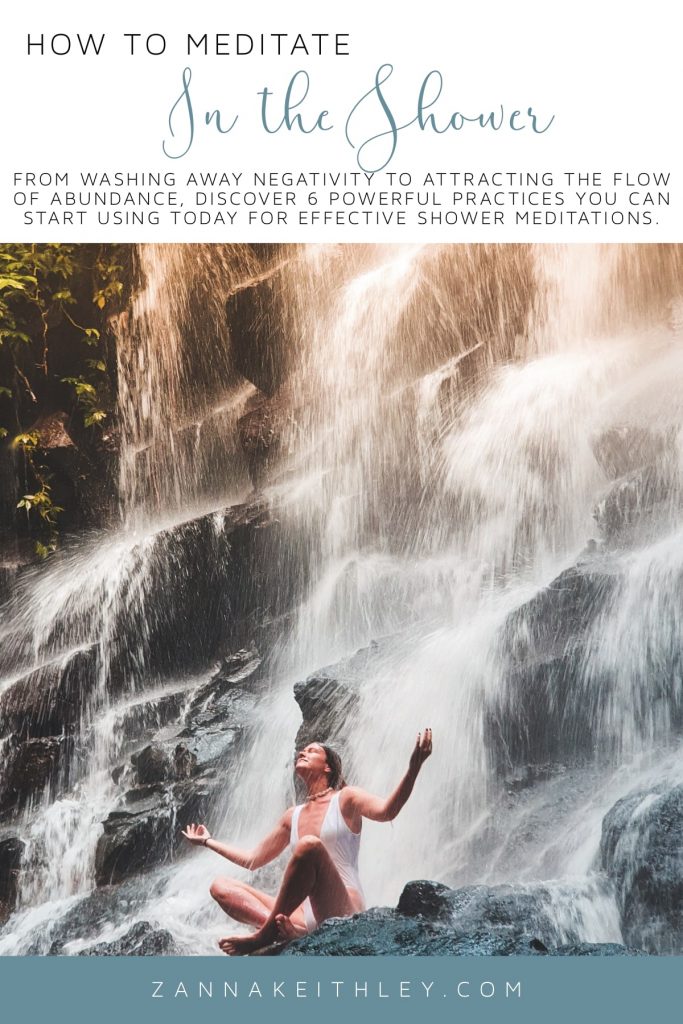
Pin this! How to Do a Shower Meditation (6 Powerful Practices) Debunking Meditation Myths
What do you think of when you hear the word meditation?
Here are some of the thoughts I once had, before I started meditating:
- Meditation is for monks and really special people who have the elusive power of being able to completely clear their head of thoughts.
- Meditation requires perfect silence and stillness.
- Meditation is hard.
- Meditating requires you to not have any thoughts at all.
- Meditation takes hours every day.
I’m sure there were other limiting beliefs swirling around in my head, preventing me from even entertaining the notion of trying to meditate. The biggest limiting belief? “I can’t do it. It’s too hard. Meditation just isn’t for me.”
Depending on where you are in your meditation journey, you may also have experienced similar thoughts and beliefs, or you might still hold some of these beliefs with you now. And that’s okay. One of the greatest benefits of meditation is the ability to cultivate mindfulness: non-judgmental awareness in the present moment.
That means noticing any negative thoughts or limiting beliefs you have without placing labels on them as good or bad.
You might already sense where this is headed here. Eventually, external influences came into my life that re-framed my perspective on meditation. So finally, I decided to give it a shot. And with time and consistency, I learned that all the beliefs I had about meditation were wrong.
Meditation isn’t for only really special people. It doesn’t require perfect silence or stillness. You don’t have to clear your head of all thoughts. And it doesn’t take hours.
And to turn that on its head:
Meditation is for everyone. You can meditate when it’s noisy. You can meditate while you’re moving. You can have thoughts the entire time you’re meditating. And you can meditate in five minutes. Or three minutes. Or one minute. In fact, time doesn’t matter at all.
Can You Really Meditate in the Shower?
When I first started shower meditations, I didn’t actually call them meditations at all. I wasn’t purposely trying to label what I was doing. I just wanted to relieve my mind from persistent worrying thoughts.
The shower is an interesting place. In Untamed, Glennon Doyle writes about how her kids describe the shower as this magical portal to brilliant ideas that just come to them effortlessly. I remember reading this part and thinking, “Yep! I know exactly what they’re talking about!”
I’ve had some of my most brilliant and creative ideas in the shower. (Well, in my head, they’re brilliant . . .) Sometimes, I’ve had several different ideas come to me at once, tumbling through my head like dominoes.
I’ve also spent entire shower sessions lost in worries and anxiety, so engrossed in my own thoughts that by the end of the shower, I don’t even remember washing my hair. (A smell test confirms I did.)
As I began to cultivate more mindfulness in my life, I started to pay closer attention to the paths my mind would wander in the shower. I have a lot of negative thoughts in here, I realized.
But what if it didn’t have to be that way?
What if I could change my story and use the shower as a place to wash away those negative thoughts and realign with my highest, truest self?
So I decided to take back my story and change the way I approached showering. I started to be intentional with my thoughts. And because I tend to shower in the morning, this proved to be an effective way to start my day on a positive note.
Below, I list several different methods you can use for a powerful and effective shower meditation. I’ve used all of these practices, and I can attest that they don’t just change the way I approach showering; they positively affect my thoughts, emotions, and overall mood for the entire day.
And to answer the question I posed in the heading: yes, you can absolutely meditate in the shower. One of the myths people often hold about meditation is that it requires sitting still cross-legged on the floor. And while I do meditate like this every morning, I’ve also done walking meditations, laying down meditations, and even quick breathing meditations when I get anxiety at the grocery store.
You can meditate anywhere it feels right to you. And the shower is a perfect place to start.
Shower Meditation #1: Wash Away Negativity
Where do your thoughts go when you’re in the shower? Do you worry about the day ahead? Do you replay events of the past 24 hours? Do you create imaginary worst-case-scenarios in your mind of things that probably will never happen?
Notice where you feel tension in your body. Notice what you’re currently worried or stressed about. Simply notice anything going on internally that doesn’t serve your highest good.
Now close your eyes. Take a deep, soulful inhale and a rejuvenating exhale. Concentrate on how the water feels on your skin. As the water falls around you, imagine it washing away any negative thoughts and emotions you’re holding onto. The water takes your tension and carries it to the drain. Anything that doesn’t serve your highest good is washed away from your body.
Feel your body becoming lighter. Your mind is clear. Your heart is open. Anything that doesn’t serve or support your total well-being has been washed away, swirling down the drain, where it will be cleansed by the earth.
When you’re done, smile and express gratitude. Feel the strength of your body, mind, and spirit.
You are worthy, powerful, whole, and more than enough. Carry those feelings with you throughout your day.
Shower Meditation #2: The Flow of Abundance
This is similar to the practice above, but instead of imagining the water washing something away from you, you visualize the water carrying something to you.
Close your eyes and take a deep breath. What are you seeking in your life today? Whatever you’re seeking, you are going to attract an abundance of it to you.
If you’re seeking creative ideas, imagine an abundance of inspired ideas and creative thinking washing down on you.
If you’re seeking financial prosperity, visualize gold coins and beautiful jewels raining down all around you.
If you seek peace, envision the water carrying infinite peace throughout your entire being.
Whatever it is that you seek, know that it is always available to you. And because all that you seek is already within you, you’re literally creating everything you desire within and attracting it to your being.
I like to think of the water as a metaphor for your limitless capacity to create and have anything you want. The water is constantly flowing, and because you know more is coming, you don’t have to cling to every droplet that falls down on you. You can appreciate when it comes, let it go, and find gratitude knowing that more is on its way.
The same is true for abundance. You have access to an infinite flow of abundance. It is your birthright, and it will never be taken away from you. So instead of clinging onto the inspired ideas, financial prosperity, peace, and anything else you desire, you can simply let it go, knowing more is on its way.
Shower Meditation #3: Positive Affirmations
A positive affirmation is a present-tense statement that is designed to uplift and encourage while boosting self-belief and supporting your overall wellbeing.
One of my favorite ways to lift my vibrations, take back my story, and release anything that doesn’t support my highest good is through positive affirmations.
I use positive affirmations when I’m driving, working out, at the grocery store, and throughout the day to affirm my worthiness and remind myself of my inherent limitlessness.
So I guess it’s no surprise that I started using positive affirmations in the shower, too.
To start, come up with a list of positive affirmations that resonate with you. If you need help getting started, here’s a list of positive affirmations for success, one for self-confidence, spiritual affirmations, and affirmations to end your day. If you’re well-versed with using affirmations and would rather come up with some on the spot, that’s okay, too!
If you want, you could try printing your affirmations and laminating them so you can hang them up in front of you to see. I haven’t tried this, but I imagine with a little ingenuity, you could get it to work.
As you shower, take conscious inhales and exhales. I like to spend a minute or two envisioning the water washing away and carrying any negativity from my body. Now, you can start saying your positive affirmations, either internally or aloud. Continue to repeat as you go about your normal showering tasks.
If you want to take it a step further, I like to close my eyes for a minute while I’m doing this. I’ve noticed that when I close my eyes in the shower, I don’t see pure darkness; instead, I see a faint golden hue shining behind my eyelids. you may notice this, too. Breathe into this light as you say your affirmations: I am worthy. I am enough. I am strong. I am powerful. I am loved. Envision the golden light surrounding you, cloaking your entire being. Feel the positive words in every cell of your body.
As you step out of the shower, you’ll find yourself feeling lighter, more peaceful, and simply radiant. This is one of my favorite ways to begin the day.
Shower Meditation #4: Golden Light
That golden light I mentioned above?
This light is always there. It’s always within.
And there are so many powerful ways to connect with this light to support your highest good.
One meaningful practice is to simply envision this light surrounding you as you close your eyes. See the light growing from within, radiating through every cell of your being. Spend several moments consciously connecting with your inner light. How does it make you feel? Peaceful? Empowered? Loved? Feel these positive emotions within.
You can also envision the water droplets themselves as beams of light raining down on you like loving nudges from the Universe. These nudges are a reminder that you’re not alone. You are always supported, protected, loved, cherished, treasured, and adored. Concentrate on the feel of the water hitting your skin. When you imagine these droplets of the Universe’s loving light, how does that make you feel?
Sometimes, I like to stand in the light and simply be. When I’m tired and weary, I feel the light surrounding me. In this moment, I know I don’t have to do or be anything. The Universe is taking care of me.
Shower Meditation #5: Chakra Healing
If you’re familiar with chakras, including the color and locations of each of the seven main chakras, you might enjoy doing a chakra meditation from time-to-time.
While you can definitely do this out of the a shower, I find something soothing about the warmth and peacefulness of the shower that makes this an especially perfect time to align the chakras.
Admittedly, I’ve always multi-tasked in the shower, so while my conditioner is setting in my hair, I’ll use this time to wash the rest of my body or shave my legs. But I’ve found that not forcing myself to multitask and just standing still for a minute or two can often be more supportive of my overall well-being. One of my favorite things to do during this time is get in touch with my chakras.
To start, close your eyes and take a deep breath. I usually start with my root chakra and work my way up, but if you’d rather start at the crown and work down, that’s totally fine. Inhale deeply, and as you inhale, see a bright red light at your root chakra growing bigger. As you exhale, this light grows brighter. Repeat this for one or two more cycles. Then, move up to your sacral chakra and repeat this process. Continue this until you finish at the crown. When you’re finished, imagine the light of energy flowing freely throughout your body.
If you’d like, you can end this with an empowering mantra, such as “All is well,” or, “I am aligned with my highest self.”
Shower Meditation #6: Breathing Meditation
Sometimes, when nothing else seems to work, what your soul needs is a simple breathing meditation.
There’s nothing fancy here. But simply paying conscious awareness to your breathing is a powerful way to cultivate mindfulness and restore harmony within.
Inhale deeply. If you want, you can inhale to a count of four or five. Pause for a brief moment when you reach the end of your breath. Then exhale for a count of five or six. Continue doing this as you shampoo, condition, wash your body, shave, and complete your various shower tasks.
There’s a good chance that as you do this, you’ll notice your thoughts begin to stray. That’s okay. When you notice your thoughts straying, don’t suppress them, and don’t be hard on yourself. Simply notice, and then let that thought drift away as you come back to your breath. Every time you have a thought, allow yourself to return to your breath. You may do this dozens of times throughout your shower, and that’s okay.
This is a simple yet meaningful way to meditate in the shower, as it returns you to the present moment, helps you to cultivate a sense of mindfulness, and promotes peace and tranquility within.
And there you have it: six powerful ways to meditate in the shower. Have you ever tried meditating in the shower? What are some of your favorite shower meditation practices? Leave a note in the comments below!
For more meditation tips, plus a daily dose of positive affirmations and self-love, be sure to connect with me on Instagram and Pinterest!
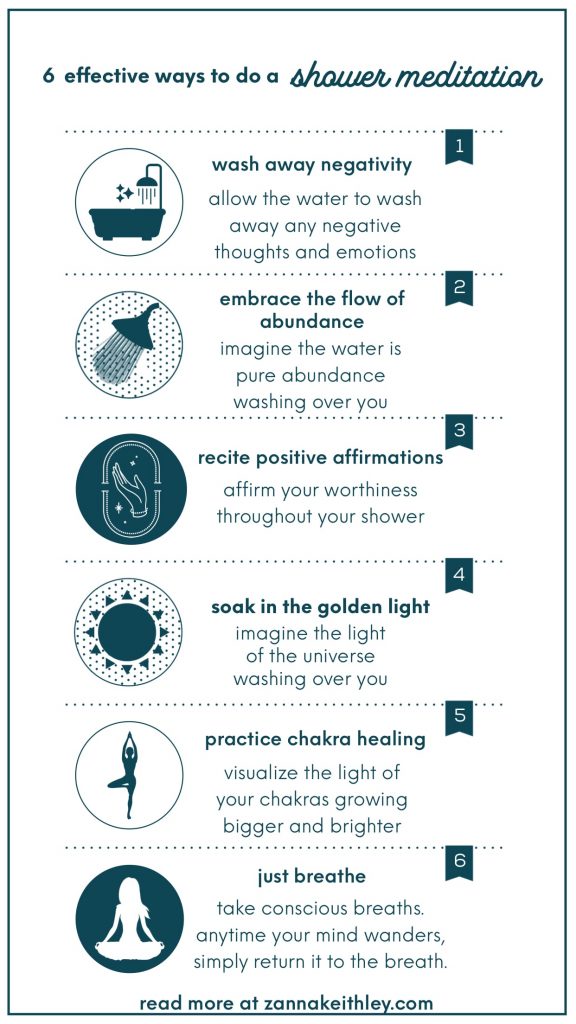
Pin this! How to Do a Shower Meditation (6 Powerful Practices) 
Zanna Keithley is an author, poet, and social media content creator who writes short prose dedicated to inspiring readers to follow their dreams, trust their intuition, and create beautiful and fulfilling lives. You can find her original writing on Instagram @zannakeithley.

